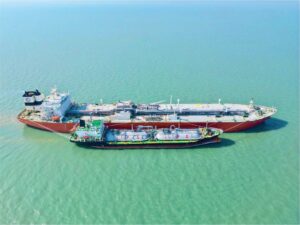Author: admin
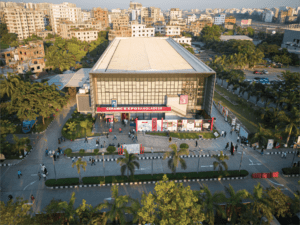
The Ornaments of The Ceramic Expo 2022
The Ceramic Expo Bangladesh-2022 was an event that brought in some 25,000 visitors and the ceramic verse under one roof. Customers and brands were connected throughout all day during the three-day-long expo, and at the end, the organising authority, Bangladesh Ceramic Manufacturers and Exporters Association (BCMEA), was overwhelmed by the tremendous response it received from the industry and the community. It was the third expo which was initiated with sponsorship support from renowned national and international brands. Locally, BCMEA was blessed with three co-sponsors for the Ceramic Expo Bangladesh 2022 – Mir Ceramic, BHL Group, and Stella Luxury Sanitaryware. Dressed in their brand colours, the sponsors decorated their pavilions with the best from their catalog, hoping to gather leads, showcase exclusives, and connect one business to another and directly with customers. BHL Ceramic Company Ltd. introduced PERLA Sanitary ware at the Ceramic Expo Bangladesh-2022 BHL Group, a conglomerate with its flagship concern BHL Ceramic Company Ltd., having four ceramic brands under its housing, was a co-sponsor of the Ceramic Expo 2022. During the event, they showcased products from four of their brands, and the front-runner was the newly introduced Sanitaryware brand, Perla Sanitaryware. The conglomerate manufactures for BHL Ceramic, KONGFU Ceramic, VINCI Ceramic, and PERLA Sanitaryware, all of which were featured at the event. With a production capacity of 33,000 sq.m/a day, expected to become 40,000-sq.m/a day manufacturer soon, the emerging brands from BHL Group have stepped into the world of ceramics, and they hope to see the subsidiaries flourish. Entering into BHL Ceramic Company Ltd. Pavilion at the expo, visitors saw the ambiance being set by a cadet grey overall backdrop. They saw their subtle blue logo above one entrance, elegantly carrying the name of the parent company. Under it reads “Driven with Integrity”. The basins from their newly introduced Perla Sanitaryware, along with commodes, and their tiles of varied sizes, were placed on walls and floor, as well as persuasively displayed to show how it would be when fitted. The front runner/star of the pavilion, the products from Perla Sanitaryware, shined throughout the event and had uniqueness in design and shape. The products from this segment are innovative, eco-friendly, extremely hygienic, and saves water. Furthermore, the company showcased its best sellers, and among its different products, there were 60×60mm High Glossy Tiles that had a shine like no other. The BHL Company Ltd. Pavilion received a special mention for one of the best pavilions decided by the jury during the awarding ceremony of the 2022 Ceramic Expo. The event went by smoothly as visitors poured in. The director of BHL Group, Mr. Sifat Arman, along with the Managing Director Mr. Shahedul Islam, graced the event with their presence. The pavilion brought in approximately 9,000-10,000 visitors in all three days providing representatives with countless leads that were later converted. Mir Ceramicof the reputable Mir Group showcased some of the bests A subsidiary of the esteemed Mir Group, Mir Ceramic is one of the largest tile manufacturers in the country, and has embarked on a mission to introduce the strongest and longest lasting tiles in the market since 2001. The company was a Co-sponsor for 2022 Expo, and decorated their pavilion with outstanding products from their catalogue. Mir Ceramic has a pool of talent with years of experience behind the manufacturing process. And with that and more, consumers have seen them turn to a ceramic leader over the past two decades. The company uses SACMI technology in its Mawna factory and sources raw materials from across the world, fine picking for every aspect of the products it manufactures. At the Ceramic Expo 2022, Mir Ceramic had a pavilion dressed in green and white. A “20 years” ceiling-high structure commemorating Mir Ceramics’ 20 years of business and achievements stood proudly at an entrance. The first few products to attract the attention were floral and checkered designs on the walls. Among the products displayed, were the SERENA, portraying dark shades of grey in matte, and DORA with its floral design, both 30×60cm in dimensions. The pavilion showcased two sizes, a rectangular shape with size 60×120cm and a square 80×80cm size, of the product REVENA which was the front runner at the pavilion alongside ALMINA. The products were beautifully showcased for the eyes of the visitors, which constituted of not only enthusiasts, but also designers, architects, and officials from real-estate companies. The Mir Ceramic pavilion won Silver for Best Pavilion of the Year and Bronze for the Most Interactive Pavilion by people’s choice during the award-giving ceremony. Thousands of visitors came in during the event, and conversations were struck. The event proceeded towards an end, and countless leads gathered. From Mir Ceramic, Mr. Anwar Hosen (Asst. Manager, Sales and Marketing), Mr. Nirmal Shah (Deputy Manager, Sales and Marketing), Mr. Mizanur Rahman (Asst. Manager, Sales and Marketing), Mr. Faisal Mahmud (Executive, Sales and Marketing), Mr. Shamshuddin Ali Ahsan (Business Development Manager), Kazi Md Abdullah Faruq (GM Sales and Marketing) and Abdulla Al Zaman (Deputy Manager, Brand) graced the event with their presence. Co-Sponsor Stella Luxury Sanitaryware introduced Italian inspired designs and more Stella Luxury Sanitaryware is a renowned brand and a trusted manufacturer of traditional and modern-day-minimalistic ceramic sanitary ware. The company ventured into the ceramic market in 2011, and ever since, has been introducing world-class products at affordable prices. The factory of the company is located in Kaligonj, Gazipur, and in partnership with SACMI, uses European technology to make their products, offering features such as water-saving, anti-scratch, soft-closing seat covers, dual flush technology, and 44 per cent stronger than local standards. The 2022 Ceramic Expo saw Stella Luxury Sanitary Ware highlight the products from the premium segment out of the catalog in their pavilion. We saw different shapes and sizes, from rectangular to oval counter basins, wash basins, high commodes, and a range of products in five light colours and two premium colours. Stella stands out when it comes to resourcefulness, as they always have replacement parts available. The market is saturated
Read More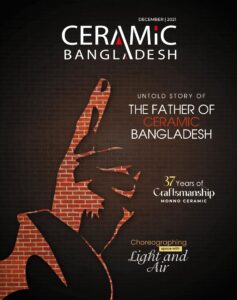
2nd Issue all article is Coming Soon
What is Lorem Ipsum? Lorem Ipsum is simply dummy text of the printing and typesetting industry. Lorem Ipsum has been the industry’s standard dummy text ever since the 1500s, when an unknown printer took a galley of type and scrambled it to make a type specimen book. It has survived not only five centuries, but also the leap into electronic typesetting, remaining essentially unchanged. It was popularised in the 1960s with the release of Letraset sheets containing Lorem Ipsum passages, and more recently with desktop publishing software like Aldus PageMaker including versions of Lorem Ipsum. Why do we use it? It is a long established fact that a reader will be distracted by the readable content of a page when looking at its layout. The point of using Lorem Ipsum is that it has a more-or-less normal distribution of letters, as opposed to using ‘Content here, content here’, making it look like readable English. Many desktop publishing packages and web page editors now use Lorem Ipsum as their default model text, and a search for ‘lorem ipsum’ will uncover many web sites still in their infancy. Various versions have evolved over the years, sometimes by accident, sometimes on purpose (injected humour and the like). Where does it come from? Contrary to popular belief, Lorem Ipsum is not simply random text. It has roots in a piece of classical Latin literature from 45 BC, making it over 2000 years old. Richard McClintock, a Latin professor at Hampden-Sydney College in Virginia, looked up one of the more obscure Latin words, consectetur, from a Lorem Ipsum passage, and going through the cites of the word in classical literature, discovered the undoubtable source. Lorem Ipsum comes from sections 1.10.32 and 1.10.33 of “de Finibus Bonorum et Malorum” (The Extremes of Good and Evil) by Cicero, written in 45 BC. This book is a treatise on the theory of ethics, very popular during the Renaissance. The first line of Lorem Ipsum, “Lorem ipsum dolor sit amet..”, comes from a line in section 1.10.32. The standard chunk of Lorem Ipsum used since the 1500s is reproduced below for those interested. Sections 1.10.32 and 1.10.33 from “de Finibus Bonorum et Malorum” by Cicero are also reproduced in their exact original form, accompanied by English versions from the 1914 translation by H. Rackham. Where can I get some? There are many variations of passages of Lorem Ipsum available, but the majority have suffered alteration in some form, by injected humour, or randomised words which don’t look even slightly believable. If you are going to use a passage of Lorem Ipsum, you need to be sure there isn’t anything embarrassing hidden in the middle of text. All the Lorem Ipsum generators on the Internet tend to repeat predefined chunks as necessary, making this the first true generator on the Internet. It uses a dictionary of over 200 Latin words, combined with a handful of model sentence structures, to generate Lorem Ipsum which looks reasonable. The generated Lorem Ipsum is therefore always free from repetition, injected humour, or non-characteristic words etc.
Read More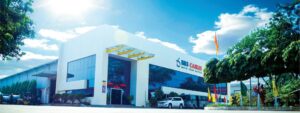
Domestic Entrepreneurs Stare at a Bright Future of Electric Cable Industry
Even though the electric cable industry in Bangladesh has a long history, the sector has grown vastly in the past several years, thanks to extension of power gridlines, growing urbanisation, and industrialisation. Home-grown companies are now playing a significant role in meeting local demand for the electric cables at both households and industrial units in the country. The BBS Cables Limited, a sister concern of Bangladesh Building Systems Ltd. (BBSL), is one of the home-grown cables companies has been contributing to the industry for more than one decade. Innovation for Sustainability The BBS Cables Limited was established in 2009, though the Cable Industry started its journey before Bangladesh came into being in 1971. BBS Cables Ltd. has been an integral part of Bangladesh’s development journey for the past 14 years. The Company understands that shared value creation is essential to a brighter future. “We prioritize sustainability in all our endeavours and believe our efforts must help society as the nation’s sustainable development partner,” Head of Brand of the BBS Cables Md. Rabiul Kamal told the Ceramic Bangladesh. There is a market of around Tk 12,000 crore in the country. The sector is growing around 15 per cent over the past 10 years. Around 50,000 people of total of 120 branded and non-branded companies have been contributing to the sector. Of this, 2500 employees of the BBS cables are directly engaged in the industry. Rabiul Kamal said their company produces various types of products such as Copper Cables, Silicon Cables, Power Cables, Railway Signaling Cables, Jelly-filled Cables, FRLS Cables, Submersible Cables, Flexible Cables, Tele-communication Cables, Aluminum Cables, Optical Fiber Cables, HR-FRLS Cables, Rubber Cables, Welding Cables, Automobiles Cables, Coaxial Cables, Fire Resistance Cables, and FR Skin Coated Cables. Both BBS Cables products enjoy a high degree of acceptance among customers for the high quality of the products and excellent delivery services. The products are distributed through an elaborate chain of BBS Cables Dealers in divisional towns, village and cities of the country. “To grow the cable industry, we need government tax facilities and infrastructural development. The government should reduce the tax on importing raw material and should to be imposed higher tax on foreign cable,” he added. “We are one of the best in cable industries. BBS Cables is a top-tier manufacturer of cables with a reputation for producing high-quality products that meet the needs of a broad range of industries. However, we re-dedicated ourselves to steering our Company’s efforts toward the national goals for the 2030 SDGs (Sustainable Development Goals) journey and then to the magnificent Vision 2041 for building a smart and developed society with a brighter future for all,” he explained. Mr Kamal said the BBS Cables strives to create a sustainable business promoting diversity and inclusion, fostering collaboration, and providing equal opportunities for all. Their Corporate Social Responsibility initiatives have made a meaningful difference to millions of lives through skills development, education support, women empowerment, portable drinking water, and healthcare initiatives. Together, anchored in trust, integrity, and accountability, they are cementing a brighter future where opportunities are abound, communities f lourish and individuals reach their full potential. They try to optimise the use of natural resources, prevent pollution, injury and ill-health in all activities. Safety, Quality and Environmental Policy With the rapid urbanisation from corner to corner worldwide, the necessity of transmitting power assumes significant for sustainable industrial growth. So, the company’s objective is to manufacture electrical Cables, Wires and Conductors of the highest quality and provide unparalleled Customer Service to contribute to national economic growth. They strongly believe that the relentless effort to quality and continuous improvement is the key to long term success. BBS Cables Ltd is equipped with state-of-the-art technology machineries to manufacture and test all types of quality Cables, Wires and Conductors in conformity with the latest version of National and International Standards e.g. International Electro-technical Commission (IEC), German Standard (VDE), British Standard (BS), Bangladesh Standard (BDS), Australian Standard (AS), Indian Standard (IS) and also meet the specific requirements of the customer. They believe in a world that is safe and sound for people and also for A building generally is sustained 100 years. Quality cables also sustain 80-100 years and BBS cables meet the time period, Mr Kamal said. “Now, we produce underground cables with highly protected steel wire armored cable in Bangladesh. To build Smart Bangladesh, more internet services are needed across the country. In Bangladesh market needs modern, speed, safe and sustainable cables. In this context, BBS Cables uses the latest European modern technology for produce internet cables like CAT6e cables for internet service.” The government has decided to transmit electricity through underground instead of overhead conductors. As a result, underground cable replacement has already started by removing the overhead conductors. This has increased the demand for medium voltage cables for electricity transmission in Bangladesh and a new awakening has started in this industry. At present its market is about one thousand crore taka yearly. BBS Cables is conforming to agreed standards to meet customer requirements and continually improve quality, health, and safety and environmental performance. BBS improving product quality and reduce waste to enhance customer satisfaction and business profitability by optimising the use of natural resources, prevention of pollution and of injury. Because high quality cables reduces power wastages. They comply with applicable Health, Safety and Environmental legislation and other requirements, as well as creates a work environment for employees which promotes team work and problem solving in order to improve QHS&E performance. Engineering Excellence BBS Cables Ltd. has successfully established it strength as the “Trusted Brand” in Cables sector of the country. The company has achieved the “Asia’s Greatest Brand Award-2018”. During this period, the Company prepared FR Skin Coated Cables which is known as fire resistance cables for ensuring safety. Unlimited Export Potential The demand for electrical products is not only increasing in the local market but also globally. Electrical items production rate increased by 22 per cent in Europe, 21 per cent in North
Read More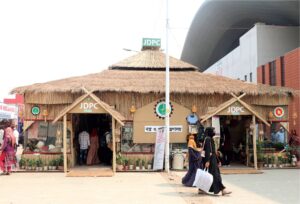
Innovative Architectural Views Attract More Visitors at DITF-2024
Like previous years, the Commerce Ministry and Export Promotion Bureau (EPB) organised month-long 28th Dhaka International Trade Fair (DITF) at the Bangabandhu Bangladesh-China Friendship Exhibition Centre (BBCFEC) in Purbachal that ended on 20 February, 2024. With a view to attracting local and foreign visitors, the exhibitors brought innovative architectural view at their pavilions and stalls made of various materials such as steel, board, wood, bamboo, electric cables, lights, colour and ceramic items. Premium pavilions, premium mini pavilions, reserved pavilions for women, foreign pavilions, general pavilions and food stalls were set up at the fair venue. A good number of architects and carpenters as well as workers used to work hard to set up the pavilion and stalls to attract visitors and make the fair a success. The minimum rent for the Premier Pavilion floor was around Tk 22 lakh, the stall rent Tk 4 lakh for general stalls and Tk 4.5 lakh for reserved stalls. And, the minimum rent for the reserved mini pavilion was Tk 11 lakh. However, more than 304 companies showcased their products at this edition of the fair, with nine enterprises from five countries—India, Hong Kong, Türkey, Indonesia, and Singapore. The exhibitors displayed local and foreign products, including electronics, apparel, jute and leather goods, furniture, plastic products, handicrafts and various food items in the stalls. Many traders offered discounts ranging from 5 to 30 per cent as well. 41 organizations received awards At the closing ceremony of the fair, the authority gave the awards for best pavilions among the participants at the fair like previous years. A total of 41 stalls and pavilions were awarded the best participants in various categories. This year, 14 best pavilions and stalls in various categories got the first prize of Gold Colour Trophy, 15 pavilions and stalls of different categories got the second prize Silver Colour Trophy, and 12 pavilions and stalls of different categories got third prize Bronze Colour Trophy. They were awarded for winning the appreciation of customers through service and making a significant contribution to the overall success of the fair. Among the awardees are Walton Hi-Tech Industries, Group, Jute PRAN-RFL Diversification Promotion Centre (JDPC), Diamond World, KY Two Tone, Olympic Industries, Directorate of Prisons, Dutch-Bangla Bank, Jayita Foundation, Clay Image, MR Technology, Bangladesh Tea Board, HATIL, Navana Furniture and Pentel (Singapore). Like other companies, Walton Hi-Tech Industries PLC received “Gold colour Trophy” as the first prize of the best stall in the electronics product category at the DITF. Talking to the Ceramic Bangladesh, Walton coordinator at DITF-2024 Tarikul Islam said, they set up their pavilion by their own architect, used most of their own electronics materials like lights and cables except boards and steel. And they built a pavilion with three general stalls and one premium stall at Hall-‘A’ of the DITF. It covered 20 feet by 80 feet space there. “Before building a pavilion, we thought how much innovation could be brought to the pavilion as per our management direction. And, we created a theme related to our products. We followed international standard. We just displayed our products to inform customers about the products not to sell in the fair,” he also said. In-charge of the architecture designing section of the company Md Monir Hossain Khan said, “We have to think about many issues like cost, colour, height, space, and reuse of the materials. The Bangabandhu Tunnel was our focal point this year. At first, we make a design by computer on our theme. And, we set a focal point so that visitors are attracted to see our pavilion.” The head of architect of Walton also informed that they need 3-4 days to set up a pavilion in any exhibition. “Some 70-72 Walton staffers including designers, electricians, and carpenters worked to construct the pavilion at DITF-2024. Our total budget was TK 18 lakh to construct this year’s pavilion. We will reuse 70% materials used to set up it. So, we try to use maximum used materials,” he also said. The largest pavilion at this trade fair was PRAN-RFL Group. The three-storied pavilion had a huge collection of the country’s best household products. Export orders worth Tk 392 crore with cash sales of Tk 400 crore State Minister for Commerce Mr. Ahsanul Islam said that the Dhaka International Trade Fair will be diversified from next year to increase the country’s exports. He said, seminar, symposium will be organized in the next fair to increase the interest of foreign buyers. The Vice Chairman of EPB and Chief Executive Officer AHM Ahsan said they received good response from visitors in the fair. “Our export order increased 15 per cent this year compared to the previous year. We received export orders worth USD 3.56 million, which is equivalent to about Tk 392 crore, with cash sales of around Tk 400 crore.” However, they plan to arrange a 3-5 days ‘sourcing fair’ at the Purbachal venue for foreigners to attract them to the expo from next year. Because foreign companies do not want to participate in a month-long fair. He explained that they have a committee to select the best pavilions for the award. They scrutinise various issues to select them. Basically they asked exhibitors to fill-in a form about export orders. Later, EPB announced final amount after collecting all data. The DITF usually started on the first day of the New Year, but this year the fair was deferred it to the third week of January due to the 12th parliament elections.
Read More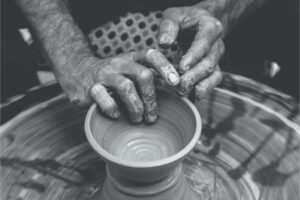
The Journey of Ceramics in Bangladesh
The origin of pottery in Bangladesh dates back to the later or post Mohenjo-daro and Harappa civilization and to the Indo-Aryan Vedic age, according to the research on ceramic earthenware and artifacts found after excavation of the ruins in Mahasthangarh of Bogura and Wari-Bateshwar in Narsingdi. Discoveries in Wari-Bateshwar included two millennium old potteries and terracotta. The potters then used traditional methods to make water vessels and sculptures for worshipping and as household utensils and showpieces. In the medieval age, the potters were popularised by the Hindu and Buddhist rulers and zamindars when they used to make statues of gods and goddesses, Buddha, plates, other aesthetical items and terracotta plaques in the temples and monasteries. The potters made everyday household items for sale in the local markets to earn a living. In the past century, the white clay deposits were first found in Mymensingh, Sylhet and Netrokona, the largest of which was discovered at Bijoypur of Mymensingh in 1957. Since the discovery of the white clay reserves in Bangladesh, the ceramic industry has come a long way. ‘Ceramic’ comes from the Greek word meaning ‘Pottery’. The journey of ceramics started through pottery and was initially only a mixture of inorganic, non-metallic clay which could be heated at very high temperature to make it hold its shape. Since then, mankind has found multifarious uses for this clay and the quality of the clay has been improved. Ceramic in this era has much hardness and strength, is heat resistant, is a good insulator, unreactive to other chemicals and long-lasting and hard-wearing. Among its many uses, the ceramics industry started in Bangladesh with just the manufacture of tableware and now covers four broad subsectors: Tableware, Tiles, Sanitary ware and Ceramic Bricks. A brief review of the journey of ceramics in Bangladesh is portrayed below. In 1959 the industry took its nascent steps with only one small tableware manufacturing plant in Bogura, Tajma Ceramic Industries Ltd. Tajma Ceramics is the first ceramic earthenware plant to produce porcelain tableware using traditional methods. In 1962, Mirpur Ceramic Works Ltd in Dhaka started to produce heavy clay products using German plant and technology and developed a reputation of manufacturing best quality ceramic bricks in the subcontinent. In 1966, Peoples Ceramic Industries Ltd, formerly known as Pakistan Ceramic Industries, located in Tongi, Gazipur, started production using modern porcelain tableware manufacturing technology procured from Japan. They started exporting their products. In 1974, the country’s first non-heavy clay building ceramic plant came on the stream, Dacca Ceramic & Sanitary-wares Ltd. The company was the first to start production of sanitary ware at Tngi, Gazipur. In 1985, Monno Ceramic Industries Ltd transformed and revolutionised the exports of local ceramic products by branding Bangladesh ceramic products on an international level, using West European and Japanese plants and machinery. Monno Ceramic is the first industry to use ultra-modern technologies to produce porcelain tableware aimed at exporting worldwide. Later it added its bone china tableware unit also aimed at improving the exports of ceramic tableware from Bangladesh. In 1986, Bangladesh Insulator & Sanitary ware Factory Ltd. (BISF) started manufacture of ceramic tiles at Mirpur, Dhaka, with Czech machinery and technology. In the same year, Bengal Fine Ceramics Ltd, the first stoneware tableware manufacturer in Bangladesh, located in Dhaka, entered the domestic and international markets. In 1992, with the exponentially growing ceramic industry, a nationally recognised trade organisation of manufacturers and exporters of ceramic tableware, pottery, tiles, sanitary ware, insulator and other ceramic products was formed, called Bangladesh Ceramic Manufacturers & Exporters Association (BCMEA). In 1993, Madhumati Tiles Ltd. became the country’s first tile manufacturer to use modern German and Italian technologies to produce the latest standard ceramic tiles that domestic consumers see and use at present. In 1999, Shinepukur Ceramics Ltd. started production of porcelain and bone china tableware with Japanese, German and French machinery and technology. It earned a reputation for being one of the major exporters in Asia. Ceramic Industry Scenario (FY 2021-22) An industrial revolution has resulted in a burgeoning Ceramic Industry since the start of its journey with just one small tableware manufacturing plant. Today, there are more than 70 ceramic manufacturers in operation in the country with core products being tiles, tableware, sanitary ware and bricks. As the country experiences steady economic growth and urbanisation, the local demand for ceramic products too continues to grow. These ceramic bricks, tiles and sanitary ware have been used in several mega projects by the government to ensure overall infrastructural development. The growth trend is an indication of the industry’s potential to be one of the top foreign exchange earners. And the tableware made in Bangladesh, both Bone China and Porcelain, is famous around the world for its eminent quality and design. Here is a snapshot of Bangladesh’s ceramic industry: Quality Raw Materials: The exponential growth in the ceramic sector is owing to the high-quality ceramic products manufactured in Bangladesh. The ceramic sector has the availability of uninterrupted Sulphur-free natural gas and the latest cutting-edge technologies imported from Germany, which make our products shinier and more durable. The glaze and pigments are lead and cadmium-free and 100 per cent halal ingredients are used in the production process. The other factor in favour of the industry flourishing is the relatively low labour cost yet availability of skilled manpower. The direct manpower involvement in the industry is about 52,000 whilst the indirect involvement is over half a million. The industry is considerably compassionate towards the women and people with disability. The industry works to train women and physically challenged workers for inclusivity. Around 20 per cent of the workforce is highly-skilled women. Today owing to these favourable conditions, the industry is distinguished around the world. Investment: The total investment, both local and international, in the industry is about US$ 1.70 billion. The investment share of tiles is 62 per cent, tableware 23 per cent and sanitary ware 15 per cent. The sector has lured foreign investment mainly from China and the Middle East. These
Read More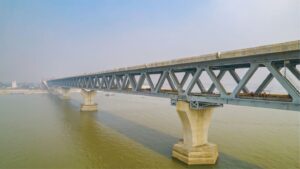
A Bridge to Prosperity – From Transport Connectivity to Economic Corridor
The opening of the Padma Bridge has created the scope for a new wave of investment in the country’s south and south-western region. The region’s easier road communications with the rest planned and tourism sector entrepreneurs are hoping for a business boom surrounding Kuakata sea beach and the Sundarbans. Thus, the bridge has offered a new economic corridor in the making. Economists and business leaders believe with remarkable improvement in road network though the bridge trade and business in the region would expand rapidly, raising the people’s income, creating jobs and eradicating poverty. The Padma Bridge is also expected to bring about a massive change in the entire economy. The Ministry of Road Transport and Bridges believes the economic corridor surrounding the Padma Bridge and its adjacent areas would increase the country’s GDP (gross domestic product) growth by 1.27 percentage point. The southern region’s economy will grow at a higher pace. Predicting a higher GDP growth for the Padma Bridge, the Asian Development Bank (ADB) said the rate of poverty reduction will be accelerated by 0.84 per cent every year. However, as many as 53 upazilas out of 133 upazilas in 21 districts on the south-western side of the bridge are of high concentration of poverty, according to Bangladesh Bureau of Statistics (BBS) poverty map. Another 42 upazilas are in the medium poverty risk category and 38 in low poverty risk category. Economist and chairman of Palli Karma-Sahayak Foundation (PKSF) Quazi Kholiquzzaman Ahmad said small entrepreneurs are more enthusiastic about the Padma Bridge and they should be provided with opportunity to make investment and various supports such as gas and electricity supply should be ensured at affordable costs. He observed that the bridge has jointed the southern belt with the rest of the country. The bridge will result in smooth transportation of farm produces from the region, according to Implementation, Monitoring and Evaluation Division (IMED) of the Ministry of Planning. It said farmers’ income will increase 15-20 per cent since direct connections between farmers and the market forces will be established. Transport sector insiders added the time for transportation of goods from Benapole to Dhaka would come down to 6-7 hours from 24-36 hours. The southern region was attractive for low-cost transport of goods by river routes but longer time and uncertainity in ferry services earlier discouraged the entrepreneurs from taking business initiatives. The Padma Bridge has now created the scope for big companies to come forward with investment projects in the region. The companies that have shown interest in setting up factories in the region include Sheltech, Pran-RFL, TK Group, Envoy Group, Hameem Group, Mir Group, Karim Group and Opsonin Pharma. Bangladesh Economic Zones Authority (BEZA) has unveiled a master plan on Padma Bridge that would directly benefit Dhaka, Khulna and Barisal divisions. It is taking steps to establish 17 new Economic Zones (EZ) in 21 districts of the three divisions. In the 1960s, Khulna became one of the few industrial hubs of the country but it has subsequently lost the glory. However, after the launch of Padma Bridge, Khulna is drawing attention of the investors. Abdus Salam Murshedi MP, president of Bangladesh Exporters’ Association (BEA) and former president of BGMEA said, “I definitely want to use this opportunity. I want to set up a new garment factory in Khulna. I also encourage others to invest in the region.” In fact in 2019, Sheltech Group established the country’s largest ceramics industry in the southern district of Bhola. The company invested more than Tk 7 billion taking advantage of local natural gas and cheap land with the hope of opening of the Padma Bridge in 2022. Now, Sheltech is also planning to set up a non-denim garment factory in Bhola, said Engineer Kutubuddin Ahmed, chairman of the group. “We are now looking for land to set up a ready-made garment industry in Barisal. After the inauguration of the Padma Bridge, investing in the south is the most promising one,” he added. Chini Tikri the inaugural murals the inaugural murals One of the two spectacular installations at each end of the Padma Bridge is its inaugural mural – which has been constructed by using 15,000 ceramic plates. The portraits of Father of the Nation tbreaking these 37 coloured plates into ‘Chini Tikri’. One was the dreamer of Padma Bridge and the another one is its implementer. As the ceramic plate is broken and made, it starts to sparkle when the sun shines on it. These ceramic plates are hammered and broken into about half a million pieces. Then different colours of the pieces are arranged one after one to create two beautiful portraits. Designed by architect Fazle Karim Shishir of Drishik, the two murals were created by artists Ashraful Alam Riaz and Didar Ul Alam. Both are graduated from the Fine Arts Institute of Dhaka University. The 90-feet-long and 45-feet-high mural at the Mawa end was done by Didar Ul Alam and the 72-feet-long and 36-feet-high mural at the Janzeera end was done by Ashraful Alam Riaz. They told Ceramic Bangladesh that at first the designer thought of making this mural with ceramic tiles, but later they chose ceramic plates of the highest quality considering the bright colour and durability. A total of 15,000 plates of 37 types of colours have been used here. Among them, 7 types of coloured plates are used to display black and white portrait of Bangabandhu. And 30 types of coloured plates are used to produce colourful portrait of Prime Minister Sheikh Hasina. All of these ceramic plates are customised. Because such a variety of colour plates are not usually produced by ceramic companies. Artisan Ceramics made 8,000 plates used in the Mawa end mural and Monno Ceramics made 7,000 plates used in the Janzeera end mural. This construction work was completed in two months by two separate teams of 50 people, working 24 hours a day, after last Eid-ul-Fitr. No bigger mural has been made in Bangladesh so far. Artist Ashraful Alam Riaz, Managing
Read More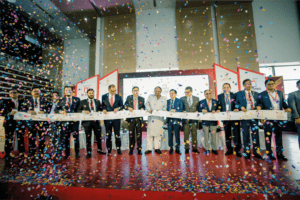
Ceramic Expo Bangladesh 2022
Bangladesh is the new booming market in the world of ceramics. The industry has shown remarkable growth potential with increasing demand and maximum supply level from all of the sub-sectors such as tableware, sanitaryware, and tiles. In order to encourage development and growth of such a promising sector, the 3rd edition of International Ceramic Expo Bangladesh 2022 was held at ICCB, Dhaka from November 24-26. The event is recognised as one of the most prestigious and exciting business expositions of the global ceramic market.
Read More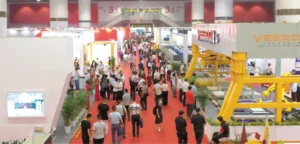
CERAMICS CHINA 2023 dated on June 19-22
From June 19 to 22, the 37th edition of China International Exhibition for Ceramics Technology, Equipment and Product (CERAMICS CHINA 2023), organized by Unifair Exhibition Service Ltd and sponsored by China Ceramic Industrial Association, will be held in Canton Fair Complex, Guangzhou. CERAMICS CHINA 2023 will gather more than 700 suppliers of equipment and materials from home and abroad, to display their high-quality products, leading technologies and solutions including raw materials, decorative materials, refractories, grinding materials, production and finishing equipment, spare parts, moulds, tools, design services, etc., to empower the high-quality development of the ceramics industry. Historical exhibitors of CERAMICS CHINA are from 30 countries and regions including China, Italy, Spain, Germany, UK, France, USA, Japan, Korea, Turkey, India, Iran, etc.
Read More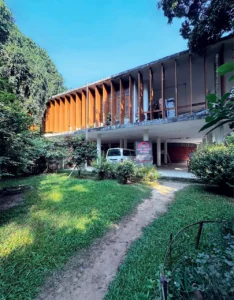
Architect Muzharul Islam
Beyond his role as an innovative architect, Muzharul Islam was characterised by humility and an unassuming nature. His consistent choice of traditional clothing and a preference for a modest lifestyle indicated a deep commitment to his craft rather than a pursuit of personal recognition. The simplicity and focus on perfection in his work underscored the profound impact of his architectural contributions, and the enduring prominence of his legacy in South Asian architecture speaks volumes about his unwavering dedication and passion. The roots of modernism in Bengal can be traced back to the Bengal Renaissance, a cultural and intellectual movement spanning the late 18th to early 20th centuries. This period witnessed a resurgence of liberal thoughts, intellectual exploration, and a reevaluation of traditional norms. The Bengal Renaissance played a pivotal role in reshaping ideas related to liberalism and modernity. During the British colonial rule, neo-classical and neo-gothic aesthetics significantly influenced East Bengal’s architecture, evident later on in East Pakistan in public structures symbolising power, the rule of law, and cultural dominance. Before the 1971 War of Independence, which resulted in the formation of Bangladesh, East Pakistan sought to establish itself as a liberal community. One significant architecture during this period was the Faculty of Fine Arts, which emerged as a modern marvel. This architectural endeavour intentionally steered clear of ornamental elements associated with Mughal or Indo-Saracenic styles. Muzharul Islam, the architect behind this significant structure, employed a conscious strategy in abstracting his design through a modernist visual expression. This deliberate approach aimed to rid the architecture of perceived political associations with instrumental religion. By steering clear of traditional and ornamental influences, he aimed to create a design that stood as a manifestation of secular ideals, distancing itself from the religiously charged politics that defined the era. In doing so, the Faculty of Fine Arts became more than just a physical structure; it became a visual and ideological statement, symbolising the pursuit of a secular and liberal identity for East Pakistan through its architecture. Indeed, Mr. Muzharul Islam’s influence extends far beyond his time, establishing him as the one of the most influential architects in the history of his country. His visionary contributions to architecture, coupled with his dedication to shaping the national identity through his work, have left an indelible mark. In 1964, at the pinnacle of his career, Muzharul Islam established the architectural consulting firm “Bastukolabid”. It marked a milestone, as it was the first architectural consulting firm in the East Pakistan. At that juncture, one who could have done his work solely for personal profit, he expressed the desire for collaboration with world-class architects. That period witnessed the notable involvement of the American trio — Louis Kahn, Paul Rudolph, and Stanley Tigerman — in architectural endeavours in Bangladesh. Muzharul Islam played a pivotal role in fostering this collaboration, recognising the need for visually and intellectually stimulating paradigms in the Bengali context. The partnership brought a global perspective to the architectural landscape and contributed to the enrichment of architectural discourse and innovation in this region. Muzharul Islam’s visionary dream was to elevate Bangladesh into a developed, alluring, and civilized nation through meticulous physical planning and control over every square foot of its territory. He aimed to craft a distinctive national identity that would set Bangladesh apart. Muzharul Islam, a fervent patriot who not only fought on the battlefield during the 1971 War of Independence but also contributed significantly to shaping the national identity through his endeavours in art and architecture, faced a disheartening period of neglect in the post-independent era. Following Bangladesh’s independence in 1971, Muzharul Islam found himself marginalised from government projects, a stark departure from his active role in the liberation movement. The reasons behind his sidelining were multifaceted, with a prominent factor being his steadfast commitment to Marxist and Leninist principles. This ideological stance placed him at odds with the establishments during that period. Despite his noteworthy contributions to the freedom of Bangladesh, Muzharul Islam experienced discord with the post-independence political landscape. This period of neglect serves as a poignant illustration of the complexities and challenges faced by individuals with unwavering ideologies in the aftermath of political transitions. In 1953, at the age of 30, Muzharul Islam designed the Institute of Arts and Crafts (Art College) building in Dhaka. It is recognised as the first modern building in Bangladesh. After completing the Fine Arts Building in 1956 and the National Library in 1958, it was being said that Muzharul Islam wanted to include other arts like music building, dance, and dramatics departments in addition to the architecture school besides the Fine Arts Building. Creating a total art complex would have expanded the scope of architectural education, breaking away from the traditional notion that architecture is solely rooted in science. If Muzharul Islam had succeeded in implementing his vision, it could have had a profound impact on architectural education in the country. The inclusion of diverse art forms within the same educational campus might have fostered creativity, collaboration, and a broader understanding of the cultural and aesthetic aspects of architecture. This holistic approach could have produced architects with a richer skill set, capable of not only designing structurally sound buildings but also creating spaces that resonate with cultural and artistic expression. Throughout the 1950s and 1960s, Muzharul Islam’s Six-B pencil and charcoal inspired designs like Falgudhara, building one modern architecture after another. Science Laboratory (BCSIR) building in Dhaka, NIPA Bhawan of Dhaka University, BADC Bhawan and Jiban Bima Bhawan in Motijheel, Rangamati Township, Chittagong University, Jahangirnagar University, the World Bank Dhaka Office, Mausoleum of National Poet Kazi Nazrul Islam etc. are modern architectures used as a tool to build a modern society. His most important work was born when the Governor’s Conference of Pakistan decided in 1959, under the President Ayub Khan, that Dhaka will be the second capital of Pakistan. The government decided to build a capital complex at Sher-e-Bangla Nagar, Dhaka. Muzharul Islam was given to design Jatiyo Sangsad Bhaban (National Assembly Building
Read More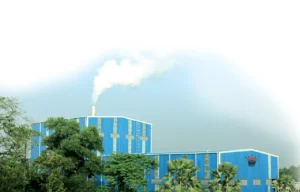
Fu-Wang Ceramic Industry A Journey of Resilience and Growth
FU-WANG Ceramic Industry Limited, founded in 1995 as a joint venture between Taiwan and Bangladesh, has evolved into a major player in the ceramic industry. Despite Taiwan investors’ departure in 2008, the company continued to thrive, reshaping the landscape of ceramic production in Bangladesh. During the 1990s, Bangladesh heavily relied on ceramic imports from countries such as China, Sri Lanka, Spain, and Italy. Fu-Wang entered the market and made a significant impact. Subsequently, other prominent players like RAK, CBC, and Mir Ceramic joined, solidifying their presence in the country’s tiles market. Presently, RAK, DBL, Fresh, Fu-Wang, and X Ceramic are the key players in Bangladesh’s tiles sector. With an aggregate investment of $1.8 billion in the ceramic sector, of which 66 per cent is allocated to the tiles, the domestic tile market is valued at $650 million. Fu-Wang Ceramic Industry went public in 1998, listing its shares on the Dhaka and Chattogram Stock Exchanges. Fu-Wang Ceramic has created a good number of employment opportunities. Its products are manufactured in the factory of Gazipur. The company has since maintained impressive annual growth, consistently achieving a 20 per cent increase. Product diversification and challenges faced Fu-Wang Ceramic Industry is known for producing two types of products: those tailored for the mass market including industries, universities, shopping malls etc. and luxurious tiles designed for apartments, hotels and offices. The company has also introduced high-quality brands like Picasso and Picasso Premium, offering larger wall sizes and various floor sizes tiles under the guidance of European and Asian technologists. The foundation of Picasso Premium 60x60cm PGVT tiles lies in state-of-the-art robotic technology. Each tile is crafted with unparalleled precision and accuracy, ensuring uniformity in size and shape. The company employs Nano Technology in the production of PGVT tiles, enhancing their durability and shine. This advanced technology creates a protective layer on the tile surface, making them resistant to scratches, stains, and wear. The timeless elegance of marble, the warmth of wood, or the modernity of concrete, Fu-Wang designs capture the essence of nature and elevate the interior design to new heights. Each of 60x60cm PGVT tiles is meticulously packed with a surface protective film. This film safeguards the tiles during transportation and installation. However, the industry currently is facing a range of challenges. These include difficulties in opening Letters of Credit (L/C), surging natural gas prices coupled with low gas pressure, and unreliable electricity supply to factories. Moreover, navigating the intricate landscape of government policies has posed additional obstacles for businesses in Bangladesh. Besides, current economic headwinds has contributed to decline in the sales of the ceramic products. To carry on the business, the government should withdraw Supplementary Duty (SD) on the local ceramic products and supply gas and electricity uninterruptedly to the factories. The CEO of Fu-Wang Ceramic Industry Limited (FWCIL), Mr. Rafiquzzaman Bhuiyan, shared his experiences with the Ceramic Bangladesh (CB) in an exclusive interview. Adapting to market dynamics Despite these challenges, Fu-Wang Ceramic Industry remains steadfast in its commitment to leading the tiles sector in Bangladesh. The CEO recognises that competition is intensifying, and only large companies will be able endure while smaller ones might face closure. Making profit is tough due to competition. Besides, the demand for high-value and luxurious products is increasing in local and international markets. So, small companies have to compete with large companies. However, considering current market demand, they have to change product designs in accordance with new technology. Now local companies are meeting 85 per cent domestic market demand. And the rest of 15 per cent is met by imported products. If they can reduce import dependency further, dollar reserve will increase. So, policy support is crucial. “Our plan for the future is to manufacture selective and valuable products to compete in the market. We will expand our production base. Mass production helps to reduce product costs. We will produce high-value products in the future increasing market demand,” said Mr. Rafiquzzaman Bhuiyan. To meet the evolving market demands, Fu-Wang plans to adapt its product designs using new technologies. Moreover, they aim to reduce their dependency on imported products to bolster their reserves. The company’s strategy for the future is to manufacture selective and high-value products to cater to the increasing demand in both local and international markets. Export challenges, domestic potential While the export market has presented challenges due to global competitiveness, the domestic market for tiles has experienced significant growth. Changes in people’s lifestyles and increased per capita income have contributed to the surge in demand. Fu-Wang is exploring the possibility of entering the tableware manufacturing sector and is focusing on branding and digital marketing to expand its market presence. A call for government support and FDI The domestic demand for tiles has increased vastly thanks to change in people’s lifestyles and booming construction sector. A good number of companies have also been established here. In Bangladesh, the number of tile companies may further go up as tiles are now used in rural areas too. So the market is expanding, and it will continue to expand. People are spending more money on their houses as a pre-emerging country. In this context, Fu-Wang management is planning to what type of new products can be brought in the market in future. Meanwhile, Bangladesh has made a reputation in the international market exporting high-valued tableware products. However, there is a huge potential for foreign direct investments (FDI) in Bangladesh. The government has set up 100 special economic zones, something which is a positive initiative to bring more FDI. Also, there are some challenges including land scarcity, gas and utility supply, and the business operational registration process. All problems should be resolved as soon as possible. Besides, transparency and accountability are crucial to ensure ease of doing business. Basically, the country’s all services should be available on online. Mr. Rafiquzzaman Bhuiyan underscored the need for government support, including withdrawal of supplementary duty on local ceramic products, reducing import duties on raw materials, uninterrupted gas supply, and reliable electricity
Read More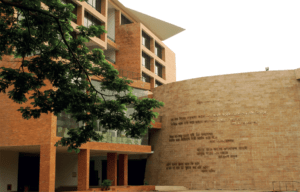
Silence, an Integral Aspect of ARCHITECTURE
As Nurur Rahman Khan commenced his discussion on architecture, a concept exists only as an idea that becomes apparent once it is created. Attaining the deep level of architecture requires a great deal of time, attention, and meditation. If we wish to reach that level of it, we must bring our soul to it. It could be difficult for the public to comprehend or accept it entirely. Nurur Rahman Khan began his architectural career at Bangladesh University of Engineering and Technology (BUET), despite lack of understanding of how architecture functions. The sole realisation he possessed was that architecture constitutes a fusion of engineering and creativity. In his formative years, he delved deeply into music, photography, graphic design, acting and writing alike. Before he began his career in architecture, he had no prior experiences in drawing or sketching. Over the time, he acquired the skill of drawing architecture from mathematical drawings in the form of ‘axonometric’ drawings. He did not become aware of architecture until the very end of his first academic year, since it was then that he was able to appreciate architecture’s beauty. As a consequence of his subpar craftsmanship, he used to receive lower grades. After his first year of school, he began going to the library to learn about the aesthetics of architecture. It was at that point during which he began comprehending the aesthetics of architecture, and since then he never stopped his journey to acquire knowledge about it thereafter. He continued by outlining the method by which architects prioritise aesthetics over attaining the fundamental purpose of their design, instead of flaunting the design, one should be proud of it. The greatest architect of Bangladesh, according to him, is Muzharul Islam, and his level of prosperity ends there. We are forfeiting numerous facets, failing to appreciate the true essence of architecture. Our focus has shifted towards the grandiose, the towering, and the extravagant, relinquishing our humanity to the allure of grandeur and brand-centric values. Addressing the architects within our community, NR Khan inquired about the apparent challenge in reaching the remarkable levels of creativity and imagination set by Muzharul Islam in the field of architecture. Tanya Karim and Nurur Rahman Khan, who are partners, founded an architectural firm with the goal of significantly altering the architectural arena. Their office became known for its theoretical pretext, search for situated modernity, and use of historical and cultural allusions. In the summer of 1991, Tanya Karim, NR Khan & Associates became known as an architectural firm leading the way in modern ideas in Bangladeshi architecture. Throughout his academic journey, he teamed up with Tanya Karim as a groupmate, and their collaborative synergy flourished after they graduated between the years 1992 to 1993. In his viewpoint, when discussing Tanya Karim, he recognised her as a nurturing figure who would impart knowledge to classmates just before exams. He highlighted the enduring complementarity between himself and Tanya Karim. During their studies with her, a profound mental connection was forged. Tanya Karim played a pivotal role in enlightening him about the intricacies of art, fashion, and other facets of design, drawing from her upbringing in a culturally enriched family. Their designs are always inextricably linked to the point at which the architecture’s user finds it worthwhile. “A project is a canvas of someone else and we are the architects painting on it. If we indulged ourselves in a self-centered design, it definitely would have been a short lifespan,” Nurur Rahman Khan remarked. They (TKNRK) have secured positions of distinction in numerous competitions, notably triumphing in the National Competition organised by the Institute of Architects Bangladesh (IAB) in 2012. They clinched the 1st prize for their outstanding design of the Bangla Academy. The Bangla Academy project takes a multifaceted approach to sustainability rather than focusing only on being “environment friendly”. The “site” is the first sustainability metric that the project looks at. On the grounds of a historic building and later additions to the “Bangla Academy Complex’’. In the modern era, there appears to be a tendency to use sophisticated design techniques and technologies to achieve a “green” solution to building design. It is important to remember that utilising the actual “environment” is one of the most logical approaches to designing “environment friendly” architecture. The site, the environment, and the climate should take center stage. “Indifferent” methods can be used to create a successful “green” architectural design. As for the building design, a significant portion of the office building has been designed to benefit from natural ventilation and abundant natural lights. Most days, the interior is bathed in natural light, creating a well-lit and airy environment. Moreover, when discussing TKNRK, he emphasised, “We are forward-thinking individuals, acutely aware of the essence of our architectural pursuits. Our ancestors crafted cities like Mahasthangarh 2000 years ago without external guidance as today’s. Therefore, as architects today, why limit ourselves to the mundane concept of a ‘Kurey Ghar’ (hut) that does not align with our cultural heritage? Instead, let’s draw inspiration from the grandeur of the cities our forebears-built millennia ago and aspire to create something extraordinary. By utilising costly materials to create an appearance of frugality, we are engaging in economic dishonestly within the country. This practice not only deceives the economy but also reflects a lack of integrity towards the materials themselves.” For him, it holds paramount importance to instill into people a genuine understanding of the true essence and user-centricity of architecture, steering clear of the reliance on extravagant products merely for aesthetic appeal. Whether designing a school or any other space, the emphasis lies in ensuring that the design not only looks the part but also functions seamlessly according to its intended purpose. In his elucidation about TKNRK, he expressed that, they do not adhere blindly to any distinct style, recognising that they are in a constant state of learning and evolution. The absence of a signature style, in itself, constitutes their unique design approach. Emphasising the diversity of our nation’s inherent genetic
Read More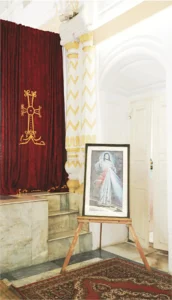
Remains of ARMENIA
As you walk through that particular street of Armanitola where the Armenian Church has been perching for almost two and a half centuries, its white coloured skin subtly piercing you with an invitation to enter inside, a peculiar sillage coming to life from the hundreds of variants of notes from the line of perfume shops beside, mixed with the eerie scents carried by the winds flowing over the Buriganga which is just within a minute of walking distance, will hit your nostrils. Soon, you will start noticing all the examples of unplanned and unappetising architectures of different heights and looks that popped up in the recent decades and still keeps popping up every now and then with no signs of stopping, trying its best to engulf the church with the shadows of its murky glory. The current state of many of the historical structures that had been living in Old Dhaka for centuries, is just like the present attire of Old Dhaka that we gradually forced her to wear – a living testament of what we were, what we could have been and what we are now. Despite our passionate habits of being collectively amnesic towards history and always letting our greed filthily winning over the importance of preservation of historic structures, some monuments somehow still managed to sail through the waves of time and survived. While many are only skeletons of their mighty past or half alive with all their graciousness, some continue to breathe. As if in an endeavour to effortlessly remind us of the fascinating times that are by gone. The Armenian Church in Dhaka is one of them. The Armenian Apostolic Church of the Holy Resurrection or simply known as The Armenian Church, is located in 4 Armenian Street, Armanitola between Armanitola and the Mitford Hospital Dhaka, is named after the Armenian Colony which settled here in the early 18th Century. It was built in 1781 on the ruins of an earlier chapel and later, in 1837, a steeple serving as a clock tower, was added towards the west, near the belfry. This collapsed during the earthquake of 1897. The name of the church and the area it is situated in, easily gives off hints about certain aspects of its stories. When you think of historical structures, particularly about those which were built during the colonial era, it is obvious that you would relate it with the British period in Bengal. But the British were not the only Europeans who sailed here in the heydays of business and commerce in the region. The Dutch, Portuguese and notably French traders also set important businesses in parts of present-day Bangladesh with majority of the setups being in Old Dhaka. Another typically less talked about history of Europeans who set up a colony here only with the intentions of business, is the enthralling history of Armenians in Bangladesh. Although there is no exact record of when the Armenians first came to Dhaka but based on historians and the evidence of dates on ledger stones, it is assumed that they first came to Dhaka around early 18th century and most were engaged in the jute trade and the community was small but wealthy. Interestingly parts of the gardens of Shahbag, Ruplal House and the plot where Bangabhaban stands today, belonged to Armenian landlords. As you enter the church premise, you will be welcomed by an inexplicable aura. When you start your curious walk inside the church compound, what will make you wander in wonder at first are all the ledger stones surrounding the main church building. A few of them dug even before the church was built, these are graves of Armenians who rest here, each with their different stories. On one side, an age-old Armenian residence rests, almost in ruins and not allowed for visitors to enter anymore due to safety issues, as there are risks of it crumbling anytime. At another side amongst the calmness of ledger stones, stands a sundial. You will be even more surprised with a touch of eeriness after you enter inside the church and notice that there are ledgers stones beneath some of the benches of the prayer hall too. Imagine sitting on a bench set above someone’s grave who died decades back, spooky? There are also elements embodying biblical visuals, including a painting of a scene from The Last Supper. There are a plethora of details about the entire architecture of the church, the history of Armenians in Bangladesh, the context of their arrival and their life in Dhaka, etc., which are difficult to fit within the constraints of a magazine, and above all the distinct aura that spaces like these holds, which is almost impossible to portray with words in any format. And your best option to experience it is by visiting the space. With that being said, this magnificent monument might have breathed its last long back or would have been in the verge of turning into complete ruins, just like many of its kind in the area! But it solely survived due to one Armenian gentleman, Michael Joseph Martin. The stories of what Martin did to ensure the survival of this last monumental remnant of Armenians in Dhaka, is beyond heroic. In the mid 1980s when the church was in a horrible state, Martin took charge of the place in a turn of events. Despite all the grievous hindrance he had to endure from the locals, including property-related issues which he solved at court, illegal grabbing of the space and misusing for profit, and even life threats, Martin along with the support of his family firmly managed to spearhead the restoration process and later dedicated the rest of his life to keeping the church breathing. Martin was the last Armenian resident in Dhaka. Due to health issues, he had to move to Canada in 2014 to stay with his family. During the pandemic, the former custodian of the church passed away at the age of 89 and then
Read More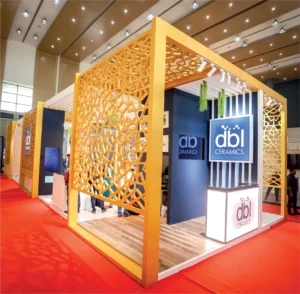
Innovation unleashed at the Ceramic Expo Bangladesh-2022
The first few teasers of the Ceramic Expo Bangladesh-2022 ushered in the forthcoming of one of the biggest and highly anticipated ceramic events in the country. The event took place in ICCB, Dhaka, from 24-26 November, 2022, and was buzzing with visitors all three days. The Ceramic Expo housed 120 exhibitors, 300 brands from 20 countries, and 500 delegates, along with a whopping 23,000 visitors. It brought under one roof exporters, manufacturers and suppliers of ceramic and related products. During the event, visitors came from all over, dispersed excitement across the venue, and filled it with murmurs of conversations. As excitement spread, we saw visitors and exhibitors interact, and the event turn into a big success. Sheltech Ceramics one of our Platinum Sponsors exhibited their largest tiles Sheltech Ceramics Limited, showcasing the country’s largest (1m x 1m) tiles, participated in the prestigious Ceramic Expo-2022. Owing to the exquisite design of the pavilion, it received the Best Pavilion Award (Gold) from the jury members. Sheltech Ceramics embellished its pavilion with a minimalistic touch of white and blue. Architecturally, the pavilion was designed in a way that was intended to draw visitors’ a-ention easily. One of the key cornerstones of this pavilion was to portray product manufacturing dynamism with diverse dimensions and types towards all segments of the target group or customers, like architects, corporate clients, end users. Additionally, the tiles were displayed in a manner that covered every segment in terms of colour and size. It is worth mentioning that, with modern machinery enriched with European technology, Sheltech Ceramics is equipped to produce 39,000 sqm of premium wall and floor tiles per day spanning multiple sizes and textures. Exploring the pavilion, one could see that the tiles were shown exactly as they would be when tiled. The white backdrop was used to accent the vibrant collection to draw more visitors’ a-ention. Other tiles were displayed on the walls; alongside those, photos of the factory took over some portions of the walls, demonstrating the magnitude of the company’s production capacity. Especially, the company’s remarkable journey is portrayed on the front wall. Coming to the centre-stage of Sheltech Ceramics, the Prime Series was the frontrunner amongst the displayed products and was highlighted throughout the event. The 1m × 1m tile from Sheltech Ceramics is the largest floor tile manufactured in Bangladesh and was an absolute head-turner at the event. Launched in May 2022, the Prime Series is produced in an environmentally sustainable way. This 12-mm-thick Prime series floor tile ensures a lot of benefits, including a moderate water absorption rate, a robust and extremely durable texture, a glossy, light-reflective surface, and the ability to withstand thermal stress. It has diverse and a-ractive pa-erns with flawless textures, and most importantly, it is easy to clean and maintain. Mr. Kutubuddin Ahmed, Chairman of Sheltech Group and Envoy Legacy, and Mr. Tanvir Ahmed, Managing Director of the same, graced the event with their presence along with other marketing personnel. Sheltech Group, with more than three decades of experience, launched Sheltech Ceramics in 2019 which exclaims an unwavering commitment to innovation and design and moves forward with ongoing trends. DBL Ceramics joined in as a Platinum Sponsor as well acquiring 70% lead conversion DBL Ceramics became part of the Ceramic Expo Bangladesh-2022 as a Platinum Sponsor and showcased five new products in their pavilion. DBL Ceramics’ research and development team worked tirelessly for six months to plan some of the best and most recent tile collections from DBL Ceramics to display in the pavilion. As one walks towards the pavilion, one is struck by the vibrancy of the tangerine laser-cut design pa-erns on the walls and roofs of some pavilion sections. The products were displayed on the walls, screens, and, in most cases, retractable panels and drawers. Among the various elements of the pavilion, one wall featured a sophisticated analog clock and a corner with an all-white conference table. The pavilion showcased not only the new and innovative products from the catalogue, but also had exclusive insights on upcoming products that DBL Ceramics was working on at the time. The front runner at their pavilion was the Glue and Granilla tiles, which is a glazed porcelain, and has a premium decorative texture. Having granules glued to the surface makes it anti-slippery and abrasion resistant. A leading brand with over 160 dealers and six major display centres across the country, DBL Ceramics is expanding and has a new extension called Bright Ceramics. The company adopted the practices and concepts of Industry 4.0 and has factories with state of the art machineries. Mr. M. A. Jabbar, Managing Director, Mr. M. A. Rahim, Vice Chairman, Mr. M. A. Quader, Deputy Managing Director and Group CEO, Mr. Md. Bayazed Bashar, Head of Operations of DBL Ceramics, along with other senior officials graced the event with their presence. There were special appearances from celebrity guests such as Ms. Aupee Karim and cricketer Taskin Ahmed. And finally, there were also live sessions with industry experts. DBL Ceramics’ strategy for the 2022 expo was to display the newest innovations. Every year architects, designers, and experts from dierent companies and oices visit the Expo and extensively engage with the stalls. At the 2022 Expo, DBL Ceramics focused on acquiring these leads, and had a 70 per cent conversion rate among all leads. “The 20-30 per cent that we weren’t able to convert was because we weren’t planning to launch those products at the time,” said Mr. Bayazed Bashar, Head of Operations at DBL Ceramics. The Expo was a grand success, and we had tremendous response from visitors and exhibitors. We can only hope that the hype will be even more for the Ceramic Expo 2024. BCMEA Report
Read More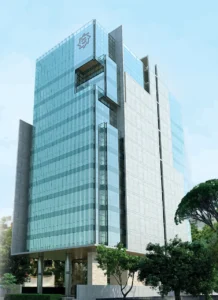
Shahjalal Bank First Green Building in the Banking Sector of Bangladesh
Shahjalal Islami Bank PLC is playing an important role in providing investment in all areas of manufacturing and service sectors, ready-made garments, trade financing, infrastructure and agriculture. Starting operations on 10 May 2001, the bank is running with 12,40,000 deposit and investment customers. As a third generation Islamic Shariah-based private commercial bank of the country, Shahjalal Islami bank plc has reached a strong position within a short span of time and has been playing a worthy role in the economic development. The financial base of this bank is very strong. The bank has currently been providing banking services to its customers with great reputation and trust through 140 branches, 4 sub-branches, hundreds of ATM booths and agent banking outlets, one offshore banking unit and priority centre across the country with 3,000 staffs. It has its iconic 17-storied building with basement on Gulshan Avenue in the capital Dhaka, where the bank’s head office operations are being conducted and being USGBC Lead Gold certified, this building is the first green building in the banking sector in the country. Renowned Architecht Prof. Shamsul Wares has designed the building. The total deposits of this bank (as on September 2023) is about Tk. 24,421.70 crore and investment amount is Tk. 23,023.45 crore. The amount of import trade in first nine months was Tk 18,982.00 crore and the amount of export trade was about Tk 18,596.00 crore. Shahjalal Islami Bank’s credit rating is AA+ for long term and ST-2 for short term as per Emerging Credit Limited (ECRL) rating. This rating proves that the bank is one of the leading financially strong banks and both customer deposits and investments in this bank are safer and risk free. It has launched Islamic Credit Card following the Wakalah concept of Islamic Shariah. It has 24-hour ATM service and real time online banking and SMS push-pull service. It has agreements with more than 20 of world-renowned remittance companies to provide overseas remittance services, including Western Union, MoneyGram, RIA, Transfast, BRAC Sason, and Al Zaman. Expatriate Bangladeshis can send home hard-earned money, which their relatives can withdraw from any branch of the bank. Moreover, all the branches have facility of online-based utility bill payment. A customer can deposit all types of fees and taxes of Titas Gas, PDB, PalliBidyut, WASA, DPDC, DESCO and BTCL through any branch of Shahjalal Islami Bank PLC. All its branches have e-GP service for respected traders, through which all types of government tenders can be submitted online. No charges are levied for pay orders associated with this e-GP. Shahjalal Islami Bank PLC is working for bringing the people of remote areas under banking services. Thus it is expanding branches and sub-branches. The bank wants to deliver everyday financial services and products easily to the doorsteps of common people. As part of the financial inclusion programme, it wants to extend banking services to all sections of the society. The bank’s remarkable number of agent banking outlets and ATM booths set up in different parts of the country are providing 24/7 cash services. The board of directors of the bank is comprised of professionally competent persons who can formulate policies and guidelines and supervise business and ensure good governance in the banking sector. The Managing Director and CEO of the bank, Mr. Mosleh Uddin Ahmed, said, “Our goal is to provide welfare banking services to all the people. Profit making is not the main objective. For this purpose, Shahjalal Islami Bank Foundation has been established in consideration of social responsibility, through which this bank provides free medical treatment to helpless and poor people, distributes food and relief items in cyclone and flood-affected areas, provides scholarships to meritorious and poor students and other humanitarian aid. It is trying to spread light of education, public welfare activities, providing scholarships to 600 poor meritorious students studying at higher secondary and graduation level.” “We firmly believe if every financial and business institution spends even a fraction of their profits on improving education of children from poor families, we will definitely have a well-educated and skilled nation. Moreover, cooperation in the development of sports, social and cultural development is being provided as well. Shahjalal Islami Bank PLC provides free Hajj guides, umbrellas and bags to Pilgrims every year and provides bus service for Hajis from Haji camp to Airport.” National and International recognitions and awards Shahjalal Islami Bank PLC has received several national and international recognitions/awards in recent years for its excellent and cordial customer services. It has received the award as a recognition of success for achieving a satisfactory position in the sustainable rating by Bangladesh Bank. On 29 August 2023, The bank’s MD and CEO received the award from the central bank Governor. The Bangladesh Institute of Bank Management (BIBM) awarded Shahjalal Islami Bank PLC for Sustainable Rating 2023. The bank won the Gold Award (First Prize) at the 9th ICSB National Award for Corporate Governance Excellence-2021 for best presented annual report 2021. The award was given for ensuring sound corporate governance, discipline and transparency and accountability in the overall management of the bank. Institute of Chartered Secretaries of Bangladesh (ICSB) awarded Gold Award to this bank in Private Commercial Bank (Islamic Operation) category on 2022. Also, it won the 1st Prize in the 22nd ICAB National Award for best presented annual report. Shahjalal Islami Bank PLC won the first prize (Gold) in “ICMAB Best Corporate Award-2021” for best presented annual report of 2021. The Institute of Cost and Management Accountants of Bangladesh (ICMAB) awarded Gold Award to Shahjalal Islami Bank PLC as the 1st place in Private Commercial Bank (Islamic Operations) category on 2022. The bank has won awards in three categories from South Asian Federation of Accountants (SAFA) for best presented annual report of 2020. The bank won the first runner-up award in the Private Sector Banking Institutions category, the joint first runner-up award in the SAARC Anniversary Award for Corporate Governance category and the second runner-up award in the overall category. The bank is constantly working
Read More
Dream Train in the City of Oysters
Cox’s Bazar Rail Station has been built as a modern marvel for travelers.
Read More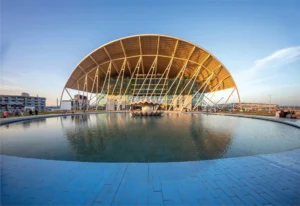
Dream Train in the City of Oysters
Cox’s Bazar Rail Station has been built as a modern marvel for travelers. The new ‘green field’ of railway alignment has connected Cox’s Bazar, the top tourist destination and a rapidly developing region in Bangladesh. Finally, the long-term dream of tourists has been fulfilled. On November 11, 2023, Prime Minister Sheikh Hasina inaugurated the 102-kilometre dual gauge single railway line between Cox’s Bazar and Dohazari in Chattogram and the newly built Cox’s Bazar iconic rail station in the shape of oyster shell. The architect of the station, Mohammad Foyez Ullah, principal architect of Volume Zero Limited, took inspiration from the shape of an oyster for its exterior, which symbolises the beach. It is a station with marine atmosphere at first sight. With this, not only has the country’s leading tourist destination become more easily accessible, the entire southeast region is also poised for boosting trade and connectivity. The rail link project, the latest among several such communication-related projects, is part of an elaborate development scheme focused on Cox’s Bazar. Enhanced connectivity will be crucial for transportation of goods to and from Teknaf land port, as well as the growth of local industries including fish, salt, rubber raw materials, forest and agriculture products and dried fruits, according to local business experts. There are nine railway stations on this route, which means the surrounding areas will also see economic transformation. After Cox’s Bazar to Chattogram the stations are followed by Ramu, Islamabad, Dulahajara, Chakaria, Harbang, Lohagara, Satkania and Dohajari. The rail line will be extended to the Myanmar border, and to the planned deep-sea port on Matarbari Island. The extended part will have three stations – Ukhia, Teknaf and Ghumdhum (Bandarban). Cox’s Bazar Station to enhance tourists’ experience Nestled on a 29-acre expanse in Chanderpara, under the Jhilongjha union in Cox’s Bazar Sadar upazila, stands the paradise sighting station, located three km away from the sandy beach, built at a cost of Tk 215 crore. The six-storied building, covering 187,000 square feet area, captivates visitors with its unique exterior. The canopy serves a dual purpose — not only enhancing the station’s aesthetic appeal but also effectively cooling the building, ensuring proper air circulation, and welcoming ample natural light, according to the project engineers. Adding to the visual allure, a variety of coloured lights grace the front of the building, providing an artistic perspective to the station’s entrance. This station is Asia’s first 100 per cent tourist-friendly central air-conditioned multi-storied station. It has all kinds of facilities for tourists. Arrangements have also been made so that tourists can visit Cox’s Bazar in a day and return the same day without hotel accommodation. This railway is perfect Cox’s Bazar as an international tourist hub. It will be helpful to bring foreign tourists. Not only in the winter, tourists will be encouraged to visit Cox’s Bazar throughout the season including monsoon. In the construction of this iconic station, facilities of various modern stations of the world including China, Belgium, England, and Italy have been taken into consideration. A total of 250 engineers and more than 600 people, including 110 foreigners, were working in the entire project. After four years of hard work, the uniquely beautiful railway station building is visible today. On the ground floor, ticket counters, arrival and VIP lounges, ATM booths, Bank and forex service, pharmacy, post office, railway service office, baby care centre, information booth, and luggage lockers. The first floor offers a departure lounge, waiting lounges, display centres, locker room, prayer space, shops, and a cafe. Levels 2 to 5 house a shopping mall and food court, bookshop, five-star overnight stay option with dining, office spaces, restaurants, a multipurpose hall and hotel with recreational space for passengers. The hotel has 39 rooms. The fourth floor is intended to be leased for offices and conferences. Top floor reserved for future use. Travelers arriving at Cox’s Bazar by overnight train can conveniently store their belongings in lockers and explore the beach and other tourist spots during the day before catching a night train back to Chattogram or Dhaka. Tourists can leave their luggage in station lockers while they enjoy their time sightseeing at the beaches and tourist sites. Around 500 tourists will be able to keep their luggage in the station lockers at a time. As a result, tourists would be able to leave Cox’s Bazar without staying at night in hotel. However, they have to pay locker rent for this. The station is equipped with ample amenities, including escalators, lifts, parking area and refresh rooms for men, women, and those with physical disabilities. Accessing any of the three platforms is made easy with a footover bridge connected to escalators, staircases, and a ramp bridge facilitating movement between platforms. The rail station also features separate facilities for women, children, the elderly people. The Cox’s Bazar station has the capacity to transport around 50,000 people each day, as well as facilitate the operation of wagons for transporting fish, dried fish, salt and other items. Work of the project is being completed in two parts with China Railway Engineering Cooperation (CREC) and Toma Construction carrying out the first part from Dohajari to Chakaria and China Civil Engineering Construction Corporation (CCECC) and Max Infrastructure Limited are doing another part from Chakaria to Cox’s Bazar. Additional Deputy Inspector General of Tourist Police Cox’s Bazar region Apel Mahmud said the arrival of tourists in Cox’s Bazar will increase, thanks to the train service. All kinds of preparations have been made for the service and safety of tourists, he added. Passengers say the journey is enjoyable. A crooked rail line has been built through the green field and forest. Sometimes the hills touch, sometimes the eyes will be drawn to the unique beauty of the green village of Bangladesh. A hundred kilometers of railways has completed to see such a scene. Every station is equipped with relay batteries, generator rooms, sewage and waste management facilities, and energy-saving features such as solar panels. Both meter and broad gauge rail
Read More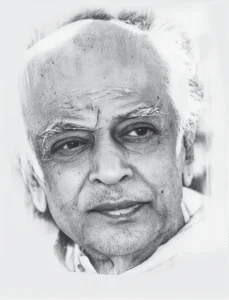
Ahead in Time’s Silent Symphony
Beyond his role as an innovative architect, Muzharul Islam was characterised by humility and an unassuming nature. His consistent choice of traditional clothing and a preference for a modest lifestyle indicated a deep commitment to his craft rather than a pursuit of personal recognition. The simplicity and focus on perfection in his work underscored the profound impact of his architectural contributions, and the enduring prominence of his legacy in South Asian architecture speaks volumes about his unwavering dedication and passion.
Read More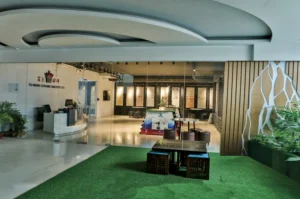
Fu-Wang Ceramic Industry A Journey of Resilience and Growth
FU-WANG Ceramic Industry Limited, founded in 1995 as a joint venture between Taiwan and Bangladesh, has evolved into a major player in the ceramic industry. Despite Taiwan investors’ departure in 2008, the company continued to thrive, reshaping the landscape of ceramic production in Bangladesh. During the 1990s, Bangladesh heavily relied on ceramic imports from countries such as China, Sri Lanka, Spain, and Italy. Fu-Wang entered the market and made a significant impact. Subsequently, other prominent players like RAK, CBC, and Mir Ceramic joined, solidifying their presence in the country’s tiles market. Presently, RAK, DBL, Fresh, Fu-Wang, and X Ceramic are the key players in Bangladesh’s tiles sector. With an aggregate investment of $1.8 billion in the ceramic sector, of which 66 per cent is allocated to the tiles, the domestic tile market is valued at $650 million. Fu-Wang Ceramic Industry went public in 1998, listing its shares on the Dhaka and Chattogram Stock Exchanges. Fu-Wang Ceramic has created a good number of employment opportunities. Its products are manufactured in the factory of Gazipur. The company has since maintained impressive annual growth, consistently achieving a 20 per cent increase. Product diversification and challenges faced Fu-Wang Ceramic Industry is known for producing two types of products: those tailored for the mass market including industries, universities, shopping mall etc. and luxurious tiles designed for apartments, hotels and offices. The company has also introduced high-quality brands like Picasso and Picasso Premium, offering larger wall sizes and various floor sizes tiles under the guidance of European and Asian technologists. The foundation of Picasso Premium 60x60cm PGVT tiles lies in state-of-the-art robotic technology. Each tile is crafted with unparalleled precision and accuracy, ensuring uniformity in size and shape. The company employs Nano Technology in the production of PGVT tiles, enhancing their durability and shine. This advanced technology creates a protective layer on the tile surface, making them resistant to scratches, stains, and wear. The timeless elegance of marble, the warmth of wood, or the modernity of concrete, Fu-Wang designs capture the essence of nature and elevate the interior design to new heights. Each of 60x60cm PGVT tiles is meticulously packed with a surface protective film. This film safeguards the tiles during transportation and installation. However, the industry currently is facing a range of challenges. These include difficulties in opening Letters of Credit (L/C), surging natural gas prices coupled with low gas pressure, and unreliable electricity supply to factories. Moreover, navigating the intricate landscape of government policies has posed additional obstacles for businesses in Bangladesh. Besides, current economic headwinds has contributed to decline in the sales of the ceramic products. To carry on the business, the government should withdraw Supplementary Duty (SD) on the local ceramic products and supply gas and electricity uninterruptedly to the factories. The CEO of Fu-Wang Ceramic Industry Limited (FWCIL), Mr. Rafiquzzaman Bhuiyan, shared his experiences with the Ceramic Bangladesh (CB) in an exclusive interview. Adapting to market dynamics Despite these challenges, Fu-Wang Ceramic Industry remains steadfast in its commitment to leading the tiles sector in Bangladesh. The CEO recognises that competition is intensifying, and only large companies will be able endure while smaller ones might face closure. Making profit is tough due to competition. Besides, the demand for high-value and luxurious products is increasing in local and international markets. So, small companies have to compete with large companies. However, considering current market demand, they have to change product designs in accordance with new technology. Now local companies are meeting 85 per cent domestic market demand. And the rest of 15 per cent is met by imported products. If they can reduce import dependency further, dollar reserve will increase. So, policy support is crucial. “Our plan for the future is to manufacture selective and valuable products to compete in the market. We will expand our production base. Mass production helps to reduce product costs. We will produce high-value products in the future increasing market demand,” said Mr. Rafiquzzaman Bhuiyan. To meet the evolving market demands, Fu-Wang plans to adapt its product designs using new technologies. Moreover, they aim to reduce their dependency on imported products to bolster their reserves. The company’s strategy for the future is to manufacture selective and high-value products to cater to the increasing demand in both local and international markets. Export challenges, domestic potential While the export market has presented challenges due to global competitiveness, the domestic market for tiles has experienced significant growth. Changes in people’s lifestyles and increased per capita income have contributed to the surge in demand. Fu-Wang is exploring the possibility of entering the tableware manufacturing sector and is focusing on branding and digital marketing to expand its market presence. A call for government support and FDI The domestic demand for tiles has increased vastly thanks to change in people’s lifestyles and booming construction sector. A good number of companies have also been established here. In Bangladesh, the number of tile companies may further go up as tiles are now used in rural areas too. So the market is expanding, and it will continue to expand. People are spending more money on their houses as a pre-emerging country. In this context, Fu-Wang management is planning to what type of new products can be brought in the market in future. Meanwhile, Bangladesh has made a reputation in the international market exporting high-valued tableware products. However, there is a huge potential for foreign direct investments (FDI) in Bangladesh. The government has set up 100 special economic zones, something which is a positive initiative to bring more FDI. Also, there are some challenges including land scarcity, gas and utility supply, and the business operational registration process. All problems should be resolved as soon as possible. Besides, transparency and accountability are crucial to ensure ease of doing business. Basically, the country’s all services should be available on online. Mr. Rafiquzzaman Bhuiyan underscored the need for government support, including withdrawal of supplementary duty on local ceramic products, reducing import duties on raw materials, uninterrupted gas supply, and reliable
Read More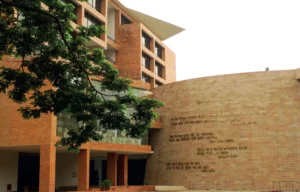
Silence, an Integral Aspect of Architecture
As Nurur Rahman Khan commenced his discussion on architecture, a concept exists only as an idea that becomes apparent once it is created. Attaining the deep level of architecture requires a great deal of time, attention, and meditation. If we wish to reach that level of it, we must bring our soul to it. It could be difficult for the public to comprehend or accept it entirely. Nurur Rahman Khan began his architectural career at Bangladesh University of Engineering and Technology (BUET), despite lack of understanding of how architecture functions. The sole realisation he possessed was that architecture constitutes a fusion of engineering and creativity. In his formative years, he delved deeply into music, photography, graphic design, acting and writing alike. Before he began his career in architecture, he had no prior experiences in drawing or sketching. Over the time, he acquired the skill of drawing architecture from mathematical drawings in the form of ‘axonometric’ drawings. He did not become aware of architecture until the very end of his first academic year, since it was then that he was able to appreciate architecture’s beauty. As a consequence of his subpar craftsmanship, he used to receive lower grades. After his first year of school, he began going to the library to learn about the aesthetics of architecture. It was at that point during which he began comprehending the aesthetics of architecture, and since then he never stopped his journey to acquire knowledge about it thereafter. He continued by outlining the method by which architects prioritise aesthetics over attaining the fundamental purpose of their design, instead of flaunting the design, one should be proud of it. The greatest architect of Bangladesh, according to him, is Muzharul Islam, and his level of prosperity ends there. We are forfeiting numerous facets, failing to appreciate the true essence of architecture. Our focus has shifted towards the grandiose, the towering, and the extravagant, relinquishing our humanity to the allure of grandeur and brand-centric values. Addressing the architects within our community, NR Khan inquired about the apparent challenge in reaching the remarkable levels of creativity and imagination set by Muzharul Islam in the field of architecture. Tanya Karim and Nurur Rahman Khan, who are partners, founded an architectural firm with the goal of significantly altering the architectural arena. Their office became known for its theoretical pretext, search for situated modernity, and use of historical and cultural allusions. In the summer of 1991, Tanya Karim, NR Khan & Associates became known as an architectural firm leading the way in modern ideas in Bangladeshi architecture. Throughout his academic journey, he teamed up with Tanya Karim as a groupmate, and their collaborative synergy flourished after they graduated between the years 1992 to 1993. In his viewpoint, when discussing Tanya Karim, he recognised her as a nurturing figure who would impart knowledge to classmates just before exams. He highlighted the enduring complementarity between himself and Tanya Karim. During their studies with her, a profound mental connection was forged. Tanya Karim played a pivotal role in enlightening him about the intricacies of art, fashion, and other facets of design, drawing from her upbringing in a culturally enriched family. Their designs are always inextricably linked to the point at which the architecture’s user finds it worthwhile. One of their cherished projects is the Shanchita Residence, envisioned as a Baganbari- A House in a Garden. It was conceived with the idea of providing a nurturing environment for both the users and their children to cherish as they grow. The concept of Baganbari is not merely about architecture; it’s a philosophy woven into the very roots of the design. It is a place where family bonds are nurtured, and the architecture becomes a silent witness to the laughter, joy, and shared moments that shape the family. “A project is a canvas of someone else and we are the architects painting on it, if we indulged a self-centered design, it definitely would have a short lifespan,” Nurur Rahman Khan remarked. They (TKNRK) have secured positions of distinction in numerous competitions, notably triumphing in the National Competition organised by the Institute of Architects Bangladesh (IAB) in 2012. They clinched the 1st prize for their outstanding design of the Bangla Academy. The Bangla Academy project takes a multifaceted approach to sustainability rather than focusing only on being “environment friendly”. “Site” is the first sustainability metric that the project looks at. On the grounds of a historic building and later additions to the “Bangla Academy complex’’. In the modern era, there appears to be a tendency to use sophisticated design techniques and technology in order to achieve a “green” solution to building design. It is important to remember that utilising the actual “environment” is one of the most logical approaches to designing “environment friendly” architecture. The site, the environment, and the climate should take center stage. “Indifferent” methods can be used to create a successful “green” architectural design. As for the building design, a significant portion of the office building has been designed to benefit from natural ventilation and abundant natural lights. Most days, the interior is bathed in natural light, creating a well-lit and airy environment. Moreover, when discussing TKNRK, he emphasized, “We are forward-thinking individuals, acutely aware of the essence of our architectural pursuits. Our ancestors crafted cities like Mahasthangarh 2000 years ago without external guidance as today’s. Therefore, as architects today, why limit ourselves to the mundane concept of a ‘Kurey Ghar’ (hut) that does not align with our cultural heritage? Instead, let’s draw inspiration from the grandeur of the cities our forebears-built millennia ago and aspire to create something extraordinary. By utilizing costly materials to create an appearance of frugality, we are engaging in economic dishonestly within the country. This practice not only deceives the economy but also reflects a lack of integrity towards the materials themselves.” For him, it holds paramount importance to instill into people a genuine understanding of the true essence and user-centricity of architecture, steering clear of the reliance on
Read More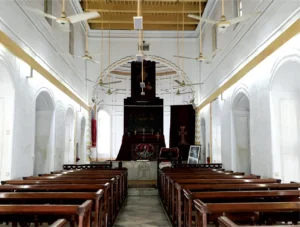
Remains of ARMENIA
As you walk through that particular street of Armanitola where the Armenian Church has been perching for almost two and a half centuries, its white coloured skin subtly piercing you with an invitation to enter inside, a peculiar sillage coming to life from the hundreds of variants of notes from the line of perfume shops beside, mixed with the eerie scents carried by the winds flowing over the Buriganga which is just within a minute of walking distance, will hit your nostrils. Soon, you will start noticing all the examples of unplanned and unappetising architectures of different heights and looks that popped up in the recent decades and still keeps popping up every now and then with no signs of stopping, trying its best to engulf the church with the shadows of its murky glory. The current state of many of the historical structures that had been living in Old Dhaka for centuries, is just like the present attire of Old Dhaka that we gradually forced her to wear – a living testament of what we were, what we could have been and what we are now.
Read More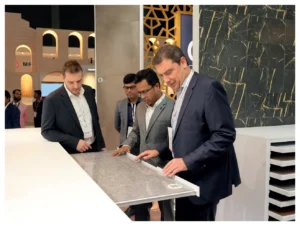
Innovation unleashed at the Ceramic Expo Bangladesh-2022
The first few teasers of the Ceramic Expo Bangladesh-2022 ushered in the forthcoming of one of the biggest and highly anticipated ceramic events in the country. The event took place in ICCB, Dhaka, from 24-26 November, 2022, and was buzzing with visitors all three days. The Ceramic Expo housed 120 exhibitors, 300 brands from 20 countries, and 500 delegates, along with a whopping 23,000 visitors. It brought under one roofexporters, manufacturers and suppliers of ceramic and related products. During the event, visitors came from all over, dispersed excitement across the venue, and filled it with murmurs of conversations. As excitement spread, we saw visitors and exhibitors interact, and the event turn into a big success.
Read More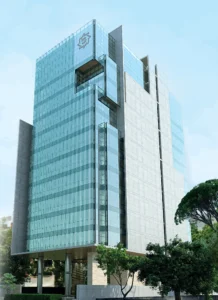
Shahjalal Bank First Green Building in the Banking Sector of Bangladesh
Shahjalal Islami Bank PLC is playing an important role in providing investment in all areas of manufacturing and service sectors, ready-made garments, trade financing, infrastructure and agriculture. Starting operations on 10 May 2001, the bank is running with 12,40,000 deposit and investment customers. As a third generation Islamic Shariah-based private commercial bank of the country, Shahjalal Islami bank plc has reached a strong position within a short span of time and has been playing a worthy role in the economic development. The financial base of this bank is very strong. The bank has currently been providing banking services to its customers with great reputation and trust through 140 branches, 4 sub-branches, hundreds of ATM booths and agent banking outlets, one offshore banking unit and priority centre across the country with 3,000 staffs. It has its iconic 17-storied building with basement on Gulshan Avenue in the capital Dhaka, where the bank’s head office operations are being conducted and being USGBC Lead Gold certified, this building is the first green building in the banking sector in the country. Renowned Architecht Prof. Shamsul Wares has designed the building.
Read More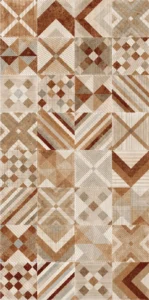
RAK slabs to grace your very own
The ceramic industry is a flourishing demography with innovation at the forefront. Today, we have a brand that resembles elegance and reputation behind it, and also has the potential capability to do outstandingly. Slabs have been used in primitive times and has a clay composition. It came into existence in construction to cover roofs and floors, and the slabs streamlined surfaces and covered more spaces with less grout lines. Clay slab absorbs moisture.
Read More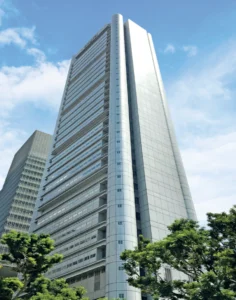
CONCORD The Pioneer in Construction
Concord is the only Bangladeshi company that has completed a 720-foot tall, iconic and technically challenging structure abroad. The SINGTEL Telecom Tower in Singapore was built by Concord in collaboration with Sumimoto Mitsui Construction Company Japan. Concord is proud for the National Martyrs’ Memorial (Jatiyo Smriti Soudho), the national monument of Bangladesh, set up in the memory of those who laid down their lives in the country’s War of Independence in 1971. The monument is located in Savar, about 35 km northwest of the capital, Dhaka. It was designed by Syed Mainul Hossain and built by Concord in 1982 in only 89 days.
Read More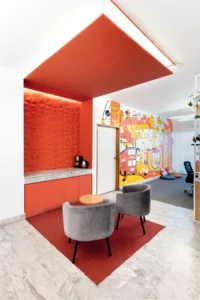
A Look Inside the Vibrant World the Potato Digital Office
Designed by architects Sanzid Iqbal Rizvee and Rubayet Ferdous, construction for the Potato Digital Office commenced in May 2022 and was successfully inaugurated in June 2022. Remarkably, within a brief period of 45 days, the team efficiently designed and executed the vibrant space at their new Gulshan branch. Soon, the office turned out to be the talk of the town.
Read More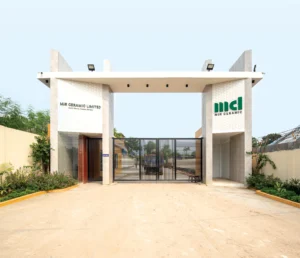
Shahanawaz Maestro of Ceramics, Carving a Lasting Legacy in Bangladesh’s Ceramic Tapestry
In the captivating tapestry of Bangladesh’s ceramic industry, one name resonates as a beacon of creativity, dedication, and unwavering passion. That is Shahanawaz. With over three decades of commitment, Shahanawaz’s journey through the twists and turns of the ceramic sector has become a legendary one.
Read More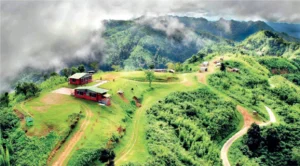
Caressing The Clouds From 3,235 Feet Above in Bandarban
Bandarban is more like a complete, separate entity and a world of its own, lying gracefully and peacefully on the south-eastern part of Bangladesh. When the lethargy hits you amid the daily blues, this place can work as a whimsical healer and boost our weary souls.
Read More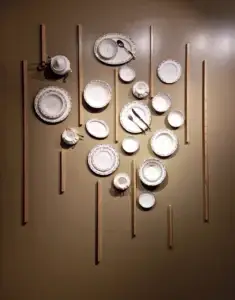
Spilling teas from Monno Tea Room
After establishing a glorious legacy of around four decades, Monno Ceramics not only made a mark in the people’s hearts but also in their households. Now that it has stretched its new endeavour into a restaurant, one must wonder if it was only organic to come up with the idea since Monno already has its hands on the core ingredient of any eatery, which is tableware!
Read More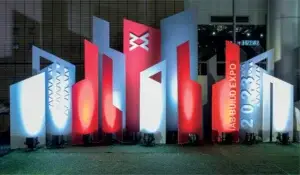
IAB Build Expo 2023
Once upon a time, people were unaware about the concept of green construction which refers to sustainable building or other establishments. Now a remarkable change is noticed in the construction sector of the country, thanks to local entrepreneurs, traders, and architects. Nowadays, the demand for environment-friendly construction materials including blocks and ceramic products is going up significantly.
Read More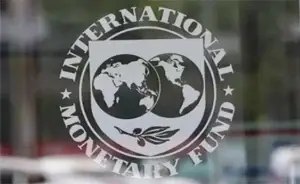
Economy in the Doldrums with Inflationary Pressure, Dollar Crisis
Bangladesh sees the end of 2023 with a huge deficit in its financial accounts, the widest gap between foreign currency income and expenses in its history. Consequently, the Bangladesh Bank is struggling to arrest the decline in foreign exchange reserves. This has led to a record imbalance in the overall balance of payments. The repercussions of this financial strains have extended to the commoners and made the fiscal year 2023-24 exceptionally challenging. Despite assurance from the Finance Minister in his budget speech that inflation would be contained at 5.6 per cent, average inflation rate was 9.2 per cent, intensifying the economic pressure and exacerbating the burden of soaring commodity prices on the ordinary people.
Read More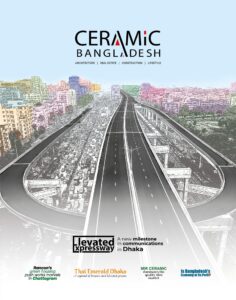
Elevated Expressway A new milestone in communications in Dhaka
The First Dhaka Elevated Expressway (FDEE) is called a ‘new milestone’ in communications and the project is being implemented under Public-Private Partnership (PPP) arrangement to alleviate traffic congestion in and around the capital. It has already been visible after inauguration of a portion of total of 46.73-kilometre-length with ramps, including a main elevated section spanning 19.73 km in the city. Prime Minister Sheikh Hasina inaugurated the 11.5 km part of it between Hazrat Shahjalal International Airport and Farmgate section, on September 2 with the key objective to shorten the lead time for exports and imports activities. Now people can travel the Airport-Farmgate site in 10 minutes thanks to the FDEE inauguration in the densely populated city. It often takes two hours to travel the 11.5 km due to severe traffic congestion. According to the First Dhaka Elevated Expressway Company Ltd, the total of 46.73-km-long elevated expressway is covering Airport, Kawla, Kuril, Banani, Mohakhali, Tejgaon, Magbazar, Kamalapur, Sayedabad, Jatrabari to Kutubkhali on the Dhaka-Chattogram highway. The entire expressway is expected to be opened for vehicles from Tejgaon to KutubKhali in June 2024. The FDEE project involves construction of a four-lane main carriageway and one elevated link road, comprising: four-lane dual main carriageway of a total length of 19.73 kilometers. It has a four-lane dual link-road carriageway of a total length of 3.1 kilometers. 32 on-off ramps including 16 on-ramps and 16 off-ramps (one-lane carriageway of 5.5 meter width) of a total length of 23.9 kilometers with 8 toll plazas and 43 toll collection booths. Besides the main four-lane dual carriageway and two suspended termini at its ends, it has five interchanges, two elevated links. The approximate total length of the main carriageway Expressway is about 46.73 km including 19.73 km main flyover and 31 km ramps and elevated links. Dhaka-Ashulia, Dhaka-Narayanganj and Dhaka-Chittagong expressways will also be connected with this elevated expressway in future. The project is one of the largest infrastructure projects taken up by the incumbent government spending a total of Tk 13,858 crore to ease traffic congestion. Of them, the cost of Airport-Farmgate section was Tk 8,940 crore. However, the FDEE project is being implemented under the PPP process between the government of Bangladesh, represented by the Bangladesh Bridge Authority (BBA), and the Italian-Thai Development Company Limited (ITD Group), represented by the First Dhaka Elevated Expressway (FDEE) Co. Ltd. According to the authority, around 80,000 vehicles can run on the FDEE a day. Chinese firm China Shandong International Economic and Technical Corporation, one of the three private partners of the PPP project, will operate the control centre. The FDEE is offlimits to three-wheelers and motorcycles. Other vehicles run on the structure at a maximum speed of 60km per hour in expressway and 40km per hour in ramps at the beginning. BRTC bus services commenced on the Expressway. The non-stop service, which began initially, runs with eight double-decker buses from Farmgate to the Airport. Road Transport and Highways authority said cars, SUVs, microbuses with fewer than 16 seats, and trucks with a capacity of less than three tonnes will pay Tk 80 for using the expressway. Trucks with six wheels will pay Tk 320, those with more than six wheels Tk 400, and buses with 16 or more seats Tk 160. Payment is being processed through e-ticketing. Local construction industries are thriving At least 10 local companies are making and supplying materials, such as cement, steel, stone and paint, for constructing the country’s first elevated expressway. Local products in place of imported alternatives are also being used in this mega project. This is not only saving foreign currency but also building the capacity of the local companies. A major portion of the Tk 8,940 crore project is being constructed using local materials. Of the 10 local contributors, six are cement companies while two are steel makers and the others make paint and PVC products. The cement makers are: Shah Cement, Crown Cement, Bashundhara Industrial Complex, Heidelberg Cement, Seven Rings Cement and Premier Cement. The BSRM and GPH Ispat are providing steel for the project while two concerns of RFL Group — RFL Pipe and Fittings, and Rainbow Paints — are supplying necessary pipes and road marking materials. RN Paul, managing director of RFL Group, said they are providing waste and rainwater pipes and fittings for the drainage system of the elevated expressway as well as road marking materials. Mr Paul explained that if local companies do not provide the required construction materials, then they would have to be imported at the cost of huge sums of foreign currency. “So, local companies benefited and also the process helped save foreign currency through such cooperation,” he said. Till September 2023, a total of 66,000 tonnes of steel has been used in the elevated expressway project, with BSRM contributing a majority 52,000 tonnes (80%). Tapan Sengupta, deputy managing director of BSRM, acknowledged that involvement in this type of large project helps local construction material companies grow their capacity and achieve global standards. Sheikh Masadul Alam Masud, founder chairman of the Bangladesh Steel Manufacturers Association, said the local steelmaking capacity has nearly doubled to about 9 million tonnes over the past decade. Local cement manufacturers have increased their production capacity to 6 million tonnes per annum while it was 2 million tonnes annually just 10 years ago. Back to history In January 2011, the certificate authority (CA) was signed between Bangladesh government, represented by Bridges Division, the Ministry of Road Transport and Bridges, acted through Bangladesh Bridge Authority (together the “grantor”), and First Dhaka Elevated Expressway (FDEE) company limited (the “concessionaire”). The ITD, the largest construction company in Thailand, established first Dhaka Elevated Expressway Company Limited (“FDEE”) as a 100%-owned special purpose vehicle, registered in Bangladesh, to accede ITD as the concessionaire in the concession agreement for implementation of the project. The BBA signed deal with Italian-Thai Development Public Company to build the FDEE at a cost of Tk 8,703 crore in January 2011. The agreement was revised and inked again in
Read More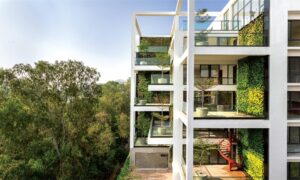
Rancon’s green housing push works marvels in Chattogram
Imagine a time when greenery and what is called green growth were everywhere with the touch of green fingers. Unfortunately, we have to paint a picture in our mind to relish the green landscape of the past. Unlike in the countryside, greenery is like an oasis in the midst of concrete jungle in this time and age. Now, towns people have to escape to a distant village in the hope of relishing a piece of green nature. Greenery and foliage are fast losing out to modernity, urbanisation, and industrialisation. The port city of Chattogram is no exception. This city now abounds with bricks and mortar, stones, and concrete walls that green activists regard as a concrete jungle. If you stand on the balcony or peep through the window, it is hard to see even a piece of the sky. There was a time when a flower garden was an absolute necessity in the courtyard. Also, there used to be a fruit or vegetable farm in the backyard. However, it is time to return from the flashback to the present, as those things of the past are revisiting the urbanites through Rancon FC Properties Limited RFCPL‑. The realtor is working relentlessly to develop sustainable green structures, for both residential and commercial purposes in the port city to feed the growing customer demand for healthy and environment-friendly apartments. The city development authority has mandated setbacks in design to make the home environment healthy. If a building is designed according to the setback, it is sure to have space in front and back in proportion to the size of the land. As a result, it is possible to maintain adequate sources of light and air after the building is constructed. The RFCPL began its journey in Chattogram back in 2010 with an eye toward managing accommodation for the city’s growing population. However, the property developer changed its business philosophy in 2018 as it aspired to create innovative designs, maintain the finest building quality, and establish sustainable living through its creative green establishments.Since its inception, the RFCPL has been transforming the skyline of Chattogram with superior landmarks. It has an array of commercial and residential projects in various central locations such as Agrabad, Khulshi, South Khulshi, Nasirabad, Katalgonj, Halishahar, Mehedibagh, and Panchlaish. The real estate leader has always pledged to ‘Explore Excellence, and, as such, it has strived to keep its promise to meet clients’ expectations of an abundantly green living space. Tanvir Shahriar Rimon, CEO of Rancon FC Properties Limited, says his company attaches great importance to environment-friendly housing as the changing climate patterns, mostly due to reckless human interventions, are impacting lives and livelihoods across the world. “Our company aims to create lifestyles at all stages of the process, from design to construction and beyond. It has set the benchmark for premium commercial and residential real estate in Chattogram. The RFCPL is the optimal choice for customers’ real estate demands in the port city. Each of our projects includes rooftop solar and rainwater harvesting systems. Apart from that, the building is made only after leaving enough space as per the setback to maintain the complete system of light and air,” he pointed out. RFCPL attaches great importance to environment friendly housing as the changing climate patterns. Building temperature is less than 2.0-3.0 degrees celsius than any other buildings in the country. He added, the company is crafting the art to uphold the vertical landscape in different projects, one of their specialities and attractions. Building temperature is less than 2.03.0 degrees Celsius than any other buildings in the country, thanks to use of green materials in line with their green policy, he pointed out. Major Features of Rancon Projects Green materials and equipment, renewable energy, energy-efficient technology, automation, water recycling, rainwater harvesting, and curbing the waste of building materials are the key features of Rancon’s projects. Every unit has natural light and ventilation. A green entrance and water fountain have been set up. Many buildings have special fire hydrant facilities. In the case of any fire incident, there are two types of systems: detection and prevention. Apart from home automation systems, there is a video intercom system and 24-hour security. Wi-Fi facilities are also there in many compounds. Several elevators, as well as generators, are available. Inspace, another concern of Rancon, is designing all of the projects. Wahidur Rahman, Inspace CEO, and principal architect, told Ceramic Bangladesh that international standard design, modernity, and aesthetics have been combined in all of their building projects.Additional facilities are available for exclusive projects. Facilities include, multiple basements and open ground floors with parking, reception, waiting area, gym, prayer space, community space, driver’s lounge, and laundry. An adequate green system has been built, Mr. Rahman pointed out. Eco-friendly Projects Chattogram city has been facing various problems in recent decades, such as a lack of green space, recreational facilities, and disasters. So, the RFCPL is running a total of 23 projects related to commercial and residential schemes with its green goal. White Oak White Oak, handed over recently as a green project, boasts an exquisite oak theme and is the first of its kind in Chattogram. The rainforest welcomes a visitor at the entrance. Three different lounges were purposefully made to engage the community, while space for a gymnasium and a mindfulness zone reduce stress and have a positive impact on the mental health of the dwellers. This white structure, standing sublimely in the tranquil Mehedibagh Residential Area, has not only transformed the surrounding area but has also revolutionised the lifestyle of its inhabitants. The RFCPL’s main objective of “Creating Lifestyles” has been achieved through this holistic approach. Park Terrace Park Terrace is another project that the RFCPL has recently handed over to its sophisticated clients. It was designed to foster a sense of calm and well-being with thoughtful features that promote relaxation, focus, and connection. From the serene vertical garden and meditation place to the lush rooftop terrace spaces, they are carefully crafted to enhance
Read More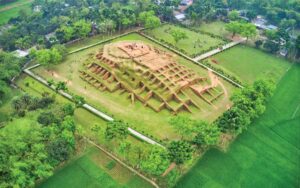
Mahasthangarh the Cultural Capital of SAARC
At times when we get tired of the city’s dust, chaotic traffic, and hectic jobs; we might want to step outside its orbit and get some fresh air with a touch of greeneries and nature or want to get closer to history and tradition. Bangladesh, despite being densely populated country with compact horizon, still stands proud on the global map with its rich heritage and significant tourist attractions. Mahasthangarh, the earliest urban archaeological sites and the oldest-known city, is one such must-visit tourist spot for both the historians and the travelholic people. Before the birth of Jesus Christ, i.e. about 2500 years BC, the civilized town was established here. Archaeological evidence has been found. It is located in Shibganj upazila of Bogura district, lying on the western bank of Korotoa river, about 13 kilometres north of Bogura city on the Dhaka-Dinajpur highway. Once Mahasthangarh was the capital of Bengal. It was declared the Cultural Capital of SAARC in 2016. An interesting fact about Mahasthangarh is that it is also a flood-free physiographic unit because of the elevation of 15-25 meters above the surrounding lowlands, which makes it an even exquisite historical tourist spot. It is believed to be the main reason for urban development here as it is one of the highest regions in Bangladesh. The land here is 36 meters (118 ft) above the sea level, while Dhaka, the capital of Bangladesh, is only 6 meters (20 ft) above sea level. Another reason for choosing this place is the location and shape of Korotoa river. The river in the 13th century was three times wider than the present Ganga. Mahasthangarh is located in the red soil of Varendra region which is slightly higher than the alluvial region. Areas above 15-20 meters are considered flood-free geological zones. Mahasthangarh the most significant Buddhist archaeological site, was a thriving administrative, religious, and cultural centre from the Mutual Empire era to the Sen Dynasty era. Initially, the location was known as Paundravardhanapura or Pundranagara, both of which are references to the Pundra Kingdom from Indian epic literature, which was claimed to rule over a region of India, now known as Bihar. A broken limestone slab from the 3rd century BC that bears six lines in ‘Brahmi’ script has been found there with the name ‘Pundranagar’ inscribed on it. The walled city has archaeological monuments from different periods. For several centuries this place was the provincial capital of Maurya, Gupta, Paal, Sen rulers and later the capital of Hindu feudal kings. Numerous Hindu kings and kings of other religions ruled from the third century BC to the fifteenth century AD. Hazrat Shah Sultan Mahmud Balkhi (RA) and his disciples came to spread Islam in this area. There is an amazing legend about the preacher Shah Sultan Balkhi. It is said that he crossed the Korotoa river on the back of a huge fish-shaped boat while entering Mahasthangarh i.e.ancient Pundranagar. The famous Chinese traveler Hiuen Tsang visited Pundranagar between 639 and 645 AD. In his travelogue he describes the nature and lifestyle of the time. Being famous for Buddhist education, monks from China and Tibet used to come to Mahasthangarh to study. Then they went out to different countries in South and East Asia. There they spread the teachings of Buddhism. The topography of the place offers a fascinating cubicle-like view. The entire area is surrounded by a fortification wall. The rampart of the city, built with burnt bricks, belongs to six building periods, among which the earliest belonged to the Maurya period. Various mounds and monasteries (bihar) are scattered throughout the vast area outside the fortification wall including Bairagir Bhita, Govinda Bhita, Khodar Pathar (stone of Allah) mound, Mankalir Kunda mound, Jiyut Kunda (Well of Life), Godaibari Dhap, Noropotir Dhap, Gokul Medh (Lokhindorer Bashor Ghar), and Bhasu Bihar. One of the highlights of Mahasthangarh is Govinda Bhita, where remnants of two Buddhist temples can be visited. Opposite Govinda Bhita, near the north side of the citadel, one can find the Mahasthan Archaeological Museum. The museum, though small, has a well-maintained collection of pieces recovered from the site including the statues of Hindu and Buddhist gods and goddesses, terracotta plaques, fragments of ceramics, well-preserved bronze images found in nearby monastery ruins that date back to the pre-Paal period. Gokul Medh Buddhist monastery, located about two kilometers south-west of Mahasthangarh, belongs to the most impressive archaeological sites in this area. Behula Lakhindorer Basor Ghor Behula is the protagonist in the Manasa Mangal genre of Bengali medieval epics. A number of works belonging to this genre were written between the thirteenth and eighteenth centuries. Though the religious purpose of these works is to eulogise the Hindu goddess Manasa, these works are more well known for depicting the love story of Behula and her husband Lakhindar.
Read More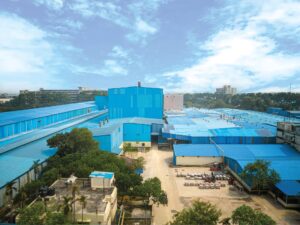
MIR CERAMIC Dominates The Quality Tiles Market
Mir Ceramic Limited (MCL) is one of the largest, prominent ceramic and porcelain tile manufacturers in Bangladesh. The most trusted tiles manufacturer was founded in 2001 and began commercial production in 2002 with the globally acclaimed Italian brand SACMI’s state-of-the-art machinery, widely acknowledged as the best ceramics manufacturing equipment provider in the world. Mir Ceramic is a proud member of Mir Group of Companies, one of the oldest and highly reputed conglomerates in Bangladesh. The Group began its journey in 1968 as Mir Akhter Hossain Limited (MAH), the iconic construction company in Bangladesh. The group has diversified into real estate, banking, telecommunications and ICT industries. Mir Ceramic produces a range of high-quality products such as porcelain tiles, ceramic wall tiles, granite floor tiles, homogenous stair tiles, and industrial tiles. One of their most popular products is the Mir polished tiles, which are renowned for their exceptional durability and smooth finishing. It has a production capacity of 90,000 square meters of tiles per month. Proudly promoting ‘Made in Bangladesh’ with a combined workforce of 2,000 local craftsmen and artisans for manufacturing. Mir Ceramic Ltd prides itself on its commitment to quality and customer satisfaction. With a team of experienced professionals and the latest technology, they strive to deliver the best possible products to the customers. The company is constantly innovating and expanding its product line to meet the changing needs of the market. Skilled Manpower, Innovation, World-Class Machinery and Raw Materials are behind the Success As one of the leading ceramic and porcelain tile manufacturers, Mir Ceramic Ltd has established a strong reputation for excellence in the industry. Its products are highly sought after by builders, architects, and homeowners alike, who appreciate the quality, durability, and style that the company delivers. Mir secures the highest quality raw materials from across the world, including Spain, Italy, Malaysia and Thailand. MCL has assembled an expert production team, with decades of experience in the industry, to oversee manufacturing. As a result, Mir Ceramic produces tiles with the highest bending strength and lowest water absorption in Bangladesh. Consistently producing superior quality tiles for over so many years has helped establish Mir as a dominant player in the upscale tiles market in Bangladesh. Mir Ceramic’s vision is to create a world where those who won’t settle for anything but the best can proudly use tiles made right here in Bangladesh. MCL is committed to producing the strongest and longest lasting tiles in the country by continually adopting the latest manufacturing technology and sourcing the very best raw materials from around the globe. MCL takes a customer centric approach to product development, by continually engaging customers and technology partners to develop products that meet the evolving needs of the discerning clients. MCL aims to achieve growth while continuing to be environmentally responsible. To achieve this, the company continually leverage the latest technologies to increase the efficiency of manufacturing and energy generation processes and captures and reuses energy, waste raw materials and water. Manifold regulations are key hurdle for local and foreign investors “Once the use of ceramic products in Bangladesh was comparatively low. This was due to low purchasing power of people and high cost of ceramics products at the time. Earlier, the country was heavily dependent on imports spending huge amounts of foreign currency. This inspired the Group to enter the tiles manufacturing business in 2001. By producing tiles locally, we saw an opportunity to not just to reduce import dependency but also value add and create well-paying jobs,” Ruslan Nasir, Deputy Managing Director of Mir Ceramic Limited (MCL), told the Ceramic Bangladesh magazine. He said, once upon a time, there were only a handful of companies producing tiles in Bangladesh. Most tiles produced locally were unable to meet international standards. Mir Group established MCL with a clear objective: to make the strongest and longest lasting tiles in Bangladesh. Since its inception, Mir Ceramic has utilised Italian manufacturing equipment. MCL secures only the highest quality raw materials. Ruslan Nasir said, “Mir has played a pioneering role in the manufacture of quality tiles by being the first local company to utilise European machinery. From day one, we were very serious about the quality of our products. This helped establish Mir as one of the largest and most trusted tiles manufacturers in Bangladesh. Till date, Mir Ceramic is the only ceramics company to be awarded the prestigious President’s Industrial Development Award.” “However, the company faced many challenges in the early days. One of the greatest challenges was the lack of skilled manpower at that time. Mir invested heavily in skill development, through a combination of hiring workers with international experience and hiring foreign trainers to develop local talent. Skilled manpower development, combined with world-class machinery and raw materials, helped Mir Ceramic bring tiles of international quality to the Bangladesh market.” In the last 10 years, the ceramics sector in Bangladesh has experienced phenomenal growth. Today, locally made high-quality ceramic products are more readily available in the country. Recent studies reveal that local capacity is now capable of fully meeting the demand and accounts for over 80% of local consumption. Local manufacturers are benefiting from economies of scale thus driving down prices. This has made locally made ceramics products affordable to a larger segment of the population. As a result, the ceramic sector in Bangladesh has grown 200% in the last decade, creating 60,000 jobs directly in the process and 5,00,000 indirectly. Founder of Mir Ceramic Ltd. and Managing Director, Mir Nasir Hossain is a leading business figure of Bangladesh. He has served as President of the Federation of Bangladesh Chambers of Commerce and Industries (FBCCI), the apex trade organisation. He established Mir Ceramic with a clear objective of producing the strongest and longest lasting tiles in Bangladesh. As Managing Director of Mir Telecom Ltd., Mir Nasir Hossain has received the National Export Trophy (Gold) from the Prime Minister of Bangladesh on multiple occasions. However, the industry has faced significant challenges in recent times which could threaten
Read More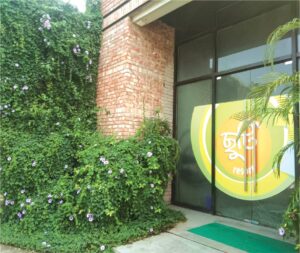
Chuti Resort An Escape from Chaos
‘Chuti’ is a famous juvenile poem by Nobel Laureate Rabindranath Tagore. Bengali ‘Chuti’ means vacation, rest. Take a break from busy work. Some time to laugh, play and enjoy. The Chuti Resort was built from that spirit. If you are looking for an escape from the hustle and bustle of city life and to immerse yourself in the serene beauty of nature, Chuti Resort can be your perfect destination. Nestled beside shimmering Lakes, Chuti Resort provides an idyllic backdrop for a rejuvenating getaway. It is dedicated to offering a top-tier eco-friendly lifestyle experience in Bangladesh. Situated near Bhawal Rajbari, 18 kilometers from Dhaka Airport, this resort is in Sukundi village on the eastern side of the Gazipur, a meagre three-kilometre from the renowned heritage site Bhawal Rajbari and Bhawal National Park. Conveniently accessible by road, it takes approximately 1 .5 hours to reach the main destination from Dhaka. Spanning 17 acres of lush greenery, Chuti Resort is committed to highlighting Bangladesh’s rich natural and cultural heritage, promising guests unique and authentic experiences. As one embarks on a journey through this resort, s/he can explore the myriad features and amenities that make them truly exceptional, from serene Lake and inviting decks to whimsical treehouses, engaging Kids Zones, refreshing swimming pools, and luxurious suites. Breath taking views of surrounding lake water and wildlife in amazing natural beauty of land covered with dense green blanket of flora makes anyone feel like enjoying the country’s natural heritage. In this peaceful and tranquil environment, you can have the glimpse of wildlife, firefly processions at night and according to the rules of the resort, during moonlight no light is lit in outside. It is one of the best holiday destinations to enjoy the full moon and rain in the rainy season; also to breathe in the fresh air. Central Lake is the heart and soul of this resort, serving as a serene focal point that encourages relaxation and reflection. Chuti Resort is nestled at the center of a forested oasis and the lake creates an atmosphere of tranquility. Guests can enjoy the gentle symphony of croaking frogs and chirping crickets as they sip their morning coffee on the deck of their cabin or lounge peacefully beside the water’s edge. The lake also provides opportunities for a variety of activities, such as catch-and-release fishing, where guests can try their hand at landing a variety of aquatic species, adding an element of adventure to the serene landscape. Eco-Friendly Boutique Resort Chuti lodges facility that takes steps to reduce its carbon footprint while giving back to its local community. Some of the best ways that they practice to make the resort more eco-friendly and sustainable, maintain energy saving, limit water waste, have guests reuse linens, equip staff with eco-friendly cleaning staff, serve local and organic food. “Accommodation in nature resorts is thoughtfully designed to offer guests an immersive experience while ensuring maximum comfort.” Advocate Mostofa Mahmud Arifee, the chairman of Chuti Resort said adding, “Perched near lakes, these enchanting sanctuaries offer a one-of-a-kind connection with the natural world.” There are 50 rooms with several types of accommodation facilities such as Cottages, Royal suites, Villas with luxurious bathrooms, and private decks with breathtaking views of the surrounding landscape. Falling asleep to the rustling leaves and waking up to the melodic songs of birds is an unforgettable experience. Families with children are warmly welcomed at nature resorts, where they have dedicated Kids Zones designed to engage and entertain the youngest guests. These imaginative spaces are created to introduce children to the wonders of the outdoors in a fun and educational manner. Playgrounds, nature-themed activities, and hands-on programmes encourage kids to explore, learn, and develop a deeper appreciation for the environment. There is a treehouse making a favourite space for kids to play and spend time. It’s in these Kids Zones that young adventurers can discover the thrill of discovery and the joy of connecting with nature. Chuti Resort’s allure is further enhanced by the inviting swimming pool. This refreshing facility provides guests with a cool respite on a sunny day, inviting them to relax and rejuvenate amidst the beauty of the natural surroundings. After a day of basking in the tranquility of the outdoors, a dip in the pool is the perfect way to unwind and savour the memories created throughout the day, adding an extra layer of luxury to the experience. Advocate Mostofa Mahmud Arifee Chairman, Chuti Resort When it comes to dining, Chuti Resort offers farm-to-table experiences that celebrate the flavours of the region. Fresh, locally sourced ingredients are transformed into delectable dishes that are as much a feast for the eyes as they are for the palate. Guests can indulge in culinary delights while dining al fresco on outdoor decks, where the soft babbling of the nearby pond and the gentle rustling of leaves create a harmonious symphony of sensory delight. The experience is further elevated by the opportunity to dine under the stars, adding a touch of enchantment to every meal “In Chuti resort we provide Pleasant for couples and families, corporate meetings and workshops, Cottages, and suites to accommodate Modern restaurants serving delicious foods and Authentic recreation in a village environment,” Advocate Mostofa Mahmud Arifee mentioned. Chuti Resort is a magical sanctuary where guests can disconnect from the pressures of the modern world and rediscover their profound connection with the natural world. Whether one is basking in the serenity of a picturesque pond, finding enchantment in a luxurious treehouse suite, watching children explore the imaginative Kids Zone, taking a refreshing plunge in the inviting swimming pool, or savouring farm-to-table dining on a scenic deck, this resort offers a tapestry of experiences that pay homage to the beauty of nature. Chuti Resort serves as a reminder that in our busy lives, the wonders of the natural world are always ready to embrace us, providing solace, adventure, and a deep sense of wonder that leaves an indelible mark on our souls.
Read More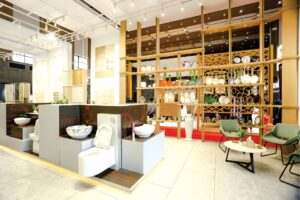
AKIJ CERAMICS BRINGING PERFECTION
Ceramic Expo Bangladesh, 2022 was a magnificent event for the Ceramic Industry with participation of all the key players in the ceramic market. It was an event for business interaction and social gathering of the ceramic industry that brought all the ceramic manufacturers, foreign raw material suppliers, importers, buyers, dealers, architects and common visitors under a single roof to enjoy a world class exhibition experience and see state-of-art ceramics. It was a 3-day-long celebration of the exhibitors and visitors to explore the ceramics world. With the tagline ‘Promise of Perfection’, Akij Ceramics Ltd. patronised the 3rd Ceramic Expo as the Principal Sponsor. The company had sponsored the event for the 3rd time in a row which was a grand event of the ceramics world in Bangladesh. The largest ceramic brand of the country showcased its tiles, tableware and sanitaryware in the event. Under the name of Akij Ceramics the company displayed its tiles under Akij Ceramics & AURA, tableware under Akij Tableware and sanitaryware products under the brand of ROSA in their pavilion at Hall 4 of Novoratri at ICCB. They showcased all the new innovation and products to attract their customers and make them aware of their product range. It was a great opportunity for the organisation to showcase all of their brands under a single platform and interact with their business partners, suppliers, dealers and fellow companies under the same industry. With the gracious presence of 23,000+ visitors the event has positively impacted on the business. In the event of Ceramic Expo, the prime goal of Akij Ceramics was to bring the new products of all the tiles, tableware and sanitaryware segments. The company is looking forward to reducing import of ceramic products by boosting economic growth and development of the industry. The iconic business leader of AkijBashir Group, Mr. Sk Bashir Uddin along with the brand managers and company representatives were present at the event. The Pavilion was the biggest of all and they had decorated it with their products to present to the target customers and created their own unique impression among the crowd. All the visitors were mesmerised with their product collection and variety and also interacted with the company people present there. Mr. Mohammed Khourshed Alam, Director Operations of AkijBashir Group, expressed enthusiasm about ceramic expo in an interview and their expectation from the overall event was to show their brand strength and collect feedback from the customers. To connect with the visitors more actively, Akij Ceramics provided special offers on spot orders in the expo, instant gift packs and also provided gifts for the social media contest winners. At the event famous celebrity actress Bidya Sinha Saha Mim graced the event with her presence on the second day of the expo. The visitors had enjoyed the meet and greet session with Bidya Sinha Saha Mim and she enjoyed her visit to the pavilion and explored products of Akij Ceramics to explore uniqueness of the brands to promote the best products of the company. In the Ceramic Expo Bangladesh, 2022 under the category of best pavilion, Akij Ceramics Ltd. was awarded with second prize on the Exhibitors Night in the Jury Board Choice Award. The award was presented based on well scale, openness, visitor friendliness, product display etc. Akij Ceramics always believes in perfection that comes with the impression of revival, renewal and diverse innovations in their product design, quality, elegance and uniqueness. It was a great experience for them to become the principal sponsor at the event and explore new business opportunities along with world class experience of displaying ceramic tiles, tableware and sanitaryware to the visitors of home and abroad. AkijBashir Group thanked BCMEA, organiser of the event for such an impressive arrangement of the event and expects to have even better event arrangement in upcoming years. Written by Preety Dey
Read More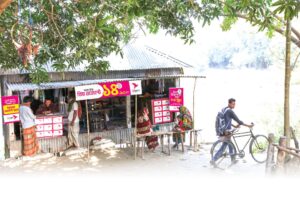
How bKash Empowers People Thru Financial Inclusion
bKash, a mobile financial services (MFS) provider in Bangladesh, is operating as a subsidiary of BRAC Bank Limited, under the authority of Bangladesh Bank. bKash has been providing fast, secure and convenient services via mobile phone to its more than 70 million verified customers for the past 12 years, authorities say. These customers transact more than Tk 20 billion every day. Only recently, people had to wait in long queues in the morning just to pay utility bills. And almost no financial services could be accessed from home comfortably. However, gone are those days, thanks to MFS providers like bKash. Now, millions of people no longer need to worry about paying bills or fees, doing savings, taking small loans or even receiving remittance from abroad – all these are now a matter of a few taps. MFS has evolved into a common platform for availing various financial services. As a result, the hassles people used to face earlier while seeking financial services are now considered a thing of the past. Financial services have reached the fingertips of people from all strata, making life easier. The dependence on digital transactions thereby increased manifold. It’s not just a means of sending money or paying bills anymore. It has become a complete financial service platform with a variety of financial products including merchant payment, savings, nano loan, remittance from abroad, bill payment and mobile recharge. It has become a part of lifestyle. bKash is now a member of every family in weal and woe. Though some other MFS providers have launched similar services, the term “bKash me” in the MFS arena is now the word of mouth that simply denotes money transfer. In its 12 years journey, according to the authorities, bKash has built the strongest network of 3,30,000 agents, commonly called as “Human ATMs” to take mobile financial services to the doorsteps of people in every corner of the country. These agents have not only succeeded in serving customers, but also been able to improve the living standard of their own families. Other MFS operators who came later, took leverage of this distribution channel established by bKash to reach customers. Bangladesh Bank, the regulator of this industry, has had proper guidance and policy support to help MFS flourish and become customers’ trusted partner for daily transactions. Besides, bKash’s service quality, continuous investment and innovation played pivotal role in garnering the trust of custromers. Of its 70 million user base, more than 45 per cent customers are female. Customers can avail its services such as cash deposit, cash withdrawal, money transfer, top-up, remittance, mobile recharge, payment and bill pay by dialing *247# and using Bkash app. To open an account a customer has to fill the prescribed customer registration form (KYC) with complete details. If the money goes to the wrong number it should be reported to 16247 immediately. bKash started operating as an MFS provider under the license of Bangladesh Bank on 21 July 2011 to cater financial services through mobile phones. Catering to people’s daily transactional needs with secured and time-saving solutions, bKash is empowering them to fulfil their dreams as well as taking the country forward During this time, bKash has brought the unbanked and underserved population into financial inclusion. Be it from a remote village or a small village market or a trading centre, a large number of customers has been connected to the formal financial channels through bKash. Currently, a total of 44 commercial banks are connected to the largest bank integration network of bKash. Thanks to seamless money transfer between bKash and banks, customers’ experience has radically changed, the authorities told the Ceramic Bangladesh. Earlier, going to a shop was the only way of recharging mobile phone numbers. In the span of an era, topping up all operators’ mobile numbers through bKash has become the most preferred way for millions of people in Bangladesh. A mountain of hassles for paying just a small amount of utility bill was a common place before. Now bKash has made all kinds of utility bill payment for electricity, gas and water easier for the common people. Besides, fee payment of many government services has become a matter of a few taps, they said. Since 2017, bKash has successfully disbursed allowances and stipends to around 10 million beneficiaries of many government initiatives and safety net programmes including primary education stipend, the Prime Minister’s Covid-time financial assistance, farmers’ incentive allowance under the Ministries of Agriculture, Fisheries and Livestock, maternity allowance, the Ministry of Disaster Management and also the salary, allowances and incentives of workers of the export-oriented industries. Bangladeshi expatriates from around 90 countries can send remittances through 80 international money transfer organisations via settlement in 17 local commercial banks. In 2022, nearly Tk 40 billion worth of remittance came to Bangladesh through bKash. Savings through bKash has also become very popular among the people. So far, around 1 .1 million customers have availed the savings schemes through bKash app. The hassles to save small amount of money is now gone due to such service. Not only ‘Savings’, digital nano loan can also be availed through bKash app. bKash, in association with The City Bank, introduced the country’s first-ever Digital Nano Loan in 2021. With this innovation, eligible bKash users can avail a loan ranging from Tk 500 to Tk 20,000 through bKash app. In the meantime, digital loan of Tk 3 billion has been given for a period of 3 months. bKash services save times, relief hassles Proprietor of M/S Taqwa Ceramics at Hatirpool Mohammad Zahid Hossain said, “Many customers want to make payment now after purchasing ceramic products through bKash as it saves their time and reduce other hassles. At the same time, it saves us from risk of handling counterfeit notes.” The digital transaction in business and other payments is going up day by day. As a result, the demand of bKash services increased as well. Another trader, Imran Hossain, manager of Ammar Sanitary of Bangla Motor, said they
Read More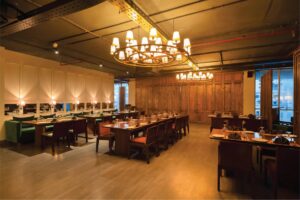
Thai Emerald Dhaka A Myriad Of Browns And Blended Greens
It’s a cosy Thai restaurant that transports one into the cultures and feels of Thailand through its rustic approach and earthy colour palette. So, be prepared to feel the vibes of Thailand and enjoy the warm atmosphere with a great dining experience. Most people know Thai Emerald as a go-to place to enjoy good Thai cuisine. Since its inception in 2012, Thai Emerald has strived to bring the flavours of Thailand to Dhaka – from Uttara to Gulshan to Dhanmondi – through its design and food. It has progressed over the years. Architect Rafia said their goal was to reflect the food served and the geographical setting of the restaurant while making the design. During the design of this restaurant, she used furniture and earthy tones similar to what she did with other restaurants to connect the brand and have a sense of reconciliation with the other two restaurants in town. A few of the dining chairs and the reception table and cash counter with the lotus motifs were elements that she had replicated to harmonise it with its predecessors. The wooden blocks situated on the backdrop of the cash counter pay homage to the second branch of Thai Emerald situated in Gulshan. The space was designed with efforts to keep the restaurant spacious to better accommodate large groups of people that frequent the restaurant. This was further highlighted by creating soft visual partitions through perforated separators or more solid partitions that allow big groups to co-exist with individuals or small groups while dining simultaneously. The architect wanted the diners to have elements to explore while dining at the restaurant – large cluster of doors separating private rooms, mirrored backdrops, or lamps hanging from the walls. The diners would have unique visual characteristics to ponder. She envisioned that people should be able to properly enjoy their time there. Thus, her goal was to create a warm, inviting ambiance with a play of dimmed, hand-crafted lights and splashes of earthy tones to create a soothing, delightful atmosphere for the customers. A focal element for this particular restaurant would be the doors, enclosing the private rooms, designed to be a point of attraction. “The reflection of Thailand is brought in through elements; for example, the lotus motifs in the door handles are a direct reflection. If you see Thai design, you’ll notice the use of softer lines rather than harsh straight lines, which have been reflected in the use of curved lines in the door details with softer, rounded edges,” the architect explains. Designing the small doors and playing around with the depth and lines was an interesting element that she loved when working on the restaurant. The architect wanted the doors to intrigue onlookers instead of having a dead space with boring partitions. In keeping with modern, contemporary design, the perforated partitions are made of sleek frames and thin lines to have a stylish outlook. A lantern of ‘Beth and Chatai’ was carefully designed and crafted in the escalator zone near the entry to give passersby and incoming guests a taste of what unfolds inside. The lantern, which was a focal point, was an experimental design by the architect to challenge the bounds of what could be made with flowy waves instead of the traditional circular design. The architect also worked with multiple local artisans to create custom-designed hand-crafted lights and chandeliers made of local materials like cane, wood, bamboo, and beech. The service corridor is lined with basket-shaped hand-woven lamps that lead people into the restaurant. A mix and match of kerosene wood, gorjon wood, and plywood were used to form the wooden elements displayed in the restaurant. An essential portion of the design was focused on creating a curated colour palette of browns and greens with a touch of grey to avoid having any harsh colours and instead opt for a homogenous, complimentary, soothing colour palette. The earthy tones are further accentuated by using browns that have grey undertones so that the overall output looks well-groomed. Grey texture paint was used to highlight a wall; it includes a chamfered rectangular punch that allows a visual connection with the service corridor. “We decided, deliberately, not to use any blinds on the windows; I want the existing floor-to-ceiling windows to let in ample daylight during the day so that customers can enjoy the sun, and it also gives a spectacular view of the city during the night, “the architect said when asked about keeping the floor-to-ceiling glass windows open. She added that they have not yet had any problems regarding heat gain from the facade. A signature personal style that the architect incorporated into the design was variation in designs of the door knobs used extensively throughout the space. Starting from the door handles of the private rooms, they feature lotus halves, so when closed, they form a full lotus. The door handles were placed much lower than the standard height to create a varied look when all the doors are closed together. The door handles of the restaurant doors have linear wooden handles on glass doors, and the toilet door handles are curved inward to create a unique motif. The restaurant of Dhanmondi, too, has two entrances to cater to both lifts on opposite sides leading to the restaurant floor, a fact unique to this restaurant. The ceiling is left open to have a modern industrial feel and is painted grey to match the vibe of the restaurant, with only a thin red line of the sprinkler system showing up on the ceiling as a touch of colour in accordance with the building safety regulations. A large painting of an elephant is hung on one of the feature walls as an homage to not only the heritage of the restaurant but also to tie bits of Thai cultural elements into the atmosphere. As you enjoy dinner with a loved one in this bustling restaurant, it is possible to have an immersive Thai food experience with plenty of laughs and
Read More
One Journey, Three Companies CEO in 18 Years
A nonhereditary succession of a man who dedicated his career to ceramics, an insider’s view on this patron’s journey, and some heart-rending moments taken as life lessons. From being a brand development executive at Shinepukur Ceramics to becoming CEO of Artisan Ceramics Ltd., M. Mamunur Rashid has walked down almost every road and tackled countless challenges, making him the ceramic leader he is today. To treasure these experiences in our gallery, Ceramic Bangladesh recently had the opportunity to sit with him. “Culturally we’ve all had ceramics and earthenware infused into our lives from childhood,” said Mr. Rashid, whose story is similar- his father Mr. Mohammad Ali at Habib Bank in Pakistan when Mr. Rashid was introduced to beautiful Japanese tableware. “I still remember my father’s collections. The ceramic body was crackled and the flowers on them looked like mosaics. We played with those, and even broke a few,” he said. His family returned to Bangladesh a week before the liberation war started and his father joined Janata Bank. Upon completion of M.Sc from Dhaka University, Mr. Rashid joined Shinepukur Ceramics Ltd, a BEXIMCO Group concern, and started his ceramic journey. Looking back Mr. Rashid toiled seven and a half years with Shinepukur, and the same amount of time with FARR Ceramics. He is now the CEO at Artisan for five years. Here is his ceramic journey in brief: While a novice Mr. Rashid started his career at Marketing section of Shinepukur Ceramics in 1999. Under the mentorship of Mr. Mahmudur Rahman, he contributed to establishing the International Ceramics Tableware Brand “DOEL” in the Indian market. He also worked closely with company Vice Chairman Mr. Salman F. Rahman. “I was a senior executive, but I was selected to work with him directly,” he said. The first job taught Mr. Rashid a lot about marketing and brand development. 7years with Tableware Mr. Rashid joined another ceramic tableware company, FARR Ceramics, during its inception in 2007. It then was introducing the newest technology. However, Mr. Rashid realized that his colleagues had the impression that FARR’s technology would fail. People apprehended that Open Firing was risky! The firing system was much faster, and about 30% fuel efficient – a factor which reduces cost of production. FARR’s technology still succeeded, and the Germans had to come in with similar technology and result-driven evidence to convince other companies to adopt it. Mr. Rashid recalled, “MD of FARR (late) Mr. Iftekhar Uddin Farhad always knew how to pick the right person consider the man my idol because of how well he understood people.” An export miracle Mr. Rashid was put under a lot of pressure on the second or third day of joining FARR Ceramics. Mr. Farhad asked him for a new export client in a week. He took up the challenge. He knew he had to reach out to the most approachable international connection he could find, a company that trusted him, and henceforth, would be easier to sell to. He invited some clients from Delhi on a subsidized trip to Bangladesh. They were convinced seeing the products quality and the technology, and ordered a size of two containers. All this happened within 28 days of Mr. Rashid’s joining. “Mr. Farhad told me, ‘You saved me! I invested a lot of capital in machineries,” Mr. Rashid said. Sky is the limit An adventurous soul, Mr. Rashid was looking for a more suitable place to unleash his full potential. His colleague from BEXIMCO, the CEO of Artisan Ceramics a concern of Finlays by this time, brought him in as a general manager in 2016. Realizing that the product designs needed to change for the international market, he worked with the R&D team, innovated, and redesigned Artisans products in keeping with global trends. The company came in second for the National Export Trophy in FY2018, winning the trophy 4 times in the following years consecutively. This was possible due to unconditional support and highest level of cooperation extended by the honorable Board of Directors and iconic business personals of Finlays. Artisan ceramics has seen 3.0 times expansion. It has a capacity of producing seven tonnes of 100% pure porcelain tableware, and is selling to clients in most of the continent like: Europe, Asia, USA, and some North & South American countries. Mr. Rashid believes secrets to Artisan’s success are the superiors who never intervened, quality, and customer relationship. “I cherish relationships and always put effort into them and it has paid off so far,” Mr. Rashid added. Deep diving into Mr. Rashid’s business philosophy: 1. Mr. Rashid sells trust and assurance, both of which he highly values. 2. To retain customers and get referred, there should be after sales service. 3. A company needs to adapt with the ever-evolving trends. Senior employees in the industry sometimes have a hard time changing their old ways- they need training and habituation. 4. You have to unlearn certain ways and be open to relearning, that’s adaptation. 5. “We have exceptional manpower; we need to train them. Our international rivals cannot compare manpower with us because our manpower is available and competitive.” A quick-fire round: When asked ‘what is the biggest hurdle you’ve faced in your life?’, Mr. Rashid said changing his Job was the biggest hurdle. To gain his expertise in marketing and production, he spent a lot of time in the factories learning every bit of the trade. “A marketing guy should be able to look at a product and know it’s worth,” he said. “S/he should be able to derive what s/he want from simple instructive annotations.” With hobbies to collect stamps, reading and travelling, his passion now is ceramics and dream that this sector will grow boundlessly. “If the government supports more, they can do even better for the country,” he added. He likes vocalist James and is close to Azam Khan’s circle. Ayub Bacchu is also a personal favourite. He reads stories of CEOs and enjoys reading people’s experiences. End of quick fire Ceramics goes through
Read More
Is Bangladesh’s Economy at its Peril
Import dependency in energy sector increasing foreign exchange crisis One persistent issue that continues to affect the Bangladesh’s economic landscape is inflation. Inflation, the rising cost of goods and services over time, poses a significant challenge to both low-income households and industries alike. Recent data from the Bangladesh Bureau of Statistics (BBS) paints a grim picture: Food inflation has rocketed to 12.54 per cent, its highest in 11 years, pushing countless households into financial uncertainty. Concurrently, Bangladesh’s foreign currency reserves have plummeted $1.62 billion within 20 days, a staggering decline from $23.06 billion foreign exchange reserves recorded at the end of August. Fueled by a decline in remittances, stagnant exports and increased import pressures, these economic tremors have created certain economic uncertainties. Understanding Inflation Before examining the effects of inflation, it’s crucial to understand the factors driving it. In Bangladesh, inflation is now driven by cost-push factors such as increased producer spending and rising electricity and gas prices, particularly fuel oil, transport and also corruption cost with volatile exchange rates and dollar crisis. In recent years, Bangladesh has experienced an upward trend in inflation rates, affecting the lives of millions. Disproportionate Impact on Low, Fixed-Income Groups Almost all people of limited income and lower middle class, middle-class families are bearing the brunt of the pinching inflation as their earnings often fail to keep pace with rising prices. These households find it increasingly challenging to afford basic necessities. The burden of inflation extends to housing, education, healthcare, and transport. High inflation has been prevailing in the country for a long time. However, the situation has worsened in recent times, as shows government statistics. Another major problem with the inflation is worker unrest. This in turn increases the pressure on the wages of the workers and consequently increases the cost of production. Which increases the price of the product and ultimately reduces the demand. Surging Food Inflation 11-Year High The Bangladesh Bureau of Statistics issued an inflation update on September 11, revealing that food inflation had surpassed 12.5 per cent. The BBS data indicated that food inflation reached 12.54 per cent in August. The last time food price inflation had risen to such height was in January 2012 when it reached 12.73 per cent. Notably, food inflation entered double digits for the first time in a decade in August of the previous year, according to BBS and Bangladesh Bank data. In BBS’ calculations, headline inflation climbed to 9.92 per cent in August, marking a shift from two consecutive months of decline. This places the inflation rate on the brink of touching 10 per cent. In July, the food inflation stood at 9.76 per cent but surged to 12.54 per cent in August. Non-food sector inflation in August was recorded at 9.92 per cent in the month. Is Bangladesh’s Foreign Currency Reserve in Jeopardy? Bangladesh’s foreign currency reserves continue to face pressure, due primarily to the central bank’s dollar sales to cover essential imports. A decline in remittances has further strained the Bangladesh Bank’s reserves, which dropped $1.62 billion within the last 20 days, as reported on September 21. This decline is notable considering the reserves were over $23.06 billion as of August 31, now decreased to $21.45 billion. During this period, a significant payment of $1.31 billion to the Asian Clearing Union (ACU) for July-August imports played a role in diminishing the reserves. Additionally, a 13 per cent decrease in remittances over July-August, along with the necessity of providing dollars to commercial banks for loan settlements and import bills, has impacted the reserves. The central bank regularly sells dollars to various commercial banks to meet diverse expenses, particularly import costs. Moreover, a part of the foreign currency earned from exports and remittances directly contributes to the reserves. Foreign loans also directly bolster the reserves. However, the recent drop of $1.62 billion in foreign currency reserves can be attributed to these combined factors. How ceramic sector affected by higher inflation? The ceramic sector is grappling with significant challenges due to rising inflation and fluctuations in the exchange rate. Being an actively involved participant in international trade, Bangladesh’s economy is intricately linked with exchange rates, influencing economic activities and inflation by altering the prices of domestically produced goods and services. In the ceramics industry, a substantial portion of raw materials required for production is imported, necessitating heavy reliance on foreign currency. The Bangladeshi Taka has depreciated by 30 per cent against the US dollar since the last quarter of 2021, escalating material costs for the ceramics industry and directly impacting operational expenses. Furthermore, Bangladesh faces a local annual inflation rate more than 10 per cent, compounding challenges for the ceramics business. Increasing costs of imported raw materials, combined with domestic inflation, higher electricity and fuel price, transportation costs, high interest and exchange rate, pose significant hurdles to the sector’s profitability and sustainability. Additional pressures come from a recent 126 per cent increase in gas prices and gas rationing. But it has not been possible to adjust the price of the finished product accordingly. Various disruptions, including raw material price rise, global recession risks, shortages in raw materials and logistics capacities, global labour scarcity, and energy shortages, have disrupted the entire supply chain. Consequently, ceramic industry production has been severely affected. Md. Mamunur Rashid FCMA Senior Vice President, BCMEA Additional Managing Director X-Index Companies In the light of these challenges, Md. Mamunur Rashid, Senior Vice President of BCMEA and Additional Managing Director of X-Index Companies, suggests that the government should encourage foreign direct investments in the industry in economic zones. He recommends continuing tax holidays for a minimum of five years to support the sector. Additionally, he advocates measures against unfair trade practices such as under-invoicing of imported tiles to safeguard the interests of entrepreneurs in the ceramic industry. Mr Mamun emphasises the need for research and development efforts to economise on energy costs and calls for appropriate and adequate training programmes to develop a skilled labour pool in the sector. These
Read More
Memory Eternal In Remembrance of their sacrifice
Military convoys were heard marching through the Dhaka University campus roads at night on 25 March 1971. Three heavily weaponised regiments – the 18th and the 32nd Punjab, and the 22nd Frontier Force– entered through the north, the south, and the east. A massacre was unfolding! The ground pads of their tanks grinded with the asphalt as they entered, rifles cocking and loading. The attack was directed towards the intellectuals and the nationalists. Operation Searchlight, as it was infamously known to be, targeted the Dhaka University that night. The whole night swept across like a blood-stained hurricane, dark and gore. Intellects and teachers such as Professor Anwar Pasha, Professor Gobindo Chandra Dev, and Professor Jyotirmoy Ghuha Thakurta were, among others, lost. At around 12’o clock, Jahurul Haq Hall and Jagannath Hall were attacked with mortars and continuous firing, as many as 34 more were killed. The martyrs included the staffs of the university. On that dreadful night, Bangabandhu Sheikh Mujibur Rahman was arrested. Next day, Major Ziaur Rahman proclaimed independence of Bangladesh from Chittagong on behalf of Bangabandhu. And on 10 April, a provisional government was formed in Baidyanathtala of Meherpur. Bangladesh fought back and eventually came out victorious. After massacres and a nationwide uprising, about 93,000 Pakistani troops surrendered to the joint forces on 16 December 1971. The Memory Eternal The University of Dhaka was the heart of the rebellion that contributed to the birth of the nation-state. The students remember passingby, and almost every time, being driven by compassion to lay their inquisitive eyes on the canopied patch of elevated platform that held the memorial. Names of the teachers, students, and staff of Dhaka University who were martyred on the 25 March, were memorialised in 1995 first, on what is known as The Memory Eternal. Located infront the Dhaka University Vice Chancellor’s Bungalow and at one end of Fuller Road, the Memory Eternal consists of rectangular concrete slabs and terracotta designs with poems and clay murals. As one closes in on the site from any direction, a raintree is noticed, branches of which mothers the entire area. The tree holds within itself, the memories of the fearful night, never forgotten. It has seen red and felt tremorson that night, and the very roots have absorbed from the soil, the blood of the martyrs. Under the tree stands the concrete slabs. A few steps up stairs, and you will come across the first poem that warms the heart-words of Tagore himself, speaking of the souls that are immortalised. Another slab carries the words of the national poet Kazi Nazrul Islam and speaks of their sacrifice. The rebel poet calls upon everyone to remember them. The other slabs carried the names of 194 martyrs of Dhaka University on 25 March, on a black plaque written in white ink. On the back are terracotta murals, portraying the olden lives of the evergreen villages, the red and green flag under attack by the meager tyrants, and figurative chains binding the oppressed citizens of East Pakistan. The Memory Eternal or “Sriti Chirantan” was recognised as Dhaka University memorial initially, and in 2015, it was renamed as the “Memory Eternal.” The designers were Abdul Mohaimen and Mashiuddin Shaker. Around the Memory Eternal, there are mostly students, chatting and sipping on tea from a cup under the shade of the raintree. As the sun sets, the darkness is chased away by lights pointed at the memorial, and that is another site to be hold.
Read More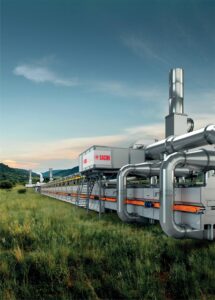
SACMI’S Challenge ZERO-EMISSION CERAMIC KILNS
In the world of ceramics, the name of SACMI is known as the world leader in the supply of advanced technologies for Ceramics and Advanced Materials through continuous development in innovation. The company’s strong positioning on the world market, and its relentless thrive for ensuring high quality standards and customer service is praiseworthy. The Ceramic Industry is focusing on bringing innovative solutions and effective alternatives of traditional machineries through research. The company is focused on working for development of alternative fuels, digitisation and heat recovery aimed at zeroing or reducing consumption in other stages of the process. These are the three pillars of the modern approach to ceramic kiln design, which SACMI recently presented to the market with the first prototype of a 100 per cent hydrogen-fired kiln. The presentation was made during the ‘open week’ organised by SACMI, which took place at the same time as the CERSAIE trade fair. Over 400 international customers of 90 delegations from 35 countries visited the fair. “Making ceramic manufacturing more sustainable is the primary challenge that SACMI has been pursuing for years, implementing optimisations and innovations in all areas of the plant, from forming to firing,” explained SACMI President Paolo Mongardi. Firstly, the kiln accounts for a good 37 per cent of total factory emissions, 46 per cent if one considers all thermal processes (kiln and drier). “With the FMH Maestro, we developed the world’s first industrial kiln fired using up to 50 per cent hydrogen. Today we are taking a further step towards what will be a potentially zero-emission kiln.” The prototype is ready and will be tested to make actual products in the coming months. Meanwhile, the market is moving towards new machines with the full digital management of all parameters in order to optimise quality and consumption. The project The prototype kiln implemented by SACMI is capable of working with variable mixtures of methane and hydrogen – in any percentage – and up to 100 per cent pure hydrogen. The kiln will be ‘switched on’ over the next few weeks, to test its effect on actual products and to take on significant technological challenges, such as the fact that hydrogen has a different calorific value compared to methane and the corrections necessary for managing the firing curves and material feed. From this point of view, the digital control of parameters (e.g. oxygen content at every point in the process) is the prerequisite of this development and has already been implemented in the ‘Maestro’ range of kilns, starting from the FMD model, introduced by SACMI in 2022. The fuel The pure hydrogen production and storage station has already been inaugurated at the SACMI Forni and Filters site in Salvaterra di Casalgrande. The facility, one of the first of its kind in Italy, consists of an electrolyser where hydrogen is produced at a rate of 20 Nm‑ per hour. It is then compressed to increase the outlet pressure from 8/12 bar to approximately 200 bar. This is essential in order to make storage easier, since one of the ‘defects’ of hydrogen is that it is very voluminous (much more so than methane/LPG and up to seven times more voluminous for the same calorific value). The third and last station involves its storage in cylinders, which for the prototype that will be tested in the Lab, “is equivalent to an operating autonomy of 2.5 days” – underlines Daniele Baldini, product manager at Kilns and Driers BU Tiles, SACMI – “sufficient for carrying out full testing on the products”. The advantages Currently, SACMI’s best-selling kiln globally is the modulated air-gas FMA model, which allows air and fuel mixtures to be optimised at every stage, optimising consumption and with great advantages in terms of product quality (especially for complex products, such as slabs), repeatability and consistency of the process. More and more customers are moving towards the latest FMD models (with digital firing parameter and recipe management) and FMH models (already designed for use with methane-hydrogen mixtures of up to 50 per cent). What are the real advantages of ‘full hydrogen’? You just have to consider that by adding 50 per cent clean hydrogen to the mixture, the total saving on CO2 emissions is as much as 23 per cent. This would increase to 55 per cent (more than double) if the mixture were 80 per cent H2 + 20 per cent methane. “What remains constant is the amount of energy required for the process,” notes Baldini, adding, “while to obtain the same amount of energy, a larger volume of hydrogen is required as its calorific value is lower than that of methane (2560 kcal/m3 compared to 8600 kcal); Hence more than proportional savings in emissions to the increase in the amount of hydrogen in the mixture”. This is why it makes sense to increase the hydrogen in the mixture and to get ready for the evolution of the infrastructure, which in all probability will lead to hydrogen-methane ‘blends’ being supplied in increasing but variable amounts. “From this point of view, the way forward already appears to have been decided,” says Claudio Ricci, Tiles R&D Coordinator, BU Tiles, SACMI. “So technology suppliers around the world are getting ready for this development, without forgetting the two conditions which make this scenario viable and truly beneficial to the environment.” First, hydrogen has to be obtained from renewable sources (or rather the electricity needed for the electrolysis process has to be). Secondly, in order for it to be actually applied on an industrial level, the problem of storage has to be overcome (the laboratory prototype is one thing; in a ‘real’ kiln the system would have to be powered directly from the supply network). The 100 per cent H2 kiln is the main but not the only development at SACMI. “By 2024 we will also present a new prototype for an all-electric kiln, exploring all the opportunities in this area as well, with the aim of being ready for the evolution of the infrastructure and
Read More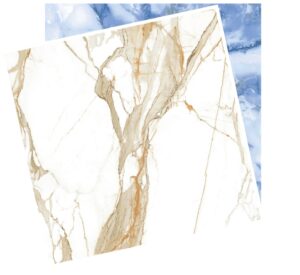
Made More Spacious with Sheltech 1m x 1m Tiles
Sheltech has entered the ceramics market recently with their premium wall and floor tiles. The ceramic newcomer has been performing outstandingly in the industry with various tiles segments of different shapes and sizes, and designs. Sheltech, a 35-year-old group of industries, initially deep-rooted itself in the real estate industry. Sheltech Ceramics Limited recently launched a venture of Sheltech group, initiated in February 2019. The factory has been set up in Bhola, spread on 57 acres of land. Sheltech Ceramics has added production lines and increased production capacity to 420,000 square feet of tiles daily. This recent investment will potentially turn the company into one of the largest manufacturers in the tiles segment. In May 2022, S heltech introduced the largest tiles manufactured in Bangladesh; in other words, it has the first ever locally made 1 meter x 1 meter tiles. Among the three plants that Sheltech Ceramics has in its factory, the third plant was added to manufacture larger sized tiles, premium in quality. The size of such product makes any surface look more spacious, as fewer and thinner grout lines tend to create that impression. The room also feels streamlined when the floors are covered with larger than usual-sized tiles. The 1m × 1m tiles have a thickness of 12 mm and is made with eco-friendly materials resistant to thermal shock. Made to be strong and durable, this series of prime tiles is shiny and attractive, and helps bounce light around. Additionally, it is easy to clean and maintain. There are imported tiles that are similar to Sheltech Ceramics’ 1m × 1m, but they are imported as per necessity and costs a fortune. Sheltech Ceramics Ltd intends to shift the demand from imported tiles to domestically made ones, and manufacture a quality product within the price range of usual customers-henceforth started the manufacturing of the 1m × 1m tiles. An experiment conducted, and the research paper authored, by Jack Nasar, a professor from Ohio State University, and Saleheh Bokharaei (faculty at Shahid Beheshti University, Iran), on Perceived Spaciousness: Altering the six variable factors (VF) that directly effect perceived spaciousness, we can alter how roomy an office room or a bed room looks. The most obvious VF, size, is directly proportional to spaciousness; bigger size means more space. Light is a crucial second, followed by window size. Texture and wall murals are the fourth and fifth, any and all furniture being the last of the six, yet not the least. If you played around with the six variables, you can create different ambiances. The 2016 experiment by Jack and Saleheh had participants rating spaciousness and preference after being exposed to a space via virtual reality. Written by Chisty Rahim
Read More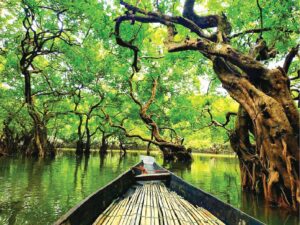
RATARGUL Gowain’s Serene
Only a decade back, when considering a trip to Sylhet, most would think about visiting the lush green heavens of tea tree leaves at the wavy hills of century-old tea estates and the waterfalls. However, over the years, a freshwater swamp forest that flows through the arteries of Gowainghat, has cemented its place in the hearts of thousands of tourists who flocks there every season. It is the only swamp forest of sweet water in Bangladesh. The mighty Meghalaya pours into the Gowain, and a stream flows through the Chengi canal, flooding the entire region under 20-30 feet of water where serenely rests Ratargul with mysticism. Ratargul has an addictive aura. It is one of those spaces where one has to be physically present and let themselves be entirely engulfed by its charm to feel its truest essence. And Ratargul in monsoon, is impossible to encapsulate with words. Water lilies, both white and pink varieties, are a common sight, adding a soothing touch to the landscape. These floating plants not only enhance the beauty of the forest but also provide essential habitat and food for various aquatic creatures. One will also notice slender and tall cypress trees rise majestically from the water, creating a picturesque backdrop. There are numerous other kinds of tress, and once in a while you might be welcomed by monkeys hanging from them or birds singing back to the boatmen. These trees not only offer shelter to numerous bird species but also contribute to the overall biodiversity of the forest. Swamp Forest The moist and humid conditions of Ratargul support the growth of mosses and ferns too. They cover the rocks and tree trunks. Reaching Ratargul requires careful planning, as it is situated in a remote area. Here’s how to get there: By Air: The nearest major airport to Ratargul is Osmani International Airport in Sylhet. From the airport, you can hire a taxi or take a bus to reach Ratargul. By Road: You can reach Ratargul by road from Sylhet city. The journey takes 1.5-2 hours, and you can hire a taxi or use public transportation. Local Transport: Once you reach the nearest village, Gowainghat, you’ll need to hire a local guide or a boat to navigate through the water channels that lead to Ratargul. The boat ride is an integral part of the Ratargul experience, offering stunning views of the surrounding landscape. While Ratargul itself is typically a day-trip destination, you can find accommodation in nearby areas for a comfortable stay during your visit. The beautiful Sylhet city offers a wide range of accommodation options, including hotels, guesthouses, and resorts. It’s a convenient base for exploring other attractions in the region as well. Furthermore, the nearest town to Ratargul is Gowainghat, where you can find guesthouses and lodges. There are eco-resorts for a unique and eco-friendly experience, consider staying in one of the eco-resorts that have been established near Ratargul. These accommodations are often designed to blend seamlessly with the natural surroundings, providing a rustic yet comfortable experience. While planning your visit, remember to adhere to responsible tourism practices to protect this fragile ecosystem for future generations. A visit to Ratargul promises to be an unforgettable journey into the heart of nature’s wonders. Ratargul invites you to be its guest, offering a chance to escape the hustle and bustle of daily life and reconnect with the natural world. We must respect the regulations in place, support local communities, and engage with local guides who can deepen our understanding of this unique ecosystem. By doing so, we not only enhance our own experience but also contribute to conservation efforts that ensure Ratargul remains a pristine sanctuary for generations to come. It’s more than just a tourist destination – a testament to the exquisite beauty and resilience of the natural world. It is a place where you can find solace, inspiration, and a profound connection to the environment. Let’s also ensure that Ratargul’s magic endures for all to experience and cherish.
Read More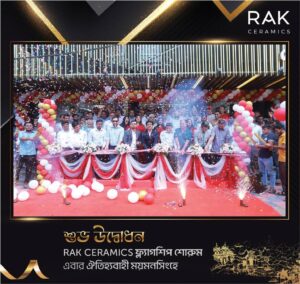
Events Of Ceramic Industry
Inauguration of “Selections” second outlet in Sylhet: Recently AkijBashir Group’s brands emporium “Selections” has opened a new showroom in Hadi Mansion, Pathantula, Sylhet. With the motto – “Select from the best”, the “Selections” brand was launched in October of last year in an aim to provide customers with a one-stop-ground for all of AkijBashir Group’s brand products under one roof with a vast array of ceramic tiles, boards, doors, sanitaryware, bathware and tableware. Inauguration of Flagship Showroom in Mymensing: RAK Ceramics inaugrated their Flagship Showroom in Kalibari Road, Mymensing. Get your desired RAK Tiles & Sanitarywares from the Showroom to decorate your space newly. Fresh Ceramics Organizes Dealer Tour in Thailand Meghna Ceramics Industries Ltd. (MCIL), a concern of Meghna Group of Industries (MGI), has earned the trust of Bangladeshi customers within a short time since its start in 2021. As a continuation to that success, a special dealer tour titled ‘Cutting the Edge’ was organized at Pattaya & Bangkok in Thailand during September 27- October 01, 2023. New ‘Robusto’ Floor Tiles Make a Splash in the Domestic Tiles Market An international quality tiles brand ‘Robusto’ has been added to the local market. Manufactured by the reputable company X-Ceramics, the ‘Robusto’ brand has entered the floor tiles market with a strong commitment to quality. X-Ceramics embarked on the journey to produce ‘Robusto’ floor tiles after more than two years of meticulous research. These tiles are versatile, finding applications in homes, offices, shopping malls, and factories.
Read More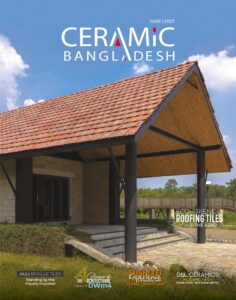
ECO-FRIENDLY Roofing Tiles TAKE THE LEAD Industry challenges need to be addressed, say entrepreneurs
Time is NOW for eco-friendly clay-made roofing tiles and now is TIME for tile makers. They are the Bangladeshi makers of clay tiles who have gone global as their tiles have opened up the door of a huge export possibility, especially to Europe. The making of clay tiles is simple but it needs amazing artistry as well as artisanal skills. Fluffy mud is made by mixing soil and water. It then dries in the sun and is burned only to turn into clay gold. The artistic tiles with Bengal clay have revolutionised the style. However, clay artisans were once about to lose their hopes and dreams with their centuries of tradition. They then have turned the corner and things are looking up with the coming of the modern machine-driven industry. The clay artisans have turned around to weave a new web of hopes and dreams. Famed for its ‘Tiles Empire’ over the years, Satkhira has eco-friendly roofing tiles to its credit. Kolaroa Bazar in Kolaroa upazila, some 18 kilometres of district headquarters, is one of the prosperous trading points in Satkhira. Murarikathi village is located just 1.0 km away from the upazila headquarters along the border of the district. The artisans of Murarikati-Sripatipur have built an empire of various sorts of roofing tiles. The village, also called Kumarpara, has now got the moniker ‘Italy Town’ plausibly for exporting a massive volume of tiles to the European country. Tile factories used to produce 700-800 containers a year just a few years back. Some 300-400 container tiles were exported to Italy through Mongla seaport. The price of the product per container is average US$ 15000 Eco-friendly tiles Eco-friendly tiles There is a huge local market for roofing tiles if these hand-made tiles are given a more modern touch and the initiative is taken to use them as an artisanal tile in buildings and structures. During the British raj, cottages, offices or residences of the gentlemen used to have tiles at the peak that are still visible in the ancient architecture of Britain. Although a large number of potters have left Bangladesh, some in Kolaroa have kept the traditional tile industry alive in the frontier district. Until the mid-1960s, there were hardly any houses in the country that did not have a tile-made house or two. As it came cheap, roofing tiles became popular after rice and wheat straw-built structures. The structures were felt cool and comfortable during the summer. How Palparaenters European market The traditional tiles industry almost sank into atrophy when the potters associated with tile production left the country in the mid-60s. Satish Chandra Pal, a native of Palpara in Kolaroa, started crafting house canopy tiles in about 1952. From there, potters spread across the country. As Mr Satish Chandra died after independence, the pottery business simply collapsed. Due to their deep-rooted poverty, many artisans left their ancestral profession. With the passage of time, the potters have changed. They are now making tiles using clay. In 2003, local potters created a revolution by pouring clay into a wooden frame and drying it in the sun, making Bengali tiles in line with Italian design. Since then, Bengali tiles are being exported to Italy How are the legacy-bearers? Among those artisans is Gostho Chandra Paul, the president of Kolaroa Upazila Tali Malik Samity [Tiles Owners Association] and also proprietor of Kolaroa Clay Tiles. But he now struggles to survive as his long-cherished art is on the verge of extinction for a number of reasons. The 60-year-old Paul, who has a three-member family, is producing 1,000 units of tiles at his factory per diem. Each unit is currently being sold at Tk 8.0. He earns Tk 1.6-1.7 million per annum. Getting disgruntled and disappointed over the waning business situation, most owners and workers associated with this industry have already lost their jobs. Mr Paul observed that modernity has affected almost all sectors of the country. However, the tiles industry is yet to get the touch of modernity. Production costs have increased manifold, but the price of tiles has not increased. Mr Paul’s forefathers launched crafting eco-friendly roofing tiles in 1947. However, it all started for Mr Paul in 1986 when he set himself up in business with Tk 3,000 only. Ten workers were employed at his factory when he started crafting eco-friendly roofing tiles traditionally. His uncle told him to be self-reliant and build his own future through the long traditional business, which he acquired lineally. But at least 40 tile factories got shut down in the past six years due to their persistent business losses. Now, the number of factories there is about 12. Almost 6,000 workers become unemployed and only 600 are absorbed elsewhere. For generations, the Pal community in the locality has been contributing a lot to this thriving sector. Mr Paul is also committed to continuing their forefathers’ business at any. In 2003, this clay tile was first exported to Italy. Businessman Ruhul Amin exported the eco-friendly tiles there. Arno Export Import, Shuvo Trade Limited, FH Khan Limited, Maa Cottos Inc., Nikita International, Koto Innovator, JK International, Polo Epo Organic Tiles and D Chandra Paul have followed Mr Amin’s footsteps. They are exporting tiles to Italy, Dubai, France, the UK, Australia, Germany and the Netherlands. Mr Chandra Paul, proprietor of Kolaroa Clay Tiles, said Mr Amin continued to look for suitable soil in different parts of the country for exporting tiles to Italy. Finally, Mr Amin found his desired soil in Murarikati area. He is the pioneer in exportable tile business. As the number of roofing tile factories increased in Kolaroa until 2019, the stock remained high at the time. Every year, 300-400 containers of tiles went to Italy. Such tiles are manufactured and sold for 6-7 months in a year. Usually, tile-making season starts from October and continues until the May-June period. Tiles cannot be crafted during the rainy season. Foreigners are using the tiles for floors and walls of their houses because of its eco-friendly nature.
Read More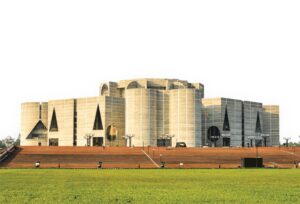
Reflections on FY24 budget
Finance Minister AHM Mustafa Kamal has authored a Taka 7,61,785 crore budget for the new fiscal year (2023-2024) with the vision of building a developed ‘Smart Bangladesh’ by 2041. The budget that was proposed in parliament in 1st June is 15.33 per cent higher than the revised budget of the outgoing financial year (Tk. 6,60,507 crore). “The budget Taka 7,61,785 is 15.2 per cent of the GDP (gross domestic product),” he said while reading out 248-page budget speech. He proposed allocation of a total of Tk 4,36,247 crore for operating expenditures and Tk 2,63,000 crore as the Annual Development Programme (ADP). The target of attaining GDP growth was fixed at 7.5 per cent and containing inflation at 6 per cent. The overall deficit in the budget would stand at Tk 2,61,785 crore, which is 5.2 per cent of GDP. Out of the total deficit, Tk 1,55,395 crore would be financed from domestic sources and Tk 1,02,490 crore from external sources. The finance minister set an estimated revenue earning target of Tk 5 lakh crore for the fiscal. “Out of this, Tk 4,30,000 crore would be collected through the National Board of Revenue and Tk 70,000 crore from other sources.” The Tax-GDP ratio is now only 7% and is proposed to be raised to 10% in the new budget. The finance minister wants to increase the percentage of direct tax to 45 per cent from 35 per cent. However, the budget practically depends more on indirect tax. The finance minister said that commission-based private collectors would be appointed for tax collection. The most talked about issue regarding the budget is meeting the conditions of International Monetary Fund (IMF), which granted a loan of US$ 4.7 billion at the beginning of this calender year. The global agency has put forwarded 38 conditions that have to be met in the next three and a half years for access to the loan. Nearly half of the conditions have to be implemented by the new fiscal year 2023-24. Budget meant for all – rich and poor : Kamal Finance Minister Mustafa Kamal said that the proposed budget has been awarded to all sections of people, including the rich and the poor, while all the projections made in the budget would be attained as like the previous years. He, however, categorically mentioned that the proposed budget had not been framed in line with the IMF suggestions. Kamal said the IMF usually gives suggestions to its member countries on maintaining balance sheet as well as properly maintaining income and expenditure accounts, which he thinks, is a good thing. He added that the IMF not only helps the member countries with credit support, but also extends support in project delivery in a flawless manner. “We can only take their (IMF’s) suggestions which we feel necessary.” The minister proposed imposing environmental surcharges on multiple vehicles. In the budget, the annual tax-free income threshold raised from Tk 300,000 to Tk 350,000 would give some relief to individual taxpayers. Some 50 types of fees would increase that include travel tax. The government estimated that private sector investment would increase to 27.4% of GDP in FY24 while it remains at 21.8% in FY23, meaning that an additional Tk 4,04,097 crore or 41.8% growth is required. Tk 2.63 lakh crore earmarked for ADP The size of the Annual Development Programme (ADP) for the fiscal year 2023-24, is Taka 2.63 lakh crore with the highest allocation of Taka 75,945 crore (29% of allocation) for the transport and communication sector. The ADP for the fiscal year was approved at a meeting of the National Economic Council (NEC) earlier. Out of the original ADP allocation of Taka 2,63,000 crore, an amount of Taka 1,69,000 crore would come from local loan sources while Taka 94,000 crore from foreign loan and grants. Considering an allocation of Taka 11,674 crore for autonomous bodies and corporations, the overall ADP size has stood at Taka 2,74,674 crore. The overall ADP size include an allocation of Taka 8087 crore as foreign development assistance. The number of projects in the new ADP totaled 1,309. – 1,118 investment projects, 22 survey projects, 80 technical assistance projects and 89 projects from the autonomous bodies and corporations. According to the new ADP, the highest 10 allocation recipient ministries and divisions are the Power and Energy Division (Taka 44,393 crore or 17% of allocation), the Road Transport, Highways and Bridges Division (Taka 43,126 crore or 16.5%), the Railways Ministry (Taka 14,960 crore or 5.5%), the Local Government Division (Taka 40,503 crore or 15.5%), the Secondary and Higher Education Division (Taka 14,086 crore or 5%), the Ministry of Primary and Mass Education (Taka 12,018 crore or 4.5%), the Science and Information Technology Ministry (Taka 12,980 crore or 5%), the Health Services Division (Taka 12,209 crore or 4.5%) and the Ministry of Agriculture (Taka 10,707 crore or 4%). Ten projects with the highest allocations in the new ADP are the Rooppur Nuclear Power Plant Project (Taka 9,707 crore) followed by the Matarbari 2×600 MW Ultra Super Critical Coal Fired Power Project with Taka 9,081 crore, fourth Primary Education Development Programme (PEDP-4) with Taka 8,586 crore, Dhaka-Ashulia Elevated Expressway Construction project with Taka 5,870 crore, the Padma Bridge Rail Link project with Taka 5,500 crore, Hazrat Shahjalal International Airport Expansion with Taka 5,499 crore, Dhaka Mass Rapid Transit Development Project Line-1 with Taka 3,911 crore and Line-6 with Taka 3,425 crore, Bangabandhu Sheikh Mujib Railway (Jamuna) Bridge Construction project with Taka 3,778 crore. Some industries may be affected The country’s businessmen are paying the price of the government’s policy on energy, said the deputy leader of opposition in parliament, former minister and industrialist Barrister Anisul Islam Mahmud. The business leaders are not generally viewing the budget in general as business-friendly. Taxes or duties on imports of raw materials and VAT in some sectors are increased, that may affect the prices of some products and these sectors may not attain the capacity to boost, they said. However, the gains tax
Read More
Standing by the Visually Impaired
An alternative orthography for the vision-impaired, Braille, is a form of written language consisting of raised dots on a surface, in patterns that resemble letters, numbers, and designs (for paintings/artwork). Braille came on papers during the early 1800s by a Frenchman called Valentin Hauy; and was an effective way for visually-impaired people to read. The language, now universally accepted, originally came from the mind of Louis Braille who lost his eyes at the age of three. Young Braille was self-motivated, and went on to study at the Royal Institute for Blind Youth (One of the first institutes for blind children, now known as the National Institute for Blind Youth). During his studentship there, he started developing a tactile coding method which soon emerged as a globally acknowledged form of writing and reading for the vision impaired. Akij’s Braille tiles In collaboration with CarrotComm Ltd. Akij launched their Braille tiles on International Mother Language day 2022, to help over 800,000 existing and recorded blind populace of the country. The Tiles, just like the Japanese ones, will have Braille messages to help those who are visually impaired. The 2022 collaborated campaign was called “Let the walls be Language friendly”. “Language should not be a luxury but a fundamental right for everyone” – Akij Ceramics. Here’s how it works One to six dots arranged in each pattern, forming one of 63 characters, felt by the fingertips or soles. We now have Braille for a lot of things such as money, books, novels, and TILES as well. That brings us to: Braille pavements – It came about in 1967 by the hands of the Japanese; first used as flooring for a street in Okayama. The flooring now, is widely encouraged to be used as directions and warnings/Hazard signs for blind people. The campaign intended to promote the use of Braille tiles to help blind people navigate properly. With a steadfast aim to create an all-inclusive society, Akij’s Braille tiles have now been on the market for over a year. Akij uses modern SACMI technology in an attempt to mass produce perfects. The company brought in machineries from Italy and Spain, all dedicated to manufacturing a high volume of Braille tiles if need be. Upon asking about the most common messages that are imprinted on tiles, Mohammed Khourshed Alam, Director (Operations) of Akij Bashir Group, stated that navigation signs in bus-train stations, markets, educational institutes, etc. are most commonly used forms of Braille tiles. “In terms of sales, the company is focused on the number of people helped rather than the number of units sold.” Braille messages on tiles can be customised to any typefurther adding to the usefulness and versatility of it. Mr. Khourshed Alam believes that if every organisation actively participates by installing Braille tiles, the world for the visually impaired would ease. He also hopes to foster a diverse and inclusive society. Akij collaborated with CarrotComm Ltd. to install Braille tiles at the Icon Eye Hospital Ltd. Akij did this free of cost for Icon Hospital, and spent around Tk 10 lakh in the project.Accolades Best Brand Award from Bangladesh Brand Forum, 2019-22. Most Innovative Solution For Disabled People from the 5th Bangladesh Innovation Award. Written by Chisty Rahim
Read More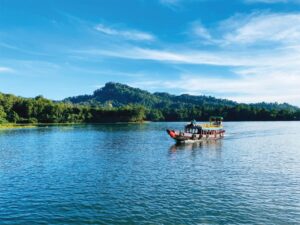
RANGAMATI After Gondwana Split
What oozes through your psyche when you hear the word “Rangamati”? For those who have never been there, it might be their half-blurry memories of their very first introduction to the space through their family albums holding photographs shot on a 35mm roll with a Yashica of their newly married parents standing atop a hill with the view of a boundless blue waterbody on the backdrop, or peculiar visuals and texts from their shoddily printed middle school textbooks, where they might have scribbled humorous drawings later on. Whilst for others, it might be freshly baked memories from their last winter trip with friends at the space. Memories of meeting mesmerizing fauna and flora while on a hike through the thrilling trails and their first ever kayaking experience full of excitement and sudden waves of mild fear of drowning from time to time, as they kept the crutch strap locks on check of the old orange life jacket embracing their torso. And for some, finally inhaling the clouds straight into their soul, something they have always envisioned when swimming inside deep daydreams while listening to their favorite romantic music in the background and seeping through the lines of their favorite book about life from a beloved author. But how many of us have actually ever intended to put an honest effort to understand, respect history and internalize the truest essence of a space like Rangamati instead of just always perceiving such spaces like the mindlessly romanticized gazes and activities of the typical tourists, especially in this era of travel package advertisements consisting of hideous drone footages floating around social media? Rangamati is Rangamati, well the entire Chittagong Hill Tracts are a lot more than just an alluring tourist attraction from our southeast and the tessellated spiels. Travellers should be mindful, hence, the least we can try is to educate ourselves and others regarding the complex historical and contemporary contexts of the space from veracious sources, acknowledge the authenticity and try to be on the right side of history. Rangamati is indeed a living embodiment of the meaning of its name, ‘colorful soil’. Millions of years ago Gondwana decided to split, forcing the Indian plate to drift northward and collide with the Eurasian plate resulting in the creation of the Tibetan Plateau which breathes the mighty Himalayas. And due to these otherworldly collisions taking place, the low-lying world’s biggest delta which also later formed from the sediments of the same Himalayas, got its gift of high-altitude lands on the fringes of its body, notably in the southeast where Rangamati serenely rests tall. This geographical history also explains why the region has a complex topography, shaped by the erosion and weathering processes. The distinct features of the myriad of hills, valleys, and water bodies are the result of the geological activities going on for eons and in light of this geographical history and map of present-day Bangladesh, it won’t be an exaggeration to say that Rangamati rose before, watching over the rest. Just like its original inhabitants came before us Bengalis. The main attraction of Rangamati is the Kaptai Lake with its scenic splendor. Created in 1960, it is the largest artificial lake of the country having a surface area of 58,500 acres and water holding capacity of 525,000 m3. The lake, dotted with islands, captivates the tourists with its beauty and calmness. Dumlong, considered to be the third highest mountain peak in the country, belonging to the Rentlang Range is about 3,316 feet in height and located in the Bilaichhari Upazila of Rangamati. Roughly thirteen thousand five hundred acres, this fighting land of the ancient kings also boasts as the largest district in the country in terms of land area and also the only district to share international borders with two other neighboring countries, India and Myanmar. The aura of this place will forever be onerous to describe with words regardless of the copious sum of visual and textual information on the internet about the place, starting from must-visit areas to food to accommodation. It is one of those spaces where one has to be physically present and gradually attempt to internalize the rest in order to get the taste of its inexplicable flavor, to the least. The indigenous folks lurking through the veins of Shuvolong; the piercing reverberation of the not to be spoken tales buried beneath the bloody blues of Kaptai; getting lost in a hiraeth of a never confessed love while inhaling the waves of floating white cotton candies straight into the deepest labyrinth of the soul; the shimmery kisses of the full moon dancing like a mystic ballerina all over Karnaphuli’s body as the million years old wind from the unfamiliar mountains caress your hair and softly shuts your eyelids making your mind trek through the fresh memories of trekking and the smell of limestone from the dimly lit rooms inside the heart of Alutila, or the star gazing nights spent on the adibashi village which shook you with the most chasmic lesson of anthropology; one can never get overdosed from the lures of Rangamati, they can either dissolve within its magic or leave parts of their soul and come back from time to time in quests to search for it. Even deliberately letting it go every time they meet their soul, only to use it as an excuse to return the space in the albino fogs of winter, in the magnanimous drizzles of monsoon over the acres of inclined jhum fields and to hold the dry leaves resting over cold palms like mannequins of butterflies waiting to take flight with the winds of the autumn. One of the most well-known tourist destinations in Rangamati is Sajek Valley, which is located among the hills of the Kasalong mountain range in Sajek union of Baghaichhari Upazila. The valley at 2000 feet above sea-level. The Sajek Tripuri Valley is referred to as the roof of Rangamati and the Queen of hills. The Sajek river, which flows from the Karnafuli
Read More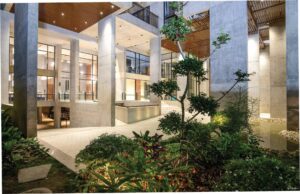
Glimpse of The Architectural Legacy of DWm4
DWm4 Architecture stands out as an innovative and visionary design studio, among the leading firms in the country. With its unwavering commitment to excellence, DWm4 has redefined the architectural landscape of Bangladesh through its creative and sustainable designs. Under the partnership of architect Mamnoon Murshed Chowdhury, architect Mahmudul Anwar Riyaad, and architect Shaoki Shamim, this renowned firm has been at the forefront of reshaping the country’s urban landscape with its innovative designs. In practice since 1995, DWm4 has been open to reshaping itself in terms of new design ideas, and also in management and operating strategies. Over the years, the practice has involved three separate and autonomously run units for architectural design [DWm4 Architects], interior design [DWm4 Intrends], and design-build projects [DWm4 Interprise]. While the founding partners, architect Mamnoon Murshed Chowdhury and architect Mahmudul Anwar Riyaad are involved in all three; the ID and Design-Build establishments have partners namely architect Daniel Haque and architect Arif Khan in chief executive and operating positions. In 2022, architect Shaoki Shamim joined DWm4 Architects as the third partner. All three architects had been members of the DWm4 team for a good number of years before joining as partners. With the younger generation coming on board, the vigour and architectural energy are strengthened through better mid-level management, enabling the practice to continuously make additions to its visions. The focus on re-structuring and evolution in DWm4 is based on the intent to produce designs of significance and relevance. While all projects follow the essential principles of being truthful to function, climate, structure, and aesthetics, they vary significantly so as not to be repetitive and predictable. For example, the architectural language is different in the office buildings like Bay’s Edgewater, Prime Bank Head Office on Gulshan Avenue, and Grameen Telecom Trust [GTT] Bhaban in Mirpur. The differences inherently are derived from site context and structural and functional prerogatives. landscaped precinct is created to bring tranquility to the context by appearing as an oasis to the pedestrians. The landscape is viewed from the interiors through the glass façade, and from the terrace formed by terminating the concrete portal on the 8th Floor, which is adjacent to the social spaces like the dining hall area, and daycare room. Another terrace facing East, adjacent to the Board Room on the 19th floor, is also a nod to the context as it provides a panoramic view of Hatirjheel. The design of Bay’s Edgewater celebrates the building’s location – accentuating the views from the interior spaces towards the sensual curves of the lake. At the same time, the layout does justice to its setting in a corner plot – separating the incoming traffic toward the more public café and gallery areas from the regular officegoers. Due to the careful attention to functional attributes, MEP, and BMS elements, after almost a decade of completion, the performance of the building is still stellar. The Prime Bank building is set deeper into the site as much as possible to be away from the maddening traffic of Gulshan Avenue. This was possible due to the site’s elongated shape. A 70-foot deep The Grameen Telecom Trust (GTT) project was designed on a partially built structure with fixed cores. By deleting one structural grid at the front and creating a water body at the place, the architects created a transcendent mediating space between the street and the double-height entry. Similarly, the very deep building floor plate was broken into two blocks by doing away with the middle parts of the floor slab by inserting a skylit atrium, which also ensured north-south airflow. The edges of the atrium are not static and shift in sections at different vertical levels. The facade is an intriguing composition of glass and concrete, creating a dynamic interplay of transparency and solidity. The patterns are inspired by organic lines of leaves and provide the building with a dynamic expression. The transparent glass sections allow natural light to enter the building, reducing the reliance on artificial lighting. About the project, architect Mahmudul Anwar Riyaad said, “We worked with the section of the building, which resembles a gallery. The ground floor lobby is dedicated to the people and space, encompassing a vast openness.” The building, designed in collaboration with architect Rashed Chowdhury reflects on people, progress, and emancipation. The field becomes more than just a patch of land; it becomes a symbol of joy, innocence, and a shared sense of community: In the typology of residential buildings, DWm4 has a large number of building projects that address the core concerns of natural light, ventilation, optimisation of space, and communicating with the context. Be it a single-family residence like the Reaz Loft in Khanpur, Narayanganj, or a multi-family building like Pohela Boishakh in Banani, Dhaka, these ideals find reflection in the designed forms. In Pohela Boishakh, the front landscape, the double-height drop-off area, and the lobby mediate with the street and creates a transition from public to private domain. The community space on the ground floor has a space that is designed as a café where residents come together and bond. The textures on the wall and floor are inspired by alpona motifs, reinforcing the spirit of Pohela Boishakh. The collaboration between the developer Signature 11 and DWm4 Architects ensured the seamless integration of architectural design and real estate development expertise, resulting in a remarkable building. The Reaz Loft stands as an incredible architectural achievement within the busy town of Narayanganj. This home on a very narrow strip of land, blends in with its surroundings and embodies modern living while paying attention to treasured memories of a special childhood field that is located in front of the loft. The elegant layout exhibits modernism with an emphasis on functionality and clear lines. As architect Riyaad explains, “Even though there was no room for horizontal deviations, we used our creativity to play with the building’s sectional elevations.” The structure stands as evidence of the designers’ keen eye for detail and commitment to creating spaces that resonate with the
Read More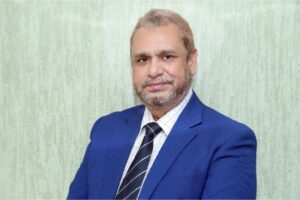
Bangladesh far away from tapping insurance potential
“The insurance sector’s share in the country’s gross domestic product (GDP) can be raised up to 10% from the current rate of 0.5% in the next 10 years, if the National Insurance Policy 2014 is properly implemented, and public awareness is created in this regard,” Managing Director and CEO of Pragati Life Insurance Limited (PLIL) Md Jalalul Azim told Ceramic Bangladesh (CB) in an exclusive interview. There is a huge potential for both life and a non-life insurance sector in Bangladesh as the country’s economy is booming. “But, we can’t exploit the potential due to image crisis, lack of proper monitoring by the Regulatory Authority, shortage of skilled manpower, and lack of awareness among many people,” Jalalul Azim said. Md Jalalul Azim Managing Director and CEO Pragati Life Insurance Limited There are a total of 82 insurance companies in Bangladesh, including 35 life insurance companies. Of these, the government has two companies– Jiban Bima Corporation and Sadharan Bima Corporation. However, the insurance sector does not flourish as per stakeholders’ expectations due to alleged violation of rules and regulations that leads to unethical practices at different levels. “We have more insurance companies compared to the need. For example, India is one of the world’s largest economies and has the highest population but there are only 52 insurance companies there. Steps of Pragati Insurance Pragati Life Insurance Limited (PLIL) is a third generation company, and Pragati Insurance Limited (PIL) is the first generation company in the country. Considering the overall situation, Pragati Insurance companies are in a better position compared to others. Pragati General Insurance Company along with others got a license in 1985. After achieving success through dynamic activities, the company’s entrepreneurs launched Pragati Life Insurance Limited in 2000. It started with a paid-up capital of Tk 30 millionagainst an authorised capital of Tk 250 million. However, the second generation insurance came in 1990, and the fourth generation in 2013-14. Pragati have 371 branches across the country. The life insurance premium was Tk481.76 crore in 2022 and met claims of Tk315.75 crore in the same year. In view of premiums, “we are now in 7th position among 33 insurance companies. We are in the capital market too. Our share price is the second or third highest in the stock market. Every year, we pay dividends to our shareholders.” The Pragati Life Insurance CEO, Mr Jalalul Azim, said, “We pay insurance claims properly without any hassle while many companies can’t pay their customer’s claims. It seems owners of many insurance companies don’t have a proper idea about insurance operations. So, they can’t pay their client’s claims amply. As a result, a negative idea among many people has been created in our insurance sector.” Overall, he thinks, Pragati is one of the better companies in the country. Why will people take insurance? In general insurance, clients can demand their claims after an accident. On the other hand, clients can demand the claim in both situations after the ending of insurance tenure and accident in life insurance, the Pragati CEO said. Common people get more benefits if they take insurance from reputed companies. Accidents may occur at any time in life. The victim’s family will get a handsome amount if a member takes insurance. Besides, if industrial units are burnt, ships are sunk, and airplanes are devastated from time to time and if businesses take insurance, it can overcome financial crises somewhat. Hence, there is a difference between banking and insurance systems. Banks can give a fixed profit to customers after an estimated period. But an insurance company can give a guarantee. “We do insurance over Tk. 50,000. And, if someone does insurance of Tk. 1 crore, we do Tk. 10 lakh insurance on our own and we do reinsurance at a foreign company for the rest of the amount.” As it is a Muslim-majority country, the demand for Islamic insurance is increasing. But there is a lack of skilled manpower, and policy here. There is no skilled person at the Shariah council to operate the Islamic insurance system. “We have also a service named after Takaful. A policy is very necessary for Islamic insurance.” Insurance for ceramic manufacturers The country’s ceramic manufacturers have to import different types of raw materials to manufacture ceramic products. During the import of the materials, accidents may occur at sea or on roads. For temporary financial support from damage, businesses should take insurance, Mr Azim also said. As per the government direction, import and export businesses have to take non-life insurance during Letter of Credit (L/C) opening. However, every businessman should take the benefit as it has a priority in the globe. Lack of skilled manpower Insurance Development and Regulatory Authority (IDRA) issued a rule for appointing Managing Director (MD) and Chief Executive Officer (CEO) but such highly qualified officials are not available in the market. Insurance-related technical departments also lack skilled manpower to operate insurance companies here. For example, Actuary is important in the insurance sector but there is only one actuary professional who is now 80 years of age. “So, our sector can’t flourish as per the potential.” There is also unhealthy competition in the industry. The government has fixed premiums for general insurance, but some companies offer commissions of up to 50 percent to customers. “There is no reinsurance company in Bangladesh. If the company does not do reinsurance how will it meet customers; claims? So they find a tricky way, he added.” Insurance companies can’t meet the claims of clients without maintaining professionalism. “IDRA installed observers in insurance companies. But if they don’t have money how they will meet the claims?” he said. To bring discipline in the sector, all companies must be brought under rules and regulations. Otherwise, public trust won’t build and develop the sector, the MD said. Sector growth decline Despite economic growth, there is no such progress in the insurance sector. The premium of insurance companies is 0.5 percent of GDP contribution which was 1.0 percent five years ago
Read More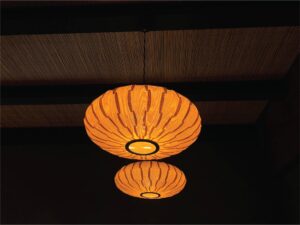
SUSHI TEI Experience Tranquillity with Authentic Japanese Taste
If you’re in the mood for a sublime space and Japanese cuisine, Sushi Tei is the place. Sushi Tei interior aspires to a state of harmony, serenity, and simplicity. Clean lines, uncluttered areas, and a minimalist approach are used in the design to foster a serene mood. Popular Japanese restaurant chain Sushi Tei is known for its sushi and other Japanese cuisine. It began its journey in Singapore and has since spread to several Asian nations including Bangladesh. In 1994, it was opened in Singapore and in Bangladesh it’s first introduced in 2020 at Gulshan, Dhaka. The interior reflects Japanese culture’s Zen Garden idea. recognising and praising the genuine shape and colour that permeated the entire area. A sturdy Keora tree root sculpture stands out at the entrance. A component of nature, yet in its unaltered, unadulterated state, it exudes a unique aesthetic appeal. On the exterior, the GP sheet and MS sheet sculpture blend with the creepers, creating a green facade. The transition from the outside to the inside is thoughtfully planned. At the entryway, a zen garden is included to go with the wooden pavers. A large waiting area is available at the reception desk on the ground floor to welcome visitors. The first floor is where the restaurant is. The staircase’s Tuna fish sculptures on the wall and the north-diffused light from the opening offer visitors a sense of calmness. The entire experience—from the outside to the inside—is a voyage into meditation. “It’s pretty difficult to convert a residential property into a restaurant space. I liked the entire area as there were a lot of space and trees surrounding the structure. The obstacles we experienced served as the inspiration for every design choice,” explains the interior designer and artist Md. Mazharul Haque Tonmoy. “It had an issue with water clogging since the surface in the area was lower than the road. To address that, we included soak-able green areas, which allowed us to design an outdoor zen garden.” The restaurant’s aesthetics favour a subdued and neutral colour scheme. Earthy tones such as beige, cream, soft greys, and muted greens have been used to create a calm and soothing atmosphere. The focus is on functionality and creating a sense of spaciousness. The use of natural materials is remarkable. Wood, bamboo, stone, and natural fibres like cotton are incorporated into the restaurant’s interior. Exposed wooden beams, bamboo partitions, and stone accents create a sense of warmth and authenticity. Sushi Tei’s interior emphasizes open spaces and a sense of flow. The layout of the restaurant allows a smooth transition between different areas. Open floor plans, sliding doors, and screens are used to create flexible spaces that can be adapted for different group sizes or private dining options. It’s fascinating how different types of floor materials are used to separate spaces. To accommodate various visitor demands, various sitting configurations, including booth seating, low-height seating, and Takumi seats, have been implemented. Gentle and warm lighting played a crucial role in this Zen-inspired restaurant. Soft, diffused lighting fixtures like pendant lights, paper lanterns, and wall sconces have been used to create a tranquil atmosphere. While the space is designed as a low-light space, maximising natural light through large windows or skylights is also incorporated to establish a connection with the outside world. Incorporating Japanese artwork, calligraphy, or traditional motifs enhanced the Zen aesthetic. Hanging scrolls (kakemono) with brush paintings, ink wash paintings (sumi-e) and carefully selected artwork provide focal points and add cultural depth to the space. The acoustics of a dining area are crucial to its ambiance. The soft trickling of fountains and running water is now present. The ambient noise was softened with the help of a miniature indoor fountain. To add a touch of nature and artistry, Sushi Tei’s zen garden displays bonsai trees. These meticulously crafted arrangements reflect the Japanese appreciation for beauty and harmony in nature. The entirety of the setting is ideal for taking photos. The use of mirrors and glasses is fascinating. “The Japanese are very sensitive about their design. The patterns they use on their screens are also very detailed. We tried to follow their process of design, not a specific design. The philosophy was to let the space speak for itself about how it wanted to be treated. We were just trying to listen,” Md. Mazharul Haque Tonmoy added. Sushi Tei, provides an oasis of calm for guests, allowing them to relax, unwind, and appreciate the simplicity and beauty of their surroundings while enjoying their dining experience. Written by Fatima Nujhat Quaderi
Read More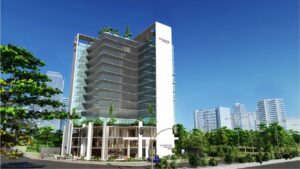
Rupayan leans towards building more green apartments Says CEO
Rupayan leans towards building more green apartments, as its demand is going up in the country. But, higher construction material prices and apartment registration costs make a challenge for realtors, CEO of Rupayan Housing Estate Ltd. Md Alinur Rahman told Ceramic Bangladesh (CB) in an exclusive interview. Bangladesh’s real estate sector, Md Alinur Rahman said, has boomed in recent years but today it’s going through a challenging situation due to a variety of issues. The sector has earlier flourished, thanks to the self-motivated venture of Developers and realtors. Since housing is a basic need of people, the entrepreneur said, “we lean to taking big projects on huge pieces of land to build accommodations for more people.” Despite the sector’s huge contribution to the gross domestic product (GDP), we don’t get a business-friendly policy or support from the regulatory authorities, he said in an interview. “I believe if the government and other authorities concerned are caring about the sector, it would be the best booming sector in the country.” The Rupayan Housing’s journey of 24 years has been glorious and through this journey, he said, “we have fulfilled the dreams of a lot of people by building apartments and implementing commercial projects” in the country. “We build strong and quality buildings. We have a strong and innovative culture and we maintain the aesthetic design through our creation.” Mr. Alinur Rahman added, “We are such a developer who lead from the front. We’ve created the country’s first township project (Rupayan Town) in Narayangonj and one of the biggest and first premium mega-gated community projects (Rupayan City Uttara) in Uttara in Dhaka.” Rupayan Housing’s strengths are said to be unique products, excellent efficiency, and productivity. It is a customer-centric organisation, he pointed out. “Our services create raving fan customers. We can scale sustainably and have high adaptability. We continuously work on the diversification of products and services. We are also blessed to have robust and decisive leadership.” He said their ongoing projects are in Motijheel, Naya Paltan, Mirpur-1, Tejgaon, West Dhanmondi, South Badda, Bashundhara R/A, Mirpur DOHS, and Savar in Dhaka, Sylhet, Kanchpur, Cumilla, Chattogram, and Narayanganj. “We look forward to creating more so that the Rupayan group continues to create history in the Bangladesh real estate sector,” he said. The foundation work of its green paradise in West Dhanmondi on 102 Katha would start soon. “Our first satellite town at Narayanganj will be environment-friendly.” Now both job holders and businesses are going through a challenging moment. So, apartments between 1500 and 2000 square feet are of higher demand. In such a situation, Rupayan brings to the market apartments worth Tk1.5 crore to Tk2.5 crore. Buyers had once used to look for just an apartment, but nowadays their test has changed, thanks to increased income and change in lifestyle and they want wellness, communities and condominium apartments, he said. Clients want multiple facilities together for their family members in the apartments. They want such an environment that kids and elderly people can enjoy together, he added. RHEL is a pioneer in Bangladesh providing condominiums, gated communities, and satellite towns. Considering social responsibility, “we always try to build environment-friendly housing where all aged people can be beneficiaries,” said Mr. Alinur Rahman. The Rupayan CEO mentioned that the green apartment concept came to Bangladesh about seven years ago. There are a lot of issues in green apartments such as water reusing issues, waste management, huge open space, a percentage of greenery, and soil quality. “We are seriously working to include such facilities in all our projects,” he said adding that several companies such as BTI, Sheltech, SEL, Concord, and Rangs Properties Ltd are doing it. Rupayan Swapno Niloy in the Siddheswari area of Dhaka was built as per green apartment concept. It is a high condominium project, he said. Besides, Rupayan Town in Narayanganj Bhuighar has huge open space and greenery. “Our ongoing project named Rupayan Lake Castle in the Bashundhara area will be a proper greenery building. And, Rupayan green paradise project in West Dhanmondi will be made into a natural pond.” He said, “We don’t think only financial issues before setting up a building. Our priority is to ensure a livable and quality building for our clients. As we build an apartment on our purchased land, we can provide it at a reasonable price.” The entrepreneur pointed out that of the many challenges in the real estate sector, the key one is higher price of construction raw materials and apartment registration costs. He is also concerned about the reported plan to ensure apartment registration in a full-value system. “If it is implemented, the flat registration cost will go up from Tk8-10 lakh to Tk25-30 lakh for a Tk1.0 crore apartment. “The registration process should be at a minimum rate; otherwise buyers will suffer and that will be a new challenge for the sector.” Also, the construction area will be reduced by 30-35 percent due to the Detailed Area Plan (DAP) and in such a situation, developers will make buildings jointly with land owners, he said adding that in that case, the apartment prices may rise around 30 percent. So, he recommended amendment to the DAP. There are around 250 sub-industries in the real estate sector and he felt that all should work together to ensure that the sector flourishes. He also emphasized that they try to uphold the rights and privileges of the customers from the land process to apartment handover. “We are firmly committed to ensuring our clients’ rights.” He recalled that once labours used to carry raw materials on their heads to cast the roof of a high-rise building but the trend has changed. “Now we use different type of modern machines in all our work, like foundation piling, and roof casting in buildings. We also use ready-mix concrete (RMC) to maintain qualitative value and speed up the work. The mechanism is also used in civil work, sanitary, and painting.” Now, most companies use machinery to construct their projects.
Read More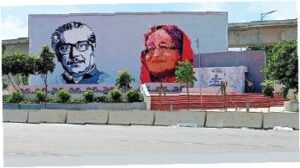
Lack of Policy, Marketing Supports Clogs Export Earnings from Pottery Industry
Even though terracotta has thousands of years of history in this region, there is no dearth of demand for the art in the modern era as well. Rather, people’s taste has changed with rising income and innovative design increases the art’s demand. People want to hold their history and tradition through terracotta, murals and sculpture. Nowadays, terracotta murals with traditional Bengali folk symbols and the Liberation War are seen on walls of different establishments such as museums, educational institutions, offices, stadiums, restaurants and squares of roads. The symbols of the Language Movement and Liberation War are noticeable arts in the country. These terracotta murals and sculptures touch people’s hearts easily as history was made through a bloody struggle. In Bangladesh, different ministries and departments allocate funds to set up the arts at various places Nokkhotro ensures innovative design The Nokkhotro is a sculpture and pottery institute established in 2009 by artist Ashraful Alam Riaz in collaboration with Muhammad Rawshan Ali so that the history and traditions of the country can be highlighted through art works to the next generations. “We are moving forward by doing small art-works. At the end of 2011, the artist, Shrivas Basak, joined the Nokkhotro. After that, we never looked back. Today’s Nokkhotro is the result of our tireless work,” Mr Ashraful said. In this context he recalled the contribution of two persons to establishing the institution –Shrivas Basak and Khorshed Alam. However, he was working at Nokkhotro till March 2019,” Ashraful added. Nokkhotro has around 150 artworks till date and most of them are mural and terracotta. “I only built a sculpture ‘Bangabandhu sculpture’ at Rajbari road square of Faridpur,” he shared with author. However, despite a huge demand for pottery items in the global market, Bangladesh cannot take the opportunity due to lack of proper marketing, and policy support from the government He explained that the demand for Bangladesh’s pottery items like crockery, mural, and terracotta have a good demand in local and international markets, thanks to unique designs. He regretted that the country cannot earn more money from the industry by exporting these items due to lack of policy support and marketing difficulties. “I urge the Cultural Affairs Ministry to take an initiative to arrange fairs at home and abroad so that our artists can display their art works in those exhibitions,” Mr Ashraful said. Terracotta are made with clay, and mural and sculptures with ceramic plates, he said, adding that emperors had in the past used earthenware and decorated their basilicas as well as different important places with mural and sculptures by famous artists. Nowadays, murals and sculptures are built in different sites to recall history and enhance beauty of a site Key arts of Nokkhotro “My institution has already produced 120 murals, 30 terracotta and one sculpture,” the artist said. Their remarkable mural and terracotta are ‘52-71 Shironam’ and ‘Sheikh Rashel’ murals on the walls of Shukrabad New Model Degree College in Dhanmondi, ‘Muktir Dak’ mural at Nikunja-1 of Khilkhet, which was inaugurated by former President Abdul Hamid, Bangabandhu Memorial Ghat Mural in Tungipara of Gopanjang, Terracotta of Osmani International Airport in Sylhet, ‘Prerona’ mural in Dinajpur, Muktijoddha and Bangabandhu terracotta in Tetulia, ‘Rouhani Manzil terracotta and mural at Bir Muktijoddha Mofiz Angur Museum in Natore, ‘Shaheed Sritisoudh’ Shikhari Para Tozammel Hossain Chowdhury Degree College Premises in Nawabganj Upazila. He also added that their works on terracotta, and murals are going on, at Dinajpur DC office gate, Narayanganj Rupganj Upazila Parishad Gate, Rupganj Upazila health Complex gate design, and Madhubagh Park. Several new projects to be implemented in different parts of the country are awaiting for approval, Mr Ashraful added. Murals on two ends of Padma Bridge The highest two murals in Bangladesh are ‘Bangabandhu and Sheikh Hasina’ Murals on both ends of Padma Bridge. One is Mawa site of Munshiganj and another is Zanjira site of Shariatpur that increased the beauty of the Padma Bridge, artist Ashraful said. “We have built Jamdani murals on both Mawa and Zanjira sites; this is our best work so far. The mural of Zanjira site is 72-foot tall, and 36-foot tall. The mural at Mawa end is 90-foot talland 40-foot tall,” he informed this author. “We used to engage 18 artists and 22 workers between April and June 2022 to construct the Padma Bridge mural at the Zanjira site.” We built a special studio for the work there. Portraits of Bangabandhu Sheikh Mujibur Rahman and his daughter Prime Minister Sheikh Hasina were placed on the walls on the banks of the Padma River, decorated step by step with Chini-Tikri,” he also said. The artist added that primarily they thought of creating a mural with ceramic tiles, but later opted for high-quality ceramic plates considering the bright colours and durability. “A total of 15,000 plates of 37 types of colour were used in the two. These are called ‘Chini Tikri’. And 30 types of coloured plates were used to produce the portrait of Prime Minister Sheikh Hasina. These ceramic plates are not usually produced by ceramic companies. However, Artisan Ceramics made 8,000 plates used in the Mawa end’s mural, and Monno Ceramic made 7,000 plates used in Zanjira end mural. These are the biggest murals in Bangladesh.” Use of Ceramic products “Now we use 100 per cent ceramic products while we make murals. The ceramic products ensure durability and colour bring brightness in our arts,” he said. “As ceramic products are used in our works, I request ceramic companies to sponsor us to continue our work across the country and the globe. It will help to expand the ceramic market as well.” “We want to keep Bangladesh’s tradition and history through murals, terracotta and sculpture for the next generations. I have a plan of building 100 most influential people’s mural across the country. Prime Minister Sheikh Hasina will be one of them as she has a contribution to the economy,” Ashraful said. He pointed out that their key challenge is financing support. “It is
Read More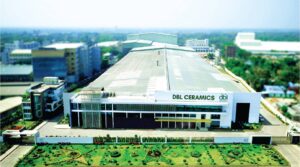
DBL CERAMICS Conservation and Sustainability
Between depleting natural resources and a dire need to conserve and restore nature is the upsurging imperative to ensure industrial growth. An emerging economy like Bangladesh needs urgent transition to a more greener approach when it comes to growth, a resurgence of a 52 year-old nation. Focusing On Ceramic Industry While the product itself is environment-friendly, the production process causes 0.29 tonne of CO2 emission for every tonne of ceramic produced. Following a worldwide awareness, nations are turning to sustainable approach. The ceramic companies in Bangladesh are adapting to it as well. On a broader perspective, the 2023 SDG report says, one in every two countries lacks an effective framework for sustainable water management. From 2015 to 2020 there has been a slight improvement when it comes to SDG implementation. This, however, needs to be doubled if we want to meet the global goals. As Bangladesh has pledged to implement SDGs and comply with global standards, its ceramic sector has seen sustainable growth. DBL Ceramics, a concern of the DBL Group, is a young ceramic manufacturer, established in 2017. In a very short period of time, the company has reached the current position as one of the top manufacturers of ceramic tiles. DBL tiles are made for almost every surface –regular floors, high-endurance/areas with heavy traffic, gymnasiums and so on. The past few years saw substantial growth of the company which has over 160 dealers and 6 display centres in Dhaka, Chattogram, Rangpur, Sylhet and Barishal, with plans to expand to Khulna and Rajshahi. DBL has also made significant investments in reusable resources and waste water management, amongst other sustainable initiatives. In an attempt to reduce waste water, DBL has installed waste water treatment plants capable of treating 18,720 cubic meters of wastes by product everyday. State-of-the-art machineries at DBL SACMI kilns to turn clay to ceramic, Ball Mills for fine grinding, and Air Power glazing line–most of DBL’s machineries are energy efficient motors. They have inverters, energy cogeneration system, machines to reuse energy from kilns and dryers, along with other equipment to reduce wastes. To add a bit more automation to the mix, the company has Techno Ferrari for handling and storage. Ceramic Bangladesh Magazine visited DBL’s Gulshan office recently and sat with its head of operations Md. Bayazed Bashar to discuss his experience in the industry, future plans of the company, export difficulties, and more issues. DBL is a relatively young company but has fast become one of the top tier tiles manufacturers in the country. It has some of the best showrooms in the country and provides clients with an immersive experience, allowing them to visualise the product better. “Ever since I joined DBL, I’ve had unwavering support from our management. I was on project implementation when I joined, and I am thankful for the faith our management had in us, which consequentially resulted in our performance and growth” said Mr. Bashar. “DBL ceramics is the first diversified project for the DBL Group. We have an R&D (research and development) team working on innovation and we have become one of the top brands within a short time. We uphold our standards through our service quality and innovation,” he said. In terms of growth, DBL has been adding a production line every alternative year, and now has the capacity of producing 35,000 square meters per day from the initial capacity of 8000 sqm. The conversation ensued as we talked about the initial steps of a career in the ceramic industry, Mr. Bashar said, “It’s very difficult to find a mentor who can guide you in the earlier years of your career, especially after graduation. A mentor can help you choose the right track, giving you opportunities, and helping you polish yourself. I’m really happy to have had the opportunity to join DBL Ceramics, and found my own mentor here.” He added, “I have seen individuals get frustrated with their jobs if/when they get no opportunity to work on their competency. Once given the opportunity to explore, a working professional finds more interest in his work and solidifies into an asset for his company.” When asked about the hurdles of a career in this industry, Mr. Bashar recalled the tougher times and the ever-existing troubles. Having passed through them, he is now happy with where he stands and what he has learned through the experiences. He stated, “I am happy to have chosen this path for my career, considering that I was inclined towards doing what my friends did – going abroad for higher studies after graduation. Instead I joined DBL in 2007.” One of the most recent initiatives of the company is the Tiles manufacturing project in Sylhet. The extension is called Bright Ceramics – a tiles, tableware and sanitary-ware manufacturing plant, which will finish construction by the end of next year. DBL is also working on advanced ceramic products. According to Mr. Bashar, among some of the major drawbacks of this industry is import dependency. The added disadvantages due to incremental gas price and shortage create a much greater impact on the production cost. A shortage of gas supply results in on-and-off gas in the kilns – slows down in production. According to Mr. Bashar, the added cost has only been inflicted on the manufacturers and the customers are unaffected. “The duty structure really surprised everyone. We are paying full duty on imported clay that is 25-30 per cent moisture.” Mr. Bashar pointed out. On a brighter note, DBL will be the first player in the subcontinent to incorporate Industry 4.0- allowing it to collect data analysed later on a big screen. AI for DBL Ceramics DBL has already started with AI (artificial intelligence) for ceramics. It is planning on a full automation for the factory that will function with minimal human intervention. Mr. Bashar could only tell Ceramic Bangladesh Magazine that the AI software is being developed by an international IT company, and soon, will be set in motion. Concerning imperatives Some of the
Read More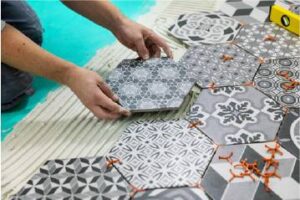
CERAMIC EXPORTS BUT CHALLENGES THWART INDUSTRY GROWTH
Bangladesh’s ceramic industry shows signs of recovery from the global pandemic effects with much higher potential, in terms of both domestic and foreign market demand apart from enthusiasm among and endeavours by the entrepreneurs to see it shining. However, the ceramic sector growth has slowed since manufacturers cannot deliver products on time owing to disruption or shortage of supply of gas as the key factor of production. Bangladesh’s exports of ceramic products rose to a four-year high in the 2022-23 fiscal year but could not yet match the level of exports recorded in 2018-19 fiscal year, the year before the pandemic struck the country. The country’s export earnings from the ceramic sector stood at $43.39 million, 13.22 per cent lower than the target of $50 million export set for the fiscal year 2022-23. It was still about 5.0 percent higher than the earning year before. The export of ceramic products was $41.36 million in 2021-22, $31.11 million in 2020-21, $27.97 million in 2019-20 and $68.97 million in 2018-19, according to Bangladesh Export Promotion Bureau (EPB). The country exports ceramic products to 53 countries and the domestic market size of ceramic items is around Tk 80 billion. These figures underline the fact that the country’s ceramics industry has turned into a booming manufacturing sector over the years, cashing in on growing demand both in domestic and international markets. “Manufacturers could not run factories at full capacity due to inadequate supply of gas. This was the main reason the sector did not achieve expected export growth in the last fiscal year,” said Irfan Uddin, General Secretary of the Bangladesh Ceramic Manufacturers and Exporters Association (BCMEA). Also, he added, the demand in the international market has not increased unlike expectations, due to the Ukraine-Russia war. The gas crisis hit industries last year after the government paused purchasing liquefied natural gas directly from the international spot market to stop depletion of foreign currency reserves, leading to a drastic fall in energy supply. Mr Irfan Uddin said manufacturers did not get the gas supply for around 12 hours a day since last October. “So, we could not make products on time. As a result, we were not able to supply goods against around 30 per cent of the orders,” said Irfan Uddin, also Director at FARR Ceramics Ltd. He, however, appreciated the government for providing a 20 percent cash incentive against exports of ceramic products, terming this as encouraging for the ceramic exporters. M.A. Jabbar, Managing Director at DBL Ceramics, said the business of the ceramic sector is going through a difficult stage due to increase in the production cost and the gas crisis. “Absence of uninterrupted gas and power supply and increase in the cost of production hampered production, ultimately affecting the exports of ceramics,” he argued. The entrepreneur said owing to disruptions in gas and power supply, the sector has faced a big challenge in maintaining quality of products Local ceramic manufacturers mainly produce four types of products: tiles, tableware and sanitaryware and ceramic bricks. Of the 70 manufacturers currently operating, twenty produce tableware, thirty two make tiles and the rest produce sanitaryware and ceramic bricks. Bangladesh mainly ships tableware and has added tiles, sanitaryware & ceramic bricks to the export basket in recent years. According to Mr Jabbar, considering the ongoing high inflation environment, manufacturers are not in a position to raise prices of their products despite an increase in their cost of production. As a result, the profit margin has plunged to the lowest level Ruslan Nasir, Deputy Managing Director of Mir Ceramic Limited, said tiles manufacturers export on a limited scale and contribute an insignificant amount to the export basket. The company mainly exports to the north-eastern states of India. Ruslan Nasir said local tiles manufacturers are focusing on the local market since demand has grown over the past decade, thanks to rapid urbanisation. “There is a lot of competition in the tiles segment globally. And since the sector is dependent on imported raw materials, it will take time for the local producers to grab a significant share of the international export market.” He, however, sees a bright prospect of the tiles segment since Bangladeshi manufacturers produce world-class products. BCMEA President Md. Shirajul Islam Mollah said, “At present, two major problems of the ceramic sector are gas and dollar-crisis. It is facing a challenge. We are not getting uninterrupted gas even with increased prices. Most of the factories in the ceramic sector are in Gazipur. Due to the gas crisis, the production of factories here has dropped to 40-50 percent. Again, the gas situation is somewhat better in Bhola and Habiganj, but there is a problem in Narsingdi and Rupganj. Production of most factories is disrupted due to the gas crisis. Overall production is going down by 40 percent due to the gas crisis. So the production cost is also increasing and exports are facing challenges.” Ceramic manufacturing companies are also facing problems in opening letters of credit (L/Cs) for import of raw materials due to dollar shortage. He said 90 per cent of the raw materials of ceramic products are imported. Meanwhile, the increase in dollar and gas crisis, on the other hand, due to the increase in ship fares, the cost of production has increased by 30-35 per cent. Due to the gas crisis, the tiles could not be produced according to the market demand in the last winter season. It is not possible to use more than 60-70 per cent production capacity of the factory According to the National Board of Revenue (NBR) data, imports of mineral clay — ‘China clay’ and ‘Ball clay’, the main raw materials for ceramic products — fell by 17 per cent in the fiscal year 2022-23. Now, it takes 15 days to open L/Cs for raw material imports compared to only two days for the purpose, due to the dollar crisis. Thus there is a shortage of raw materials in the factories. He said, ‘All in all, the ceramic sector
Read More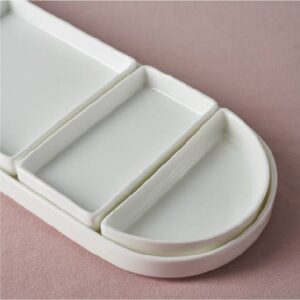
Monno’s Modular Aesthetics in Simplicity In coherence with the décor, tableware can add grace and is an element that never goes unnoticed
The word “tableware” means any “dishware” used to serve food on. This can be from glassware and ceramic tableware to even banana leaves. The word takes under its umbrella, literally anything that is used to serve food on. Tableware is now categorised into four segments- serveware, silverware, dinnerware, and glassware. Finding the perfect tableware to compliment your taste can be a hectic feat. This can, however, be countered with a thorough online research or a few visits to local showrooms. To truly understand the design concept and versatility of a ceramic product, you need to dive deeper. And in this segment of Ceramic Bangladesh Magazine, we intend to guide you through a product we deemed fit and worthy for an exclusive mention. FEATURED PRODUCT Here, in this segment, the tableware we decided to putout is Monno’s modular collection, launched this year. Monno is one of the largest ceramic manufacturers as of now, and initiated with porcelain tableware. With the esteem that comes with the brand, weighed furthermore by a young British designer called Billy Lloyd, the Modular collection has been crafted with the aim to mostly export. Monno, sole manufacturer of this collection, has crafted the Modular collection as a downright product for catering services, events, hotels and restaurants, among other hospitalities. Currently the collection is being exported to the UK, Italy, India, and Qatar and is also available in Monno’s flagship outlets. THE DESIGNER Designed by a British artist named Billy Lloyd, the Modular Collection features sleek and slender design wrapped in white. Billy Lloyd, the young designer, spent his earlier years working as an apprentice to Julian Stair (an acknowledged potter), and learned to throw porcelain on a potter’s wheel. After four years of apprenticeship, he opened his own shop and soon became a popular ceramic designer in London. Billy Lloyd joined Monno later on, as a creative director. Regarding the upcoming, Mr Lloyd said: “Recently, we launched Modular, a versatile bone china hospitality concept and a porcelain range entitled Bistro, which is a stacking collection of porcelain tableware with a European aesthetic. Our hope is always that we can play a role in evolving the taste and direction of the domestic market in Bangladesh, while simultaneously appealing to the ever-important export market. What is to come next… watch this space Made of Bone China, the Modular collection is perfect for a restaurant or a hotel setup; and also for catering services. The tableware is visually elegant, stackable, and durable for a busy venue. The maximum size being 380mm X 130mm oval dish, all products of this collection are made minimally for an average sized spread on a table. The Modular collection was inaugurated in London, and has gained popularity already. We don’t know much about the local response but considering the elegance of the shapes we expect to see this product flourish. “Working as Creative Director for Monno for the last five years has been very creatively rewarding as I have been allowed the opportunity to touch on numerous facets of the company, from design to business development,” said Billy Lloyd. “My role is not only concerned about tableware design, but also very much about how we communicate the company as a brand especially to the international export market, both Retail and HoReCa. I have learnt a great deal and am grateful to the Monno family for instilling such trust in my vision.” Written by Chisty Rahim
Read More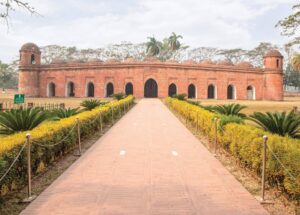
UNESCO World Heritage Site SHAT GAMBUJ MOSQUE Architectural Evidence of History
Bangladesh, the land of beauty, is glorified with various heritage sites which prove rich culture and heritage and blend of beautification in every sphere of the architectural works. The administrative district of Bagerhat under Khulna division of southern Bangladesh is famous for its archaeological richness. The historic mosque city of Bagerhat, the Shat Gambuj Mosque (Sixty Dome Mosque) is the most magnificent and the largest enclosed type mosque built by Khan Jahan Ali in Bengal. It is the largest historical mosque in Bangladesh from the sultanate period (1352–1576). It has been described as one of the most impressive Muslim monuments in the whole of South Asia. It is famous for its sheer size and stunning architecture among many heritage sites. The Shat Gambuj Mosque is located five kilometers from the main town of Bagerhat. It is situated by the eastern bank of the Ghoradighi which has increased the beauty of the Mosque remarkably. The amazing construction work of the mosque started in 1442. It ended in 1459 and is a proven example of glorious history and beauty declared by UNESCO as a world heritage site in 1985. In the mosque, Muslims offer prayers (Namaz) five times a day and Eid prayers also take place here. Every Friday at noon, more than 5,000 people pray Jumma prayers here and visit the Shat Gambuj Mosque and explore the beauty of historical evidence since long-gone centuries. The building of Shat Gambuj Mosque began in the middle of 15th century with establishment of a Muslim colony near the mangrove forest, the Sundarban, another UNESCO heritage site in Bangladesh. The colony was founded by a revered general named Khan Al-Azam Ulugh Khan Jahan. He was also a great and famous Muslim saint and the local ruler of Khalifabad (present Bagerhat). Khan Al-Azam Ulugh Khan Jahan conquered the greater part of southern Bengal and the prosperous area was named Khalifabad in honour of the reigning Sultan Nasiruddin Mahmud Shah (1435-59). Khan Jahan ruled the region with the seat of administration at Haveli-Khalifatabad, identified with present Bagerhat, till his death in 1459. He had built many structures for the well-being of the people in that locality. He made water tanks, mosques, madrashas etc. Shat Gambuj Mosque is his greatest creation. Khan Jahan Ali was widely known as the great architect of historical mosques around the South Asian Subcontinent, who embellished the entire Bagerhat region with more than a dozen mosques under the patronage of the Sultan. The ruins of which are focused around the most imposing and largest multi-domed mosques in Bangladesh. The legacy of Khan Jahan Ali is vividly evident in his architectural works. He preached in this affluent region during the reign of Sultan Nasiruddin Mahmud Shah. Shat Gambuj Mosque is a wonderful proven archeological beauty that is the signature of the 15th century. The planning of the mosque is a living example of the Islamic architecture and the decorations remind us of the blend of Mughal and Turkish architecture. The Mosque is also known as the Sultanate Mosque, which was used for ruling the area and a court at that time. The mosque was not used only for prayers, but also as a madrasha and a parliament assembly hall. Though the Shat Gambuj Mosque refers to a mosque with 60 domes or Roof Gambuj. However, it actually has 77 squat (low) domes, arranged in seven rows of eleven, and two-storied four high domes or tower on four corners, bringing the total to 81 domes. Two of these four high domes or towers were used for Azan or the call for prayers. On the east side of the mosque, there are 11 arched doorways, while the north and south each have seven doors. These arched doorways also providing ventilation and light in the hall. The interior is divided into seven longitudinal aisles and 11 deep bays by 60 slender stone columns, which culminate in numerous arches that support the roof. The vast prayer hall of the Mosque has walls of unusually thick, tapered brick in the Tughlaq architecture style of Delhi and a hut-shaped roofline that anticipates later styles. The inside space of the mosque is 48m x 33m (160 feet x 108 feet = 17,280 sq feet), and the wall of the mosque is almost six feet (1.8m) thick. To enhance the mosque’s attractiveness and give it an exceptional appearance, the entire structure is constructed of red burned mud or bricks. The Turkey style of architecture was followed using tempered brick in the mosque. The detailing of the mosque is prepared with terracotta decoration. So anyone can notice the exquisite detailing around the doors with beautiful design. Inside the mosque, the walls are crafted based on the former Muslim cultural tradition. The atmosphere inside the mosque is cool and comforting for the unusual thickness of the wall. Inside the mosque, among the ten “Mihrabs” the central one was built of stone and a special doorway had been built in “Qibla”. The central mihrab, which corresponds to the central nave, is bigger than its flanking counterparts and shows a rectangular projection on the outer side, carried up to roof level. These mihrabs are also decorated with stonework (grey sandstone) and terracotta and the floor of the mosque is made of brick. Its ornamentation is in the Muslim style of carving in shallow and low relief. The mosque yard is surrounded by an old, ornamented boundary wall. The enclosed compound was originally entered through two gateways – one in the east, now restored and repaired, and the other in the north, no longer extant. The eastern gateway, facing cardinally the central archway of the mosque proper, appears to be a monument by itself. It measures 7.92m by 2.44m and consists of an archway having a span of about 2.44m with a beautiful curvature on top. Now there is a picnic spot beside the mosque area around the historical Ghora Dighi. There is a museum in the mosque area which is situated to keep the historical
Read More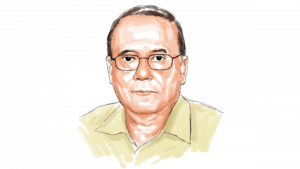
Architect Mubasshar Hossain An Eternal Soul Flown Through Eternity
Human life is a shirt journey Every human is born with a purpose that differs from man to man. Some of us can fulfill all the purposes. We might spend an ordinary life with the only aim to earn daily bread and butter, save money and lead a secure life. However, there are others who dedicate their entire life to the betterment of society, country, and the world. Their great deeds have no political or religious boundaries. The grandiose of their presence remains a feeling of reliance for all.
Read More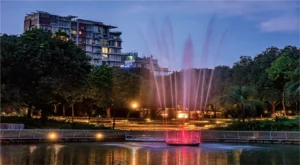
A story of Rewards as lateral Awards
Architecture is a practice, a profession. Is it only that? To many, it might be, but to a few, it is a form of emotion or a meaningful impact on public realm as well. Architecture is not only all of the above, but beyond. The arena is not just there to make boxes to accommodate functions. It needs involvement of humans, life, psychology, sociology, economy, and every other vital aspect to shape a living standard. From micro to macro, from master planning to interior designing, the field is vast to explore. Architects need to be sensitive and sensible enough to practice these opportunities of responsibilities. VITTI Sthapati Brindo Ltd., co-founded by architects Iqbal Habib and Ishtiaque Zahir Titas, is one of the few firms in Bangladesh that focuses on all these aspects. In the past 32 years, Vitti has accomplished master planning, building designs, and interior designs for both public and private realms. The story cannot be shared in short. For them, the project experience speaks more intensely than words. The architectural projects of Bangladesh are pinning their existence on the global map, earning a lot of recognition and awards. Vitti as a firm has also received many prestigious ones, but to them, these accolades add value to the projects and compel Vitti to act more responsibly. Their main source of success is the lateral returns they receive from projects started for the benefit of common people. Their success is determined by the impact of their designs on the lives of Dhaka dwellers. Again one such initiative that has had a significant impact on bridging the gap between Dhaka’s eastern and western neighborhoods is HatirJheel. Since most of Dhaka is densely built up, the journey along the lakeside is a splash of fresh air. But it wasn’t an easy journey to create this dream project. “We opposed the initial house planning for four and a half years, as well as the commercial expansion of Kawran Bazar in the Hatirjheel neighborhood. I noticed a model of the planned housing was in the RAJUK chairman’s room. In a conversation, he excitedly shared how the housing plan advanced to landfill the waterbody. High land price was their excuse,” shared Ar. Iqbal Habib. With the help of respected specialists in the environmental and other sectors, they launched a protest that helped to create the experience we live in today. It was more than simply a project; it was a vision and a dream. People in Dhaka never imagined that it would be possible to go from Gulshan-1 to Tejgaon by waterbus. The smiley face of the waterbus user is rewarded for the architects. The stories are always greater than the projects. Large-scale initiatives by Vitti are illustrations of how perseverance can bring big dreams. This serves as motivation for individuals and aspiring architects. Dhaka’s parks and playgrounds have recently been refurbished, giving the city some much-needed green space. Twenty-seven parks, mostly in the northern part, were designed by Vitti. But what we see is the result: stories that were not designed on pen and paper. The permission to revitalize these parks was also an achievement after a social movement. How were the parks designed? Ar. Ishtiaque’s response to this query was, “The development of these parks was designed by users, children, who have the primary rights to the space. We provided them with Minecraft, and they designed their parks. We ensured those children, female children, the elderly, and especially abled people had facilities and access to parks. We wanted people to be inspired by the space that they designed, that we enhanced, and that we built.” The project was executed with a focus on collaboration and inclusively, which has resulted in park and playground that truly serve the community. This project involved active participation from the user group and young children who were given the opportunity to express their desire for the space through a participatory questionnaire survey. Hence the designs are an example of successful co-creation as a process, it create a sense of ownership and pride among the community. However, the success of the project can be attributed to the careful co-management of all stakeholders involved, including professionals and the community. People’s contributions influence the nation’s daily growth. And these tales are examples of growth through adversity and success. Architecture in Bangladesh should be for and at times created by the general populace. At this juncture, the nation requires user-centric design, particularly in public domains. “Vitti—The Atelier” was established in 1991 under the direct supervision of subcontinental Master Architect Muzharul Islam. In 1993, three youthful architects, Ishtiaque Zahir, Ehsan Khan, and Iqbal Habib, founded “Vitti Sthapati Brindo Ltd.” from the “Atelier.” Currently, there are ninety members on the team, including architects, CAD specialists, engineers, administrative employees, and support personnel. “As fresh graduates in a very challenging time of transition period of democracy in the country, our spirit was at the top level. The thirst for working hard and serving the society was there within. We believed architecture is a practice that needs guidance from a leader, hence walking in the ideology of the Master Architect Muzharul Islam, who believed every aspect of human life and the nation as a whole is included in the framework of architecture. Vitti’s motto has always been to create an umbrella under which diversified projects are practiced and ideas are groomed. We try to grow as a group rather than as an individual entity,” concluded Ar. Ishtiaque Zahir Titas.
Read More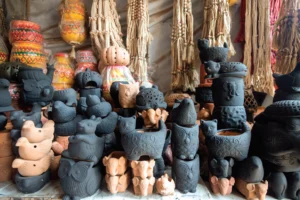
Mrith Shilpo The Art and the Artists
A blurred memory of seeing clay art somewhere on the Dhaka University campus, and visiting places of art, exhibitions, and festivals – are all part of socio-cultural development during our childhood. These products are home decors, visually soothing and adds a warmth in the ambiance. An urban woman would plant trees in clay pots and vases. Sometimes she would use clay tableware to serve food. Growing up, clay came into our life in many ways. Apart from the aesthetics of a clay art piece, the artifacts feel grainy when touched and can be turned into mush and moulded into something new. A younger version of us would want to break them and glue them back together with wet clay. So, finally visiting the shops on DU campus brought back the childhood memories. It took Ceramic Bangladesh authors two visits to learn the insides of the trade at Doyel Chottor Mrith Shilpo (Pottery) shops. We met three of the oldest shop owners there, and through conversation, they shared their experience – the goods and the bads. Abul Kashem was one, a 72-year-old man, who has been in the Mrith Shilpo business for 36 years. The oldest there, the artist designs the products and sometimes moulds the clay as well. His teenage years started with a job in a fishing trawler, and living on the water with all its waves and splashes. What scared him during his voyages on the boat were pirates. He left the job after experiencing one attack and came to Dhaka to look for work. Mr Kashem came across merchants from the Paal community in a festival in Shishu Academy where he was running his tea stall. The merchants came from Savar’s Nobinagar area and sold some of their products to Mr. Kashem or Kashem chacha as an old man is called in this part of the world. “I got the products at a low price from them, because I bought all their leftovers,” he recalled. He sold his f irst lot in the book fair. Kashem chacha now buys the products from Cumilla, Shariatpur, Gazipur, and Tangail. He said the Covid-19 pandemic took a big toll on his business, now it’s better, however. He makes Taka 15,000 a month by selling these products and his family lives a tight life. But he is still happy doing what he loves to do. “All in all the business is not that bad, I mean, we are surviving here. I truck in my products from different parts of the country: Ektara from Kushtia, Lamps from Khulna, Potteries from Cumilla and so on. The Metro Rail Authority supports us now and has given us cards to claim a shop when the paperwork is done.” Digging Deeper The biggest threat to the shop owners here, was that there is no permanent paperwork for them that could potentially protect their shops. The shops are legally said to be temporary and the Metro rail project has decreased the customer count and the buzz in the shops has come down. However, promises from a member of parliament has given them some hope. It was, however, relieving to hear that the students of the university, Charukola, VC of the University are the people behind the success of these stores. “They inspire us,” one of them said. Mohammed Baharuddin, 52 years of age, who runs Siyam Mrith Shilpo and Handicrafts, said he came to Dhaka from Noakhali when he was 12 and now has three children. The family survives on what he earns and they are doing well. “I have been in this business for 30 years. I met the potters from the paal community in a festival,” said Mr. Baharuddin. The teachers and faculties of DU know about the hardships of this business and also value what these shop owners do here. So, he said, 29 of them got together to write a letter to the ministry, pending a reply. “I fear that even though the chances are there, someday someone will come and uproot us from here.”- Mr. Baharuddin said. Mohammed Saiful Islam, 53, owner of Doyel Mrith Shilpo, said “I was born in Rajshahi, in Zafapur, and before coming into this business I sold vegetables. The 1988 flood took away everything from me, so I moved to Dhaka and thought about joining the pottery business. My brother-in-law was in this business from before, and he gave me one of his two shops, and that’s how I got started.” Mr Saiful’s son studies in Dhaka University, and this business has made it possible for him to educate his children. His daughter is also married into a loving home, and currently they live with his mother and wife in a small but warm apartment in the city.
Read More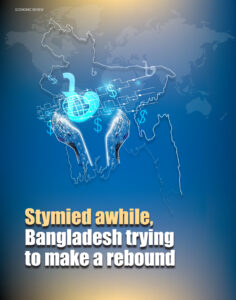
Stymied awhile, Bangladesh trying to make a rebound
Bangladesh, one of the fastest-growing economies globally, had outperformed its South Asian peers and many developed economies until the outbreak of the Covid pandemic in 2020. It has been trying to be back on track after a downturn. Overcoming difficulties, Bangladesh has been able to perform better on some fronts. Needless to say, its macro-economy is standing on a strong footing and relatively stronger. In such a context, finance minister AHM Mustafa Kamal has recently hailed the International Monetary Fund’s (IMF’s) decision to approve a $4.7-billion loan programme to help protect foreign exchange reserves. Bangladesh has to import consumables such as food grains, sugar, edible oil, spices, and raw materials for ceramic industry and other manufacturing sectors, petroleum products, fertilizer, cotton, yarn, chemicals, machineries etc. But prices of essential commodities shot up along with disruptions to the supply chain following the Russian invasion of Ukraine since 24 February 2022. Against this backdrop, trade experts and sector insiders blame the country’s overreliance on imports for its recent f inancial crisis. Poor or no production of raw materials and goods locally is also putting a strain on its foreign exchange reserves. The country’s current account deficit had further widened in October 2022 as imports continued to surge compared to the combined receipts from exports and remittances, analysts said, adding that the main reason behind this surge is the yawning trade gap. According to the central bank data, the current account climbed to $4.5 billion in deficit as of the end of October last year against a deficit of $3.83 billion in 2021. As stated by bankers a few months ago, the pressure on foreign exchange is still there because of the payment obligations against the letters of credit (L/Cs). The global market is currently seeing an unusual movement in the prices of various commodities due to the prolonged Russia-Ukraine war. From fuel to daily essentials, industrial raw materials and machinery, Bangladesh has experienced hyper inflation in its internal market. Figuratively speaking, the fuel price hike is truly fuelling the inflationary pressure. Things have got this bad as the prices of natural gas and electricity along with daily commodities hiked further after the IMF had attached strings with its $4.7-billion loan package. However, businesses believe that the IFM loan will give some relief to the economy, but economic anatomists, experts and businesses warn that the country’s problems will not be solved so easily due to pressure on balance of payments (BoP). Bangladesh has seen sizable growth in exports unlike that in remittance flow but it has seen a major shortage in the supply of foreign currency, especially US dollar, because of the abnormally high growth in imports. There are six sources of foreign exchange earnings for Bangladesh: Exports, Remittance, Foreign Direct Investment, Tourism, Investment income abroad and Foreign loans or grants. But none of the first four are strong, rather in declining mode. Despite huge money laundering abroad, the central bank is yet to open the door for investment there. In this situation, Bangladesh is becoming more dependent on foreign loans for mega development projects. But there are not enough sources of foreign exchange earnings to pay off import bills and foreign debt. Apparently falling into the middle income trap, this crisis may become dire and the exchange rate may have to fall frequently to manage the crisis. As a result, inflation may become more f lagrant. Potential, Yet Troubled Ceramic Industry With increased urbanization and infrastructural development over the years, the ceramic industry is recognised as fast-growing as demand for ceramic products continues to mount. Overcoming many obstacles, more than 70 ceramic (tableware, tiles and sanitaryware) units have been set up in the country for exports and imports substitution with a local and foreign investment of Tk 150 billion. However, an erratic rise in gas prices has become a major problem in this gas-dependent industry. The ceramic sector is a highly potential labour-intensive industry. Since machinery, technology and raw materials (most of which are natural minerals) are not available in the country, the local industry has to compete in both domestic and international markets with the countries, which are rich in raw materials and technology, in selling imported products. As the competing countries have their own machinery, technology and raw materials, they enjoy comparative advantage. It is thus necessary for the home-grown traders to stay buoyant locally and globally by reducing additional expenses. The average cost of production of ceramic products has increased between Tk 5.0 and Tk 7.0 per kilogram. Recently, the government increased the price of natural gas by an average of 150 per cent, and the production of such products has increased by Tk 7.0 to Tk 10 per kilogram for increased gas prices. Balance of Payment Financial experts say macroeconomic shock was not only due only to the war. In fact, the fiscal year 2021-22 witnessed abnormal growth in imports, triggering the highest trade deficit in the country’s history. The balance of payments (BoP) has remained negative in the first half of the current fiscal year, depicting a plethora of challenges Bangladesh is facing in protecting its foreign-currency reserves from depletion as fund outflows exceed inflows. Inflation Experts believe real inflation may be higher than the estimated one, maybe in a range of 12-14 per cent. However, the Bangladesh Bureau of Statistics (BBS) revealed that inflation was estimated at 8.57 per cent in January 2023 while it was 8.71 per cent in December 2022. Inflation will not go down if the dearth of dollars stays. What Bangladesh needs to do is provide the market with adequate supply, otherwise price hikes will continue. Remittance The finance ministry very recently raised the incentive on the remittance exchange rate to 2.5 per cent from the previous 2.0 per cent as money transfers from remitters abroad saw a 21-per cent year-on-year fall in the July-November period. To stop illegal hundi transactions, the government first increased the cash incentive to 2.0 per cent, then to 2.5 per cent. But transactions through hundi
Read More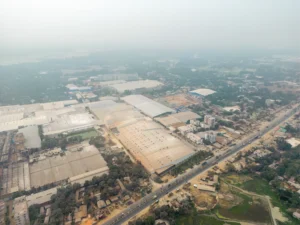
RAK LIKES BEING ITS OWN RIVAL
The ceramics industry in Bangladesh has a huge potential in terms of sustained infrastructural development the country has witnessed over the years. The construction sector has boomed, thanks to growing property development, housing, rehousing, gentrification and urban renewal. Building industry involves so many materials for exterior and interior décor and furnishings. Ceramic is an essential component of interior ornamentation to give a structure, be it a modern house, hotel, motel, cottage or a corporate office, both elegant look and taste.
Read More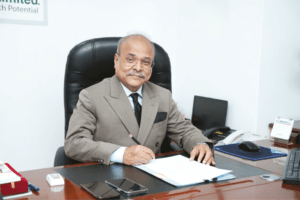
Enhanced engagement between Banks and Ceramic Manufacturers essential : NBL DMD
National Bank Limited (NBL) Deputy Managing Director Hossain Akhtar Chowdhury tells with Ceramic Bangladesh an exclusive interview that the ceramic sector needs a huge investment in the future.
Read More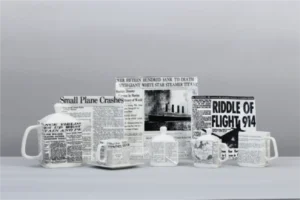
Poems and Pottery
For ceramics, you only get one chance to impress a viewer. The first impression, which is notoriously, the last, has to be a solid ¨I like the design¨ or else no matter how the shape or the glazing is, the same person will not give a second look at it. This is where designers come in. The designer envisions shapes and colours and creates enthralling pieces of ceramic ware. S/he not only comes up with the idea of the product, but also decides on the technical aspects that work behind every output.
Read More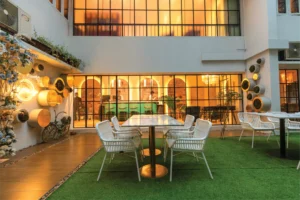
O’Play A playful combination of colours and spaces
Imagine being able to spend a peaceful evening with your loved ones in the middle of Dhaka’s hectic city life, where indoor and outdoor areas flow together to form a kid-friendly environment. And now, in O’play, it’s all come to life.
Read More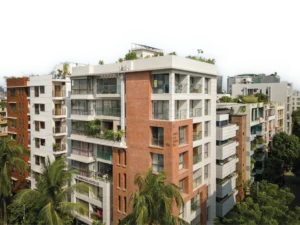
Designing Dreams with Precision
Momen Real Estates Ltd. has been in the real estate market for a while building a successful national company. The company’s founders have been actively involved in property development since 1987. After completing a few projects with business partners, they founded their own private business house, MRS Properties Ltd., as a family-owned private company in 1995. In 2001, the business was renamed as Momen Real Estates Ltd.
Read More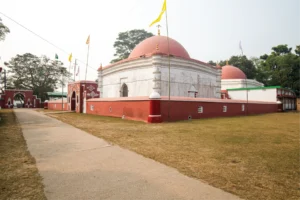
In the Vicinity of Khan Jahan Ali’s Alligators
What does birth inside your psyche when you hear the word mazaar? For many, it might be that gush of inexplicable zany feeling that stems from your experiences related to a mazaar, which is, in other words, a shrine. Common symbolisation of the religious or spiritual sites in the sub-continent especially in Bangladesh, mazaars is indeed an eccentric space. Spaces, which are onerous to describe with words unless you have actually- not only experienced it, but internalised its truest weirdly ethereal essence, putting aside all your biases, particularly religious ones. And each one has its own set of personalities.
Read More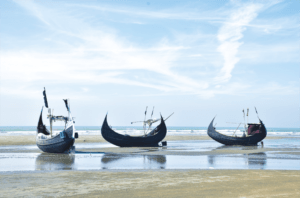
The City of Rejuvenating Souls Longest sandy beach, scenic beauty and roar of the sea make Cox’s Bazar a unique tourists’ destination
One can search for his/her soul by listening to the roar of the sea, as Jamie Lyn Beatty noted, “Jobs fill your pocket but adventures fill your soul.” To escape the monotonous, busy, and chaotic schedule of regular life, one can open and close the eyes taking shelter in a unique sea beach for refreshment of the soil. You can roam around the beach, soaking feet in the seawater and taking fun from beach activities and enjoy seafood and the sunset with friends and family. It’s the city of scenic beauty and peace, called Cox’s Bazar, where you can take a fresh breath of life.
Read More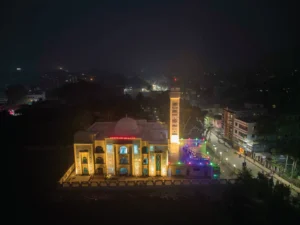
MODEL MOSQUES A Unique Gift to Society Message of peace, culture of harmony to be promoted in society
Mosque is not just a place of worship for Muslims; it’s the common most place of meeting and congregation of the followers of the religion of peace, Islam. It’s not only a holy place; it helps spread the message of love, friendship and brotherhood. Mosque is not merely a place that involves spirituality but also deals with worldly affairs; It’s more than that.
Read More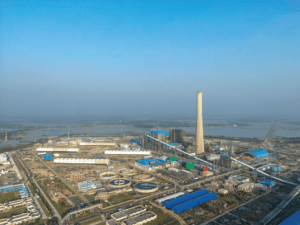
Rampal Coal-fired power plant – A Major Solution to Bangladesh’s Power Crisis
Bangladesh is at an unprecedented crossroads with power crisis and hyper inflation. At a time when major industries at home suffer an acute power crisis, aggravated by the the Russia-Ukraine war following the Covid-19 pandemic, the recent soft inauguration of the first unit of the 1,320-megawatt Maitree Super-Thermal Power Project, also known as Rampal Power Plant, is believed to have been a relief from the energy crisis. Amid the crisis globally, Bangladeshi stakeholders, especially those involved with the multi billion-dollar export industries, manufacturing sector and the financial sector, are now waiting wholeheartedly for commercial operation of the Rampal Power Plant soon to rid the nation of this power predicament. Domestic energy experts and analysts alongside other stakeholders look optimistic with this project and they are of the opinion that the Rampal power project is economically feasible, sustainable and profitable. Terming it one of the cheapest power plants of its kind in the country, they strongly viewed that the plant will get going with the key objective of generating affordable electricity as a resilient and viable solution to the country’s power crisis. Prime Minister Sheikh Hasina and her Indian counterpart Narendra Modi jointly inaugurated the first unit of the coal-fired super-thermal plant through video conferencing on September 6, 2022. The country’s largest power plant is sited on an area of more than 915 acres of land in Rampal upazilla in south-western Bagerhat district under Khulna division, some 272 kilometres away from the capital Dhaka. The high-efficiency, low-emission supercritical plant site sits 14 kilometres north of the world’s largest mangrove forest, the Sundarbans. About the funders The Rampal power project is a joint venture between India’s state-owned National Thermal Power Corporation (NTPC) Ltd and the state-owned Bangladesh Power Development Board (BPDB). The US$ 2.00 billion joint venture company is known as the Bangladesh-India Friendship Power Company Ltd. (BIFPCL) that builds, runs and operates this power facility. The BIFPCL has been co-promoted by the BPDB of Bangladesh and the NTPC Ltd of India with an equal (50:50) equity investment. According to Bangladesh’s power ministry, the joint venture company will enjoy a 15-year tax holiday. In March 2022, Bangladesh boasted the country’s access to 100 per cent electricity, but the national power grid system failed in July and power outage suddenly began to disturb the nation and the socio-economic activities. The Power Division disclosed that the largest amount of what is technically called load-shedding per day stood at 2,000–2,200 MW during the July-September period. But this shortfall peaked in October, taking it to 2,500–3,000 MW. The start of the project BPDB and NTPC entered into a memorandum of understanding (MoU) instrument in 2010 to implementing this mega power plant project in Bagerhat’s Rampal upazilla that has seen an upturn in economic activities centring this power plant in recent years. An estimated 80 per cent of the project costs will be covered through a long-term loan from the EXIM Bank of India. As the construction of the facility was ongoing, the February 2021 was set as the first deadline for commissioning the power plant’s first unit while the second unit by August 2021, according to competent sources. However, the deadline was extended several times for a number of reasons, including emergence of the Covid-19 pandemic in 2020. Use of coal and technology A coal-fired plant produces electricity by burning coal in a boiler to produce steam. Then the steam, produced under tremendous pressure, flows into a turbine, which spins a generator to create electricity. The steam is then cooled, condensed back into water and returned to the boiler in order to start the process over. Supercritical combustion technology and sophisticated equipment are being used to lessen environmental hazards and thus make this project safe and eco-friendly. Some 6,500 cubic meters of water will be required per hour and minimum 10,000 tonnes of coal will be required to produce 1300 MW electricity every day. The ash content of this imported Indonesian coal is 8-10%. The height of chimney is 275 meters, equivalent to 90 storied building. In its initial stages, there was a strong debate on the red-hot issue of installing this coal-fuelled thermal power facility near a forest and some termed it suicidal with apprehensions of environmental disaster for the forest, which is home to thousands of wild species, flora and fauna. Some environmentalists made a mass call for scrapping of the project. The government, however, showed its determination to go ahead with the project. State energy experts said the project would not be harmful as its supercritical technology will minimise ecological hazards. Eco-warriors demanded that environmental concerns must be given precedence over commercial interest. They called for doing an environmental impact assessment and feasibility study before embarking on the project that may have anthropogenic impacts on environment, including effects on biophysical environments, biodiversity and other resources, let alone emissions of carbon dioxide and other pollutants as well as particulates. The joint venture company has already planted 116,000 different kinds of trees around the project site while the Centre for Environmental and Geographic Information Services (CEGIS) is monitoring the parameters related to the environment of the Rampal site and its adjacent areas, including Khulna and the Sundarbans. Employment opportunities The Rampal power plant project has opened up a job generation opportunity for local people and those affected for construction of this project’s infrastructure and during its operational period. As this region has long remained underdeveloped, opportunity of trade and employment was very limited. The power plant project has come as a relief to some extent. Alongside direct employment in the BIFPCL, there will be a huge opportunity to the locals for business and other indirect employment prospects. Moreover, this industry will usher in economic growth in Rampal in particular and the country in general, creating many downstream and/or related industries. Supply chain The supply chain of coal in all coal-fired power plants, including the Rampal power plant, is the biggest challenge. Technically unique in the plant is the supply chain issue. The Rampal
Read More
A Bridge From Transport Connectivity to Economic Corridor
The opening of the Padma Bridge has created the scope for a new wave of investment in the country’s south and south-western region. The region’s easier road communications with the rest of the country has brought fresh momentum for business growth. New industries are being planned and tourism sector entrepreneurs are hoping for a business boom surrounding Kuakata sea beach and the Sundarbans. Thus, the bridge has offered a new economic corridor in the making. Economists and business leaders believe with remarkable improvement in road network though the bridge trade and business in the region would expand rapidly, raising the people’s income, creating jobs and eradicating poverty. The Padma Bridge is also expected to bring about a massive change in the entire economy. The Ministry of Road Transport and Bridges believes the economic corridor surrounding the Padma Bridge and its adjacent areas would increase the country’s GDP (gross domestic product) growth by 1.27 percentage point. The southern region’s economy will grow at a higher pace. Predicting a higher GDP growth for the Padma Bridge, the Asian Development Bank (ADB) said the rate of poverty reduction will be accelerated by 0.84 per cent every year. However, as many as 53 upazilas out of 133 upazilas in 21 districts on the south-western side of the bridge are of high concentration of poverty, according to Bangladesh Bureau of Statistics (BBS) poverty map. Another 42 upazilas are in the medium poverty risk category and 38 in low poverty risk category. Economist and chairman of Palli Karma-Sahayak Foundation (PKSF) Quazi Kholiquzzaman Ahmad said small entrepreneurs are more enthusiastic about the Padma Bridge and they should be provided with opportunity to make investment and various supports such as gas and electricity supply should be ensured at affordable costs. He observed that the bridge has jointed the southern belt with the rest of the country. The bridge will result in smooth transportation of farm produces from the region, according to Implementation, Monitoring and Evaluation Division (IMED) of the Ministry of Planning. It said farmers’ income will increase 15-20 per cent since direct connections between farmers and the market forces will be established. Transport sector insiders added the time for transportation of goods from Benapole to Dhaka would come down to 6-7 hours from 24-36 hours. The southern region was attractive for low-cost transport of goods by river routes but longer time and uncertainity in ferry services earlier discouraged the entrepreneurs from taking business initiatives. The Padma Bridge has now created the scope for big companies to come forward with investment projects in the region. The companies that have shown interest in setting up factories in the region include Sheltech, Pran-RFL, TK Group, Envoy Group, Hameem Group, Mir Group, Karim Group and Opsonin Pharma. Bangladesh Economic Zones Authority (BEZA) has unveiled a master plan on Padma Bridge that would directly benefit Dhaka, Khulna and Barisal divisions. It is taking steps to establish 17 new Economic Zones (EZ) in 21 districts of the three divisions. In the 1960s, Khulna became one of the few industrial hubs of the country but it has subsequently lost the glory. However, after the launch of Padma Bridge, Khulna is drawing attention of the investors. Abdus Salam Murshedi MP, president of Bangladesh Exporters’ Association (BEA) and former president of BGMEA said, “I definitely want to use this opportunity. I want to set up a new garment factory in Khulna. I also encourage others to invest in the region.” In fact in 2019, Sheltech Group established the country’s largest ceramics industry in the southern district of Bhola. The company invested more than Tk 7 billion taking advantage of local natural gas and cheap land with the hope of opening of the Padma Bridge in 2022. Now, Sheltech is also planning to set up a non-denim garment factory in Bhola, said Engineer Kutubuddin Ahmed, chairman of the group. “We are now looking for land to set up a ready-made garment industry in Barisal. After the inauguration of the Padma Bridge, investing in the south is the most promising one,” he added. Chini Tikri The Inaugural Murals By 15,000 Ceramic Plates One of the two spectacular installations at each end of the Padma Bridge is its inaugural mural – which has been constructed by using 15,000 ceramic plates. The portraits of Father of the Nation Bangabandhu Sheikh Mujibur Rahman and Prime Minister Sheikh Hasina have been made by breaking these 37 coloured plates into ‘Chini Tikri’. One was the dreamer of Padma Bridge and the another one is its implementer. As the ceramic plate is broken and made, it starts to sparkle when the sun shines on it. These ceramic plates are hammered and broken into about half a million pieces. Then different colours of the pieces are arranged one after one to create two beautiful portraits. Designed by architect Fazle Karim Shishir of Drishik, the two murals were created by artists Ashraful Alam Riaz and Didar Ul Alam. Both are graduated from the Fine Arts Institute of Dhaka University. The 90-feet-long and 45-feet-high mural at the Mawa end was done by Didar Ul Alam and the 72-feet-long and 36-feet-high mural at the Janzeera end was done by Ashraful Alam Riaz. They told Ceramic Bangladesh that at first the designer thought of making this mural with ceramic tiles, but later they chose ceramic plates of the highest quality considering the bright colour and durability. A total of 15,000 plates of 37 types of colours have been used here. Among them, 7 types of coloured plates are used to display black and white portrait of Bangabandhu. And 30 types of coloured plates are used to produce colourful portrait of Prime Minister Sheikh Hasina. All of these ceramic plates are customised. Because such a variety of colour plates are not usually produced by ceramic companies. Artisan Ceramics made 8,000 plates used in the Mawa end mural and Monno Ceramics made 7,000 plates used in the Janzeera end mural. This construction work was completed in two months by two
Read More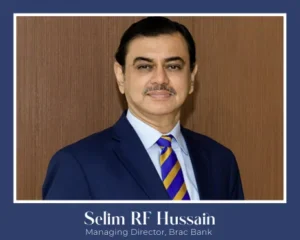
Ceramic industry has high potential to flourish: Selim RF Hussain
In an Interview with Ceramic Bangladesh, the Brac Bank MD & CEO says the growing industry can help fulfill Bangladesh’s sustainable development goals. Selim RF Hussain is a Bangladeshi career banker with over 35 years of diversified local and international banking experience. He is currently heading Brac Bank Limited, one of the country’s leading full service commercial banks, with an asset base of approximately US$ 5 billion, and one that is known for its particular focus on the SME segment. Mr. Selim joined Brac Bank in November 2015, and within a relatively short period, has led the bank to the top tier of the 60 odd scheduled banks in Bangladesh. He has been elected Chairman of the Association of Bankers, Bangladesh (ABB) for the period 2022-23. He is a member of the Governing Board of the SME Foundation, an apex semi-government institution spearheading SME development. He is a member of the Governing Board of the Financial Alliance for Women, an international network of financial institutions dedicated to championing the female economy. Mr. Selim is also on the Board of the Global Alliance for Banking on Values (GABV), an international network of banks that use finance to serve people and the planet. Mr. Selim also represents Brac Bank in multiple Brac Bank subsidiaries through board directorship – at Brac EPL Investments Ltd, Brac EPL Stock Brokerage Ltd, Brac Saajan Exchange Ltd and Brac IT Services Limited. He is the Chairman of the Board Audit Committee of bKash, Bangladesh’s largest mobile financial service company, and also the Vice-Chairman of the Industrial Infrastructure Development Finance Company (IIDFC), a non-banking financial institute. Ceramic Bangladesh (CB): Would you please tell us something about Brac Bank and its inception? Selim RF Hussain: Brac Bank started its journey in 2001 as a private commercial bank focussing on small and medium enterprises (SMEs). Our visionary founder – Sir Fazle Hasan Abed KCMG established the bank to facilitate easy access to formal f inancing for the grassroots SME entrepreneurs who are usually left out in the traditional banking system. The bank has pioneered small-ticket unsecured loans to bring the unbanked missing middle under the banking umbrella. Over the years, it has emerged as the country’s largest financier of collateral-free SME loans. With a dynamic network of 187 branches, 456 SME unit offices, 373 ATMs, and 800 Agent Banking outlets across the country, Brac Bank offers seamless banking services for Retail, SME, and Corporate segments serving 1.3 million customers. The majority shareholding of the bank belongs to Brac, the largest non-government organisation in the world. CB: What has actually enabled the bank to rise to the top? Selim Hussain: Brac Bank is a different bank altogether in the banking sector. It is the only bank in the country, with most shareholdings belonging to institutional investors. Its Board is comprised of independent directors who are expert professionals in their f ield. This organisational structure gives the bank a solid foundation to become a standard bearer in governance, transparency, ethics and compliance. Brac Bank’s superior performance indicators in the Bangladesh Banking Sector are reflected in the highest market capitalisation, the highest international investor shareholding in the local banking sector, and the highest bank credit.rating of all banks in the country from both international rating agencies, S&P and Moody’s. The bank leads the local banking industry in nearly all financial metrics and is a benchmark for corporate governance and values-based banking. CB: How is Brac Bank different from other banks? Selim Hussain: Brac Bank focusses on SME banking. It provides small-ticket and collateral-free loans to SME entrepreneurs, an attribute that sets the bank apart in Bangladeshi banking sector. The bank plays a vital role in bringing the unbanked missing middle under the banking system. With its SME Banking, Agent Banking and Women Banking propositions, Brac Bank contributes significantly to financial inclusion in the country. CB: What are the services you provide to your premium customers? Selim Hussain: We bring exclusive perks to our high-value customer segment. Premium Banking customers enjoy a host of benefits and privileges, including Dedicated Relationship Managers, Luxurious Lounges, One-Stop Service, Preferential Fees and Charges, Doorstep Service, Lifestyle Benefits, Exclusive Card Privileges, Customer Value Propositions, Priority at Call Centre Service. The customers are entitled to exclusive deals on shopping, dining, entertainment, healthcare, and special Infinite, Signature and Platinum credit card special offers. CB: What facilities are you providing to the local manufacturing industries? Selim Hussain: In its 21 years of operations, Brac Bank contributed significantly to industrialisation in Bangladesh. Our Corporate Banking provides Working Capital, Capital Machinery, Project Financing and Lease Financing, Cash Management and Transaction Banking for large and emerging corporate organisations. Under SME Banking, the bank extends Unsecured Loan, Secured Loan, Women Entrepreneur Loan, and Secured Convenience Loan, leading to small-scale industries’ growth. CB: How do you see yourself as a partner in the growth of Bangladesh’s ceramic industry? Selim Hussain: The ceramic industry has high growth potential. Apart from meeting domestic demand, our ceramic manufacturers also export and earn precious foreign currency. This potential has led to renowned corporates making big investments in this manufacturing sector. Brac Bank provides banking and financing support to large-scale ceramic industries and small-scale ventures with customised solutions. CB: Do you have plans for more investments and providing more facilities to the ceramic industry? Selim Hussain: Being an SME-focussed bank, Brac Bank patronises grassroots entrepreneurs. We have already financed many small-scale ceramic industries and witnessed remarkable success. For example, our finance to Clay Image has created many jobs, especially for women artisans. We know that the growing ceramic industry can help fulfill sustainable development goals of No Poverty, Decent Work and Economic Growth, Industry, Innovation and Infrastructure. So, we stand for this vibrant and potential sector, helping it to flourish further. CB: Where would Brac Bank be in 10 years down the line? Selim Hussain: With modern technology, the banking sector is changing fast. We reckon, in a decade’s time, banking infrastructure will see radical change. The country will go cashless.
Read More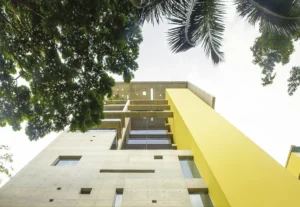
Sculpting Skyline: Unwilling contribution to the concrete jungle
Going down one of the most elite avenues of Dhaka city, the count of ones and twos will be less when it comes to the display of architecture by Mustapha Khalid Palash. Mr Palash, principal architect, and his team Vistaara Architects (Pvt.) Limited, have contributed to the new city skyline with significantly designed commercial buildings that are money-making machines for the economy. While passing by, young architects admire those works – this is quite an accomplishment for an architect, right? However, architect Mustapha Khalid Palash does not have a similar feeling. He is dissatisfied with the replacement of Dhaka’s natural landscape with man-made infrastructure, himself being a part of the contribution to the concrete ‘slum’ with added aesthetics. The nostalgic mind of this multi-talented person wanders around the city he was born in. He misses the vista of green and the landscape of Dhaka. All that visual relief has been lost in the name of fast-paced city development. The young Palash, born in the early 1960s on Baily Road, Dhaka, and later shifted to Gulshan in the mid-1990s, has a vivid scenario of life then: the environment, the lush and green of the city, and its cooling effect on the temperature in the good old days. The boom in population with unresolved planning about migration for a better lifestyle in the city is one of the main reasons for the overloaded condition in terms of size and expansion. Yet the lack of road networks and the commute system does not help much with stretching the city further north and south. Mr Palash believes decentralisation can be a solution to making these struggles better. The idea of scaling down architecture while maintaining its grandness is an old practice in this city. From the Mughal period to modern works by Louis I. Kahn and Muzharul Islam, but later it was lost somewhere in the city lines. A breathing space for the building and a gazing distance for the people are needed to observe large-scale architecture. Examples in Dhaka, as such, are the Mughal forts and palaces, the Sangshad Bhaban (parliament house), and a few others. As lifestyle developed, affordability increased. An unorganised building development started as people wanted to buy apartments over land due to a hike in prices. Hence in the last 20 years, the city became a concrete jungle from a greener jungle. Architect Palash brought back this practice in his design again. One can subconsciously understand the difference between standing in front of the Bashundhara Shopping Complex in the Panthapath area of the city, and Rangs Babylonia in Bir Uttam Mir Shawkat Sarak, on the Tejgaon-Gulshan link road. The inviting space in front of these buildings, on the street level, is the visual relief one needs while perceiving. Commercial building owners are keener towards using their well-known reputation in terms of selling spaces, and with reputation comes along building functionality and safety measures. “The architecture we design is not only for visual aesthetics that happens by default. We focus on delivery and timeline because a building is not just a space, it has a significant relation to the economy. Architecture is not just art. The basic system involves proper functional planning and the utmost safety measures for fire and structural factors. To me, architecture is like a tailored ‘coat’, where the inner lining of clothes has to be the most comfortable for the user, and the outer material has to be visually pleasing to the observer. The outer sight can differ from tastes, but the internal functionality has to be accurate,” explained Mr Palash. Architecture is a partial contributor to the destruction of this city, glorifying architecture is a cliché. He does not just design commercial buildings, but apartment buildings as well. His most well-known architecture though being on the prefaces of avenues like Gulshan is mentioned often. In all these years, he never designed a single-unit family residence, deliberately. He has done notable work in Chattogram and is currently working on a mass development project in Rajshahi. “The neo-modernism that our culture and society have gotten into has changed the social morphology to a different extent. The presence of a mobile phone is a distraction in relationships that has a social impact and even a lifestyle impact. Nowadays, apartment projects have ‘his and hers’ separate rooms, and the family living space culture is almost abandoned,” added the architect. Gulshan is already a heat island because of the excessive use of concrete, air conditioning and generator systems to support them. In addition to that the buildings are east or west facing on the avenue. Mr Palash and his team designed screening to reduce the internal effect of temperature. A few buildings even use photovoltaic glasses on the façade to produce renewable energy. “I have a hidden geometry while designing my buildings. I believe in signature, a handwritten signature, not rubber stamping.” “I have a hidden geometry while designing my buildings. I believe in signature, a handwritten signature, not rubber stamping. When I follow my geometric style, the buildings look like they are from the same house, but they are different in variation with visual expression” he mentioned. “The areas like Gulshan, Banani, Baridhara, Bashundhara R/A, Dhanmondi, and Uttara cannot be an example. The population density is much less there, and the distribution of basic commodities is also sufficient. The rest of the areas which are more organic, unsupervised, and ‘unorganised-ly’ growing are more in threat and should be taken care of” he added. Born to an artist couple, Mr Palash had exposure to art and culture since childhood. His confidence was developed in a very nurturing way by his parents, which eventually made his path of journey easy. “When I was 6, I used to assist my father with his commissioned works. If he had any works with letters, he used to draw the outline and ask me to fill it up in
Read More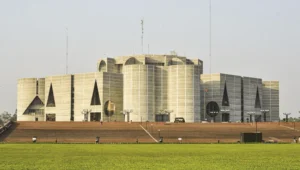
How National Budget can contribute to Ceramic Sector Growth
The current fiscal year’s national budget, passed by parliament on June 30, eyes taming inflation amid other major challenges to an economic rebound from the Covid-19 pandemic and recovery from impacts of Russia-Ukraine war. The annual outlay has finally stood at Tk 6,78,064 crore, 15.2 per cent of the gross domestic product (GDP) and of it, Tk 4,31,998 crore has been allocated for management cost and other non-development expenses and Tk 2,46,066 crore for annual development programme (ADP), which is also called development budget. The size of the budget for the fiscal year 2021-22 was Tk 6,03,081 crore. In the revised budget, it was brought down to Tk 5,93,500 crore. The revenue income in the new budget has been projected to be Tk 4,33,000 crore. The target of the National Board of Revenue (NBR) has been set at Tk 3,70,000 crore, non-NBR tax at Tk 18,000 crore, and non-tax revenue at Tk 45,000 crore. Foreign grant receipt is projected at Tk 3,271 crore. The budget deficit is Tk 2,45,064 crore (without foreign grant) which is 5.5 percent of GDP. To meet the deficit, Tk 2,41,793 crore will come from local and foreign loans, Tk 1,06,334 crore will be borrowed from local banks and the target of foreign loan is Tk 95,458 crore. Tk 40,000 crore will come from non-bank sources. Also, a projected amount of Tk 35,000 crore will come from savings certificates. An amount of Tk 17,000 crore will be spent on foreign loan repayment. The GDP growth target has been set at 7.5 per cent and inflation projected at 5.6 per cent. The finance minister acknowledged inflation as a concern. The government is committed towards controlling inflation by preventing inconsistencies between supply and demand. However, inflation has risen recently due to external and some internal factors. The finance minister, in his budget speech, said the global causes of inflation include rising inflation among trade partners, rising fuel prices, depreciating currency, disruption of the global supply chain, and the Russia-Ukraine war. But no visible adequate measures have been taken in the budget to control inflation. Deficit budgets are driving inflation. “Certainly, we shall be able to transform Bangladesh into a hunger and poverty-free society by achieving SDG (Sustainable Development Goals) in 2030, a higher-middle income country by 2031, a knowledge-based, happy and prosperous developed country by 2041 and a secured delta by 2100,” said Mustafa Kamal in budget session of parliament. Middle class brought under tax net The finance minister said the country’s middle or upper-class population is about 40 million, most of whom are not paying income tax. Efforts are being made to bring taxable people under the tax net by taking necessary steps to prevent tax evasion. As against a total TIN (taxpayers’ identification number) holder of 7 million, only three million are income taxpayers. The number of TIN holders will be raised to 10 million this year. Return submission will be made compulsory with some exceptions. The income tax exemption limit is Tk 0.3 million a year. “Certainly, we shall be able to transform Bangladesh into a hunger and poverty-free society by achieving SDGs in 2030, a higher-middle income country by 2031, a knowledge-based, happy and prosperous developed country by 2041 and a secured delta by 2100.” Huge trade deficit According to statistics from Bangladesh Bank, the nation’s trade deficit in goods was US$33 billion for the last fiscal year 2021-22 when the merchandise trade deficit was $33.25 billion. The current account deficit crossed $18.5 billion compared to $23.78 billion in the year before (FY21). Amid a huge balance of payments deficit, economists emphasised limiting imports and raising remittances. Recent central bank data show a significant increase in imports has made the trade gap bigger, putting pressure on the foreign exchange reserve and exchange rates. Based on the “free on board” (fob) price, the value of goods imported in FY22 was $82.49 billion, as against only $60.68 billion in FY21. Consequently, imports grew by almost 36% in FY22. Income from exporting goods (on a free-on-board basis) grew by 33.45% and reached $49.24 billion in FY22. In FY21, the sum was $36.90 billion. The overall balance deficit totaled $5.38 billion by the end of FY22 whereas there was a surplus of $9.27 billion in FY2020-21. The country received $21.03 billion in remittances in FY22, showing a 15.12 per cent decline over the previous fiscal. The central bank sold more than $1 billion to banks in July when the country received $2.09 billion in remittances, which was 11.76% higher than the amount received in July last year. Bangladesh’s foreign exchange reserves fell below $40 billion for the first time in two years recently. This was due to higher import costs and a weaker Taka against US dollars. The situation occurred due to the dollar’s rise over the past few months, when the central bank took some steps to discourage imports. Bangladesh Bank also encouraged Bangladeshis living and working abroad to send remittances. Ceramic sector needs budgetary support Mr. Mohammad Shirajul Islam Mollah, President of Bangladesh Ceramic Manufacturers and Exporters Association (BCMEA), in his budget reaction, demanded complete withdrawal of 15% and 10% supplementary duties imposed on domestic tiles and sanitary products respectively. He said if this is done, the price will decrease in the domestic market and the level of its use will increase. As a result, the government revenue will not decrease, rather increase overall. Commenting that ceramic tiles and sanitary products are no longer a luxury item, he said, they are considered essential construction materials. These are popular as eco-friendly products as they are helpful in creating a healthy environment. Ceramic is playing a helpful role in implementing the government’s ‘Sanitation for All’ programme. He said the ceramic sector is a labour-intensive industry with great potential. Machinery, technology and raw materials are not available in the country, so they have to compete with rich countries in procuring raw materials and technology as well as selling products. If a partial bond facility is provided along with
Read More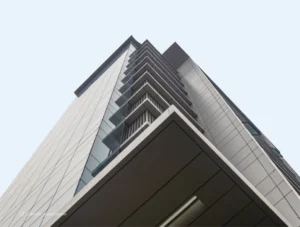
Business ethics & integrity are key to growing a company: Tanvir Ahmed
Mr. Tanvir Ahmed is the Managing Director of Sheltech Group. He is also the Director of Envoy Group, which includes textiles and garments and the first denim mill in the world to obtain a LEED Platinum certification. Envoy Textiles has recently been awarded the National Export Trophy (Gold). In the year 2014, Mr. Tanvir Ahmed was recognised, by the government of Bangladesh, as the youngest CIP at the age of 29 for his contribution to the national economy. He holds a Master’s degree from Cardiff University, the UK, and a Bachelor of Arts degree (with Honours) from Kingston University, the UK. He also obtained a Diploma from the London School of Economics (LSE). His area of expertise is business management, administration and finance and his entrepreneurship involve real estate, textiles and garments, hospitality service, financial trading, aviation and ceramics. He is currently an Executive Committee member of Bangladesh Employers’ Federation. He is also a Director at the India-Bangladesh Chamber of Commerce and Industry (IBCCI). He shared his present business ventures and future plans during an exclusive interview with Ceramic Bangladesh recently. Sheltech is a trusted name in the country’s real estate sector since 1988. The company has delivered more than 3,800 apartments in about 200 projects in various locations in Dhaka city. For quality management, it has obtained “ISO 9001:2015” as the first Bangladeshi real estate company. Sheltech follows the Bangladesh National Building Code (BNBC) and its projects are playing a vital role in consistent growth overcoming barriers. Designs are prepared following BNBC and all its projects are duly approved. It ensures international safety and quality standards in construction. The company maintains on-time handover of projects and after-sales care. No legal disputes can be found in its projects and that help a hassle-free registration. It believes in continuous innovation and improvement in products and services. “In most of the cases it is a lifetime investment for the clients. So, clients search for a company that is dependable. Timely delivery of real estate projects within budget and to the level of the quality standards specified by the client is an index of successful project delivery for real estate developers. Sheltech understands the scenario and work with full enthusiasm to ensure the clients’ needs,” said Mr. Tanvir Ahmed. However, it is a difficult process for the developer, as many critical issues need to be addressed to complete the project on time, which can only be accomplished by a well-structured and efficiently managed company, he added. On the overall real estate development in Bangladesh and the future of this industry, Mr. Tanvir said, “While the RMG sector and a few more industries are keeping this country’s economy afloat, there is one industry that has continued to grow surprisingly well – The Real Estate. It is one of the fastest-growing sectors in the country.” “Sheltech understands the scenario and work with full enthusiasm to ensure the clients’ needs. It has obtained ‘ISO 9001:2015’ as the first Bangladeshi real estate company” “The sector has seen tremendous growth in recent years, with the establishment of a number of new real estate companies and development of new projects. The present demand and trend for housing in the country allows us to think the future growth of this industry is very promising,” he said. The birth and making of Sheltech were led by Mr. Tanvir Ahmed’s f irst generation. He is the one from the second generation who is now following his ancestor’s footprint. Mr. Tanvir Ahmed started serving the hospitality industry through “Platinum Hotels by Sheltech” in 2008. He got involved with the real estate industry since 2010. Sheltech is always concern to reduce environmental impact of construction. It has set a standard for an environment-friendly construction process. Design of structural elements concerning critical combinations of gravity, seismic and other loads is thoroughly checked. “We maintain strict supervision by site engineers and the quality control team to ensure construction is according to design. We ensure shore protection during foundation. We provide a safe and organised construction environment through safe pedestrian movement, a soundless, dust and garbage-free construction site while ensuring labour safety,” said Mr Tanvir. From land acquisition to after-sales service, Sheltech provides one-stop solutions through architectural and structural design, construction management, interior solution, registration process, resolving legal issues, arrangement of utility connections, customer service after delivery and secondary market dealing through buying, selling and renting. Unlike other industries, the real estate industry has to overcome various challenges. It is a key engine of economic growth since it has a large multiplier effect on other sectors as well. It creates opportunities for its linkage businesses. Focusing on the growth, Mr. Tanvir said, “The real estate industry plays an increasingly significant role in the national economy, accounting for approximately 8% of GDP on average, and along with its 269 associated linkage industries, contributing about 12-14% to GDP. The worldwide lockdown imposed to control the spread of Covid-19 led to a global financial crisis. Bangladesh has also been affected economically. However, the pandemic effects are getting reduced and almost all business sectors are making a rebound.” “Despite the pandemic challenges, the real estate market recovered quite well in 2021. One of the main challenges for real estate developers is the increase in prices of construction materials. Apartment registration cost in Bangladesh is also quite high which becomes a burden for buyers and makes it more difficult to purchase apartments. Besides the home loan process and interest rate are an issue of concern for the sector,” Mr. Tanvir added. The trend and character of real estate development are very significant and this is a positive sign for development of the country. Nowadays housing supply largely depends on private developers. There are some limitations to operate a real estate business in Bangladesh. Sheltech always ensures development of a culture that provides simplicity in work and nurtures growth among the employees. Regarding the company’s culture and collaboration with others, Mr. Tanvir said, “We have an open-door policy among employees and their
Read More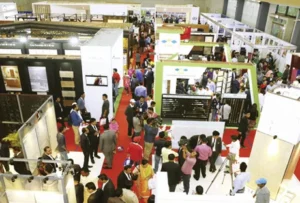
A Snapshot of International Ceramic Expos Worldwide
International Ceramic exhibitions are held worldwide for their distinctive ability to bring industrialists and technologists from different corners of the world into single platforms to serve the common purpose of promoting trade. The world’s most advanced technological innovations, equipment, raw materials, dynamic use of advanced ceramics and the best practices available are showcased in these international ceramic exhibitions. These exhibitions often additionally host B2B (business-to-business) meetings, seminars and conferences which result in strengthening professional networks and create further opportunities in establishing footholds in different parts of the world. Tecna – The Future of Surfaces, is an international marketplace organized at the heart of one of the most creative, innovative and technologically sound countries for surfaces, Italy. The exhibition offers the best innovations in aesthetics and processes for the sector every two years. Tecna, the international exhibition of technologies and surface supplies, is scheduled to be held at the Rimini Expo Centre, Italy, on September 27 to 30, 2022. The event is organized by IEG (Italian Exhibition Group) in collaboration with ACIMAC (Association of Italian Manufacturers of Machinery and Equipment for Ceramics). Today, numerous ceramic exhibitions are held around the world, which help display the latest materials and technologies and provide face-to-face networking and business opportunities to discuss the future challenges and opportunities facing the global ceramics industry. Tecna – The Future of Surfaces, is an international marketplace organized at the heart of one of the most creative, innovative and technologically sound countries for surfaces, Italy. The exhibition offers the best innovations in aesthetics and processes for the sector every two years. Tecna, the international exhibition of technologies and surface supplies, is scheduled to be held at the Rimini Expo Centre, Italy, on September 27 to 30, 2022. The event is organized by IEG (Italian Exhibition Group) in collaboration with ACIMAC (Association of Italian Manufacturers of Machinery and Equipment for Ceramics). Tecna represents a global meeting point for technology and innovation for the production of all types of surfaces and materials, from the most traditional to the most innovative ones. The exhibitors get the opportunity to meet national and international buyers from all sectors in the surface industry. Most participants are from Asia, Middle East, Africa, the Mediterranean Area, Europe and Latin America. CERSAIE – International Exhibition of Ceramic Tile and Bathroom Furnishings, is the foremost international event for designers of ceramic and other surface coverings and bathroom furnishings. The exhibition is due to be held at Bologna Exhibition Centre, Bologna, Italy, from September 26 to 30, 2022. The expo becomes a dynamic hub for architects or designers, retailers, contractors, installers, interior designers and even people looking to renovate homes or offices. One will get the chance to discover design ideas, architecture conferences, training events and meetings with production companies and discover the new offerings proposed by the market. The Foshan Tanzhou Ceramics Exhibition is due to be held from November 16 to 20, 2022 at Foshan Tanzhou International Convention and Exhibition Centre. The exhibition is organized by Foshan Taolian Technology Development Co. Ltd. The 5-day event will host over 400 exhibitors who will showcase the latest products, processes, and application designs. 20 heavy events will focus on the frontier hot topics of the industry. ASEAN Ceramics is Southeast Asia’s leading international exhibition of machinery, technology, raw materials and advanced ceramics. The event takes place in Thailand and Vietnam on alternate years and is organised by MMI Asia Pte Ltd, a full subsidiary of Messe Munchen GMBH (MMG). ASEAN Ceramics 2022 will take place in Thailand at IMPACT Exhibition and Convention Centre, Bangkok from November 30 to December 02, 2022. The exhibition will also host a three-day conference that would include a high-level plenary sessions and feature a series of presentations and panel discussions on topics ranging from new research on global innovations trends to their impacts on the global ceramic industry by globally renowned speakers. ASEAN Ceramics attracts over 4,000 trade visitors from close to 50 countries. The top visiting countries include China, India, Vietnam, Malaysia, Japan and Indonesia. The Highly Functional Material Week is organized by RX Japan Ltd. and has two shows, one held in Tokyo and the other in Osaka. The Tokyo show will be held from December 7 to 9, 2022 at Makuhari Messe and the show in Osaka will be held from May 17 to 19, 2023 at INTEX Osaka, Japan. The material week focuses on a range of matters, from film technology, metal, plastic, adhesion and bonding, paint and coating and also highly functional ceramics. The show will feature innovative structural materials, sustainable materials, materials for antibacterial and antiviral and materials for next-generation battery manufacturing. Indian Ceramic Asia, the 17th Edition of the state-of-the-art annual trade fair, is scheduled to be held at the Helipad Exhibition Centre, Gandhi Nagar, India, from February 15 to 17, 2023. The trade fair is jointly organized by Messe Munchen India, a subsidiary of Messe München GmbH and Unifair Exhibition Service Co., Ltd. The Indian ceramic industry has the potential to become one of the largest producers of ceramics in the world and is looking to double its turnover by 2024. This trade fair and conference for the ceramic and brick industry offers a curated platform for all leading companies to showcase their latest machinery, high-quality raw materials, analysis and laboratory equipment, storage equipment, material handling and much more. This presents the manufacturers or suppliers of raw materials or ceramic production equipment with a platform to meet new partners and clients and help their businesses grow in India. The 8th Edition of Ceramics Expo 2023, co-located with Thermal Management Expo is to be held at Suburban Collection Showplace, Novi, Michigan, USA, from May 1 to 3, 2023. The Ceramics Expo brings together engineers, decision-makers, end-user OEMs and buyers from across the globe to source new materials, components and technologies, network with like-minded professionals, and discuss the challenges and opportunities in the technical ceramics industry. The expo will also host a conference where industry leaders will share their
Read More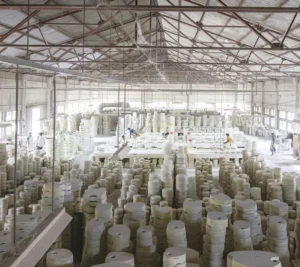
Shinepukur Ceramics Export Giant In Tableware Market
Becoming the number one is a challenge, and retaining that position brings about a bundle of never-ending hurdles that very few companies can tackle. Shinepukur Ceramics Limited (SCL) has been in the top position in the tableware segment, in terms of revenue and market share, for the past couple of years. Export is Shinepukur’s strong suit – It has been exporting high-grade porcelain (since April 1999) and bone china (since November, 1999) tableware and has established dominance in the export market. The company’s CEO says quality is the core reason why SCL products are in such demand abroad. It exports products the USA, Canada, the UK, Germany, France, Italy, Japan, Sweden, Norway, Denmark, Finland, Spain, Poland, Mexico, Brazil, Chile, UAE, Australia, New Zealand, Turkey, India, Egypt and Russia. Shinepukur’s “compliant factory” has been audited multiple times by SMETA, BSCI, GMP, and CTPAT, and has received an ISO 9001:2015 certification. Its tableware complies with the Norwegian Standard, California State Prop 65 Standard, and the EU Standard. Dhaka) shelters the SCL, a member company of Beximco Group. Registered in 1997, the company’s plants were commissioned in 1998, and started production in 1999. BEXIMCO Industrial Park (near Dhaka Export Processing Zone, 40 kilometres off Shinepukur is capable of making surreal tabletops with high durability for airlines, hotel ware, and other industrial usage. The versatility of the production houses allows the company to reach out to all demographics of ceramic users all over the world. The glaze is free from lead and cadmium free and of course health hazards, and its designs are demandingly likeable.ecoming the number one is a challenge, and retaining that position brings about a bundle of never-ending hurdles that very few companies can tackle. Shinepukur Ceramics Limited (SCL) has been in the top position in the tableware segment, in terms of revenue and market share, for the past couple of years. Export is Shinepukur’s strong suit – It has been exporting high-grade porcelain (since April 1999) and bone china (since November, 1999) tableware and has established dominance in the export market. The company’s CEO says quality is the core reason why SCL products are in such demand abroad. It exports products the USA, Canada, the UK, Germany, France, Italy, Japan, Sweden, Norway, Denmark, Finland, Spain, Poland, Mexico, Brazil, Chile, UAE, Australia, New Zealand, Turkey, India, Egypt and Russia. Shinepukur’s “compliant factory” has been audited multiple times by SMETA, BSCI, GMP, and CTPAT, and has received an ISO 9001:2015 certification. Its tableware complies with the Norwegian Standard, California State Prop 65 Standard, and the EU Standard. Dhaka) shelters the SCL, a member company of Beximco Group. Registered in 1997, the company’s plants were commissioned in 1998, and started production in 1999. BEXIMCO Industrial Park (near Dhaka Export Processing Zone, 40 kilometres off Shinepukur is capable of making surreal tabletops with high durability for airlines, hotel ware, and other industrial usage. The versatility of the production houses allows the company to reach out to all demographics of ceramic users all over the world. The glaze is free from lead and cadmium free and of course health hazards, and its designs are demandingly likeable. Technology Shinepukur uses machineries procured from Japan’s TAKASAGO, MINO, and SKK. It uses latest technology to produce world class products. For the Bone China Unit, the company uses technology transferred by NIKKO Japan. SCL has over 3,000 skilled workers and the company provides extensive training to all the workers. When it comes to quality control and product testing, SCL has its own laboratories, raw material disposal set up, gas-based power generation plant, water supply from deep tube-well, and sanitary facilities. For safety, it has kept in house doctors for the medical centre. The machineries for porcelain and bone china tableware are sourced from Germany and also Japan. These machines are capable of producing 4.5 million pieces of Bone China and 10 million pieces of Porcelain Tableware annually. Interview with CEO Mr. Humayun Kabir “Companies rise and fall based on how well they can predict and prepare for the future and finally, how accurately they execute their preplanning. Ceramic giants are constantly f ighting never-ending challenges and Shinepukur as a ceramic frontrunner has faced the worst of them. Shinepukur’s current dominance in the market is due to the lion’s share it holds when it comes to export,” the Chief Executive Officer (CEO) of Shinepukur Mr. Mohammed Humayun Kabir FCA told Ceramic Bangladesh. About the growth of the company, he said. “We won the export trophy nine times; of them five are Gold trophies won in five consecutive years from FY 2014-15 to FY 2018-19 while the first gold trophy was won in FY 2000-01.” “We don’t necessarily work to win awards and trophies. Rather, the awards come later in recognition that inspires us for the future,” added Mr. Kabir. One of the driving forces is meeting the stakeholders’ interests. “The company must have sustainability. We have a drive for sustainable growth and that has been the key to winning national export gold trophies so many times,” he pointed out. “Supplying sources of ceramic tablewares shift from one country to another” Mr. Kabir stated that the company management wants all the stakeholders to get their due share from the company. “Since Shinepukur is a listed company and has large number of shareholders, the company practices code of Corporate Governance in true spirit. The board is separate from the management. The board members are representatives of the shareholders and are responsible for framing policies. The management is comprised of professional managers and is responsible for planning and operations of the company within the policies framed by the Board. The management focusses on the return on investment, because, the shareholders who have invested in the company are expecting better return.” Mr. Kabir explained. “In this regard our journey was neither easy nor smooth. Shinepukur has to face the competition, tackle counterforce and survive,” he added. Tackling counter-forces The pandemic period was a struggle for many; it was a prolonged counterforce. During April-June
Read More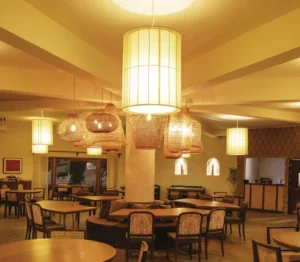
Tradition Wrapped In Modernity: Terracotta Tales
In the fast-moving pace of Dhaka city, do we not all feel the need to slow down, away from the chaos, experience the presence of the surroundings, and stay in the moment? Inside the premises of the Tejgaon branch of Aarong, Terracotta Tales pays homage to the local craftsmanship. It is a place dedicated to the warm and sentimental dishes and the comforting and heartfelt ambiance that make us long for home. Rafia Mariam Ahmed, principal architect of Hive Architects, designed this beautiful restaurant having intimate dialects with details. When an individual experiences space, what does make one recall it? What works there is the phrase: “design is in the details.” The goal of embracing details is to get you to think critically and present the best possible solution —right from the beginning. That is why details are important. They can keep us coming back, or they can keep us from coming back. And definitely, that comes from a good number of researches. Terracotta Tales is one such location where traditional village home details are infused into a minimal modern portrayal. Terracotta Tales and the adjacent bakery, Dough Diaries, are in a joint venture with Aarong. They are one of the restaurants under the Emerald Restaurants, with other operational restaurants being: Thai Emerald, The Red Chamber, Grove, Trouvaille, Gusto, and Emerald Bakery. The structure the restaurant belongs to was initially designed by Vitti Sthapati Brindo Ltd. alongside the Aarong outlet. The outlook of the structure, starting from the large openings, landscape, and interior to the detailed texture on the outer surface – all were later added as the journey of designing this tale began. The theme and menu of the tale were to be Bengali cuisine, from where conceptualisation of the space began. “I started going back to our roots of being a Bengali. I wanted to pick the elements so rich with history, which had been used daily in our culture, for so many years, and blend these elements with modernity. I wanted to design a space that would take us back to where we belong, a place more oriented towards slow living,” Ms Rafia shared. The space is an abstract representation of a mud house, the softness of which is found in the details of rounded corners of walls, doors, and windows. The unevenly matte polished surfaces with raw, warm earthy colours take you to the affection of the rural aura. Even at night, the lighting is as such to create the ambiance of a warm-toned hue of “prodeep” (dimmed fire lamp). The centre light pieces are delicately handwoven cane shades. Terracotta has been used in many details of this space. In the shade of the walkway, with that of the semi-outdoor space on the rooftop, and the centre of attraction is the wall of the stairway that leads to the rooftop dining. The wall is composed of thin slates of terracotta tiles arranged in triangular patterns, which creates dialects with the light from the sky at different hours of the day. The lanterns used in the rooftop space are also custom-made of burnt clay. As clay is a vital component of humans, country, and roots, the concept and name were associated with terracotta to represent its power of affection. Tales of local artists and craftsmen were incorporated into the design by the use of cane lanterns and clay lamp shades and the famous “Tepa Putul” (a local handmade clay doll of a specific style). Potters and artists made larger sizes of these usual small-scale dolls that are placed on niches as commonly seen in the mud houses. Framed rustic metal jewelry and decorative mirror are added to the wall to represent the daily used materials in a rural mud house. The landscape is designed to wrap an individual with nature. The restaurant is pedestrian-only, with no vehicular connectivity directly, focusing on the practice of being close to nature. The walkway has a beautiful line of bamboo trees on one side and specifically selected floral trees on the other. There is also an outdoor sitting area where the hard surface meets the green in an undulating line. A small body of water curves along the structure is an abstract form of “pukur” (a pond) as commonly seen in the rural context. Ms Rafia said, “The mere attempt was to get out of the edged effect of modern city life to a more mellow and soulful experience – Where one can only indulge in the presence of themselves, the company, and, of course, the food. The trees shed flowers and leaves, creating an inviting bed of nature for the people exploring the outdoors. The curved walkways toward Dough Dairies also give you a feel of the rural memories.” The subconscious nostalgia with the cane-woven furniture details makes one reminisce childhood memories from the ancestral homes. The utility area has been partitioned with cane-weaved partitions to camouflage it in the interior. The wooden curtain rails and the door handles add value to the theme, complementing the colour palette. A few subtle colours are added by using a floral print material on the back of the seats, preventing the guests from feeling monotonous. Old ceramic plates are decorated on the wall, making a spectacular composition of colours, history, and belongingness. On a bright sunny afternoon, when the sun kisses the shallow water next to the large window with curtains of translucent softness, the sheening glitter of the rippling water reflecting on the ceiling catches one’s attention while being indulged in the nostalgic local cuisine. The soul runs through the handcrafted details and the softness of the ambiance makes one feel warm, cozy, and at home. The modern city crowd is so much more over-oriented towards a captivated lifestyle that even a natural splash of water becomes a form of irritation. Terracotta Tales is a space to celebrate that naturally unnatural necessity of life that people are slowly getting carried away from. Authored by Rehnuma Tasnim Sheefa
Read More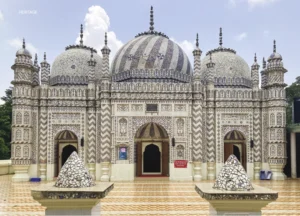
The Voyage of Bajra and Rangeela’s Mosque
Rangeela is the word which denotes vibrant/joyous, often mixed with quirkiness. So is the tale of Bajra Shahi Masjid, apparently unconnected unless it is told. After all, how many 281 years’ old mosques do you know named after a watercraft! Being a silent witness like a vessel through the waves of time, while breathing over four separate centuries, this Chinni-tikri skinned sublime architecture was built in the middle of a village. It has such a riveting history that it is a bit arduous to decide where one should begin while trying to tell its tales. With Rangeela, shall we, to unravel the ‘mystery’? Abu Al-Fatah Nasir Ud-Din Muhammad Shah was another one-of-a-kind emperor in the collection of Mughal Empire emperors. Passing away at the age of 45 this interesting man lived quite a colourful life whilst having an eventful reign. Born as Roshan Akhtar, and eventually becoming The Muhammad Shah, after ascending to the legendary Peacock Throne, this handsome-looking man had multiple wives. One being a dancer peeks a hint about his time where worldly pleasures were always a priority rather than tensely being busy with bloodshed to protect the reign and expand like most other emperors. Whilst on the throne of a once mighty empire that was at the beginning of its eventual end, he was more glued to orchestrating orders that would vastly contribute to the cultural developments of the region. He was greatly influenced by genres of creative practices and his pen-name was Sada Rangeela which loosely translates as ‘always joyful’. How is Rangeela connected to the story of Bajra Imam Hasan Siddiqui, a simple old man, is Bajra’s current Imam and has been there for the past 27 years. Appointed through a legacy of seven generations, his veins are carrying the blood of the first ever Imam, who was appointed at this vibrant space of worship almost three centuries back, by Rangeela himself. You can read an honour board carrying the names of his forefathers in his office room inside the tiled compound of this graceful mosque. And it is not a sort of unspoken rule for the place; after a time it was the love of the locals, who out of admiration asked for the legacy of the first-ever Imam, Shah Sufi Abu Siddiqui to be continued. Sufi, who was a former resident of the holy city Mecca, was the first and longest-serving Imam for 55 years at his beloved Bajra. According to Imam Hasan Siddiqui, popular stories and recorded history, the story of Bajra’s birth may be something like the following one: Adored representatives of Rangeela, the brothers Amanullah and Sanaullah, were ordered to go on inspection of the reigned regions. They were to build a beautiful mosque, in reflection of The Delhi Shahi Mosque (Masjid-e Jehan-Numa), on the location where the siblings along their troops would run out of food and water, during the expedition. Closer to the location of the mosque that we see elegantly embracing its guests today, is where Amanullah’s water vessel was anchored at the banks of Bulbuli. After offering prayers, this is the site where Amanullah decided to construct a mosque. Hence, the name Bajra became popular. The Bengali word defines a particular type of water vessel, a big-sized boat, that was used mostly by the wealthy elites and royals of the time to travel across this riverine delta. The mosque was named after that eventually, and the village where it homes was formerly known as Umrabadh, which got its new and identical name after the mosque. According to another version of the story, Zamindar Amanullah built his house thereafter, during the stoppage of his inspection tour. Later, by the order of Rangeela, built the mosque there. There are many interesting local folklores attached as well. Till his death, Amanullah was the mutawalli of the mosque and after his demise, younger one Sanaullah was given the responsibility. In the early 1900s Bajra zamindars Khan Bahadur Ali Ahmad and Khan Bahadur Mujir Uddin Ahmad extensively repaired and decorated the mosque. Although an extension has been built in recent years to accommodate increasing number of devotees in congregations. It is still one of those few historically significant monuments in the country that were taken care of over the years and in a surprisingly better state. The Bajra mosque is not a common thing to pop up on a non-local’s mind. Apart from travel and history enthusiasts, how many are aware that one of the comeliest mosque complexes of Bangladesh has been quietly standing with all its gracefulness for almost 300 years inside a not much heard about village in Noakhali? After a long while on tracks, under the soothing shades of green, you will be welcomed by the suavely calm waters of a 30 acres huge pond which not only complements the complexion of the space, but is also special as it was dug to use its earth to construct the elevated platform where Bajra stands beside. Although identical to its other Mughal siblings, having alluring arches, delightful domes, magnificent minarets, and a gorgeous gate on the east, what makes Bajra so special is its enthralling complexity of ornamentation with Chinese ceramics or Chinni-tikri all over its pearl white skin. As if all the ravishing floral and other designs on its body, the dark green ceiling you stare at standing under the marbled dome while inside, has been calligraphed with essences embedded of stories and folklores, often attached to age-old architectures that profusely decorates its already mystic domain of aura, which sends pulses of abstruse serenity to its guests. . A 300-year-old breeze caressing your hair as you sit by Bajra’s pond after Asr, and gazing forever at the kisses of golden hour glistening on Bajra’s surface might make you start counting masjids (mosques) in this country. There aren’t many like Bajra. Written by Shahbaz Nahian
Read More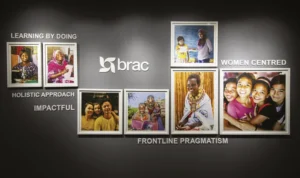
Balancing Work and Tranquility Brac International Headquarters
With changing generations, the working culture along with its surrounding environment is evolving. As employees’ lifestyles become more comfortable, there is a greater demand for modern work life and space. One such example is the newly renovated headquarters of BRAC International. The office on the 14th level of the BRAC Centre is an exception in itself. BRAC International is an international nonprofit organisation that works to empower individuals and communities affected by poverty, illiteracy, diseases, and social injustice. BRAC’s institutional expertise has successfully implemented programmes across 10 countries in Asia and Africa, impacting the lives of over 100 million people by adapting the models according to the context of the specific country. As an international nonprofit, BRAC International wanted to give a fresh look that reflected their cross-regional work as well as create a space that employees would feel proud to work in. Chinton Architects Ltd. implemented and executed the designing process, closely working with the Executive Director, Shameran Abed. The design draws heavily on BRAC’s values and their core brand DNA. The principal architects, Md Ishak Miah and Neeman Karim, along with the project architect Md Shakiful Islam Proshun and the team, designed a modern yet humble office space that draws heavily on earthy and nature-oriented office interior by using many leafy plants in the indoor office premise. There are also many beautiful photos of programme participants throughout the office to inspire the staff. “Our new contemporary office interior is one of the first of its kind in the BRAC building and several other floors have been inspired to implement similar design elements on theirs. As BRAC International staff, we feel proud of our office and enjoy working here, while welcoming our colleagues from country offices who also feel good to have such a modern and beautiful head office,” Tania Ashraf, Head of Strategy, shared with Ceramic Bangladesh. The eye-dragging view of the whole Banani and beyond is a very complimentary factor and helps the employees to release stress amidst working hours, not making them feel claustrophobic. The offices along the sides of the building are semi-frosted glass partitions with maps and skylines of major cities and countries where the organisation has a presence. The main meeting room features the Dhaka skyline. “We wanted to create a workspace where people feel inspired to come and work. We wanted our colleagues to feel proud about working with Brac International.” A few featured walls are dedicated to showcasing photos of programme participants. The four columns passing through the f loor showcase the organisation’s values – Integrity, Effectiveness, Innovation, and Inclusion. There are separate meeting rooms, which are interestingly named after the working regions. The big meeting room has clocks showing the timing of all the internationally affiliated countries. The office also has standing desks for employees to take breaks from long hours of sitting. Tania Ashraf added, “The lobby area has a collage of photographs from the f ield and reflects our DNA which is very much a part of our daily work. Every morning when we come to work, we feel inspired by seeing these images as soon we get out of the lift. We wanted to create a workspace where people feel inspired to come and work. We wanted our colleagues to feel proud about working with BRAC International. As all of us work very hard, it was important for us to create a beautiful space where we can be productive as well as remember our purpose. Authored by Rehnuma Tasnim Sheefa
Read More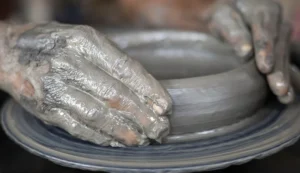
Pottery: Whether To Wither Away Or Survive? – Artisans out to retain this ancient craftwork
Which cultures do the rural Bangladesh represent since the time immemorial? Broadly, the answer might be traditional arts and crafts but what comes first is pottery, the decorative face of Bangladesh. It has a magic that master artisans have been weaving with their wand-like hands. The earthenware or clay-made wares were the essential household articles for centuries. The use of pottery was common in the celebration of various fiestas and festivals. However, is pottery a thing of the past and this fine art going into atrophy, really. Let’s look at an eye-soothing picture at Nolam Palpara, some 38 kilometres off the capital Dhaka. A handful of artisans, men and women, are absorbed in putting strenuous efforts to make pots, pitchers, jugs, glasses, bowls, buckets, small banks, pot covers, dishes, flower vases and dolls. They are out to keep their ancestral profession alive. As time passes, many in their neighbourhood have left this ancient art, yet some are still retaining pottery with profound passion. The potential of pottery is immense and this craftwork is contributing a lot to the country’s nascent ceramic sector. A potter in his late 30s, Palash Pal, told this author during a recent visit to this pottery village, said this very Nolam Palpara, in Savar upazila under Dhaka district, was once famous for the traditional artistic pottery as almost all residents were engaged in the pottery industry. Palpara people have transformed their lifestyle over the years. From the kitchenware to attire, a dramatic shift is seen as they are trying to cope with the changing trends and cultures. But a visit to some makeshift outlets near Doel Chattar adjacent to the Bangla Academy and Dhaka University campus, which stretches all the way to the High Court gate, tells us a different tale. Most of the traders expressed their utter satisfaction with pottery sales after years of stymied growth in the business. According to sector insiders, pottery business is evolving faster these days as enthusiasts from all walks of life prefer a glittery album of aesthetic pottery and terracotta showpieces. From utensils to showpieces, once upon a time their ancestors crafted and used traditional pottery items in their everyday household work. For ages, villagers used earthenware as household tools. With the passage of time, this long-held tradition has shifted drastically. Some craftspeople are exerting their efforts to boom and boost their long-standing business and tradition into a different path. Citing that his ancestors were involved with this occupation for hundreds of years, Mr Pal said in 2005, when he started this trade by acquiring hands-on training from a local artisan, a total of 40 families were engaged in making earthenware. The number has tragically come down to only eight now. Their profession remains on the line for shortage of soil, wood and funds. The oldest art of the country is clay-made crafting, that is pottery. The main raw material of pottery is soil. However, this cannot be crafted with any soil. Clean sticky soil is the key component for this clay art. Business only grows substantially during festivals. Potters struggle to survive with their craft in the rest of the year, said Mr Pal. Those who can prepare items with aesthetic value are doing better business as the demand for such items has dropped. Nobody in his village is making any aesthetic articles due to fund shortages and patronage. A good number of people throng Dhaka’s different sales points, including Doel Chattar, to buy various types of pots and pans, flower tubs, vases, showpieces, lamps, umbrella stands, portraits, toys and wall tiles, Mr Pal acknowledged. Prominent potters from Patuakhali, Dhaka, Narsingdi, Manikganj and some northern districts supply such products across the country, including the metropolis Dhaka. The 69-year-old bearded Abul Kashem Sikder, who has set up a makeshift outlet at Doel Chattar, said this place has become the biggest pottery market. He bought most of the artistic pottery products which are crafted in different parts of the country including Barishal, Cumilla, Faridpur and Dhaka’s surrounding Dhamrai, Savar and Nabinagar areas. Mr Sikder sells more than 150 items which are molded and sculpted by the local Pal community. He does not sell any traditional pottery as they are almost on the verge of extinction, he mentioned. Some foreign tourists often visit his shop and they also cannot resist the temptation of buying articles from a dazzling collection of items. Mr Sikder sells Tk 3,000-5,000 daily and his annual turnover is estimated at Tk 2.0-2.5 million. Dhaka has been the nerve centre of Bangladeshi pottery since time immemorial. The pottery industry has been settled for hundreds of years along the banks of the Banshi, including Kaggiyapara, Palpara of Dhamrai, Nabinagar of Savar, Nalam and Bhagalpur. But this art still survives with bars and barriers. For survival, many people have left their ancient calling. Even if some are trying to hold on, they too are plagued by so many pains, according to the industry people. In 1975, more or less 65 potters in the village were involved in this craftsmanship, but the number has come down to only eight now, indicating the state of the aesthetic art, he said. To mould earthenware, potters have to acquire clay through a strenuous process. They have to collect clay mainly during dry season. Initially, clay was passed through various stages of molding media like wood, stone, shell and metal before reaching the age of ceramic and porcelaina. The sexagenarian Madhob Pal, an artist and sculptor, who has three sons employed at different private organisations, was born and brought up at the same village and started crafting various sorts of pottery items 32 years back in 1990. About soil collection, Mr Madhob said potters have to acquire soil by making 8-10-foot deep holes underground by hand. Due to soil, energy and financial crises, the craft lovers will not be able to find the craft available for long, he warned. Their lifestyle has changed over time with aluminium and plastic products replacing earthenware
Read More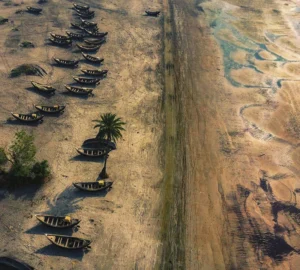
Kuakata: Sea Waves In The South
Something about the white noise of waves, the deep whirl of wind, and the melting, golden hues during the strike of twilight draws people to the affection of the sea. And among a variety of sea beaches that Bangladesh is blessed with, the unique and mesmeric Kuakata wins the hearts of all passionate travelers. Kuakata Sea Beach, the second largest one in the country, is well-known for its picturesque scenery, serene blue skies, and tidal waves. Not many people know that Kuakata has a unique trait that makes it one of a kind; it’s the only sea beach in South Asia that offers travelers a full view of sunrise and sunset. People gather here to relish the therapeutic hours of the sun rising and later disappearing at dusk, reflecting golden highlights in the water of the Bay of Bengal. Origin of the name The name “Kuakata” is derived from the words “Kua,” which means “a well in earth for drinking water,” and “Kata,” which means “the digging of earth.” It’s taken from the legendary well dug on the seashore by early Rakhine settlers in their quest for drinking water after being expelled from Myanmar by the Mughals in 1784. Now home to Hindu and Buddhist communities, the neighbouring “Rakhine Palli” is comprised of a small ethnic group. Spending a few hours exploring there, one can learn about different aspects of the diverse lifestyle of the Rakhine villages; observe the handloom skills of the villagers; and come across handicraft shops at the well-known Rakhine Market. The Buddhist temple and the legendary well are located to its south. It is known that the beauty of the temple was influenced by Chinese architecture. The temple has a statue of Buddha about 30 feet high, claimed to be the highest in Bangladesh. Opening of Padma Bridge & New Opportunities Located 320 kilometres away from Dhaka, the beach is situated in the Lotachapli Union, Kalapara Upazila, Patuakhali administrative district under Barishal division. Earlier, it would take 9-10 hours to travel to all southern destinations by road or river. The bridge over mighty Padma has whittled down the distance between Dhaka and Kuakata to nearly 300 kilometres. The trip takes about six hours, which is almost half the time it used to take earlier. During the time of Eid-ul-Azha in mid-July, every hotel and motel was fully booked and was overcrowded with tourists who traveled long distances to see the magnificent sunrise and sunset at Kuakata. However, the Sundarbans and Kuakata-oriented tourism had faced a decline in the past few years. When asked about this, local businessmen and hotel owners said business has been booming nowadays. They are optimistic about reversing the trend since the global pandemic. They said since Kuakata has become more accessible, thanks to easier conveyance and infrastructural development, the number of tourists would increase in the coming days. Places to Travel Around There are a few nearby tourist attractions with diverse biodiversity. A series of coconut trees and an evergreen thicket of ‘Jhau Bon (forest)’ add to the beauty of the beach. The woodland is within walking distance from the seashore and is an excellent spot for watching the sunrise. There is an eco-park, a fascinating place for a picnic or perfect retreat. The Gangamati Reserved Forest is located to the east of the Jhau Forest. To the east of Kuakata beach, beyond the Gangamati forest, there is a crab island full of red crabs. It is said that the red crabs flock to the beach to look for solitude. Local kids around the beach get thrilled to catch the red crabs and bring them over to the tourists. During the travel season from October to March, speed boats are offered from Kuakata beach to Crab Island. Festivities add more vibrancy to a place. Thousands of devotees gather here during the festivals of “Rush Purnima” and “Maghi Purnima.” On these occasions, they perform holy baths and enact traditional fairs. These festive events make the Kuakata beach more appealing to visitors, adding life to the serene views of the lush forest and colourful sailing boats in the Bay of Bengal. Another beautiful forest, known as Fatra Forest, is found at the extreme east of the Sundarbans forest range as soon as the river is crossed, on the west side of Kuakata beach by an engine boat. Even though this forest contains a majority of the Sundarbans, no wild animals are present. In this forest, one can witness numerous birds, monkeys, and wild hens. In the winter, migratory birds are found around the spot, which is another spectacular feature of Kuakata. There are arrangements to visit these protected forests, including Fatra, Laldia, Harinbaria, and Sonakata Ecopark, which are adjacent to the Sundarbans by boat. Many deer are spotted around the forests, and they are seen as comfortable around tourists. With three to four hours in hand, one can tour these amazing places. An interesting place here is Shutki Palli, or “Dry Fish Village,” located at the western end of Kuakata beach. From November to March, the dry season lasts. The fish gets salt-cured and sun-dried on the beach after being caught in the sea. You can spend time watching the busy schedule and lifestyle of these fishermen and get to buy a variety of dried fish at reasonable prices. Where to Stay For accommodation, many hotels are available nearby, from which one can choose according to comfort, convenience, and cost. Some notable ones are Kuakata Grand Hotel, Hotel Graver Inn, Kuakata Inn, Hotel Nilanjona, Hotel Sea View, Hotel Sea Queen, Parjatan Motel Youth Inn, Beach Haven, and Sikder Resort and Villa. In the case of food, the hotels prepare the meals for the guests in their restaurants. Besides, a variety of local cuisine is also available in local restaurants around. The Best Time to be here The best time to visit Kuakata is when you can fully immerse yourself in the experience without having to worry about the inconveniences. The best month is
Read More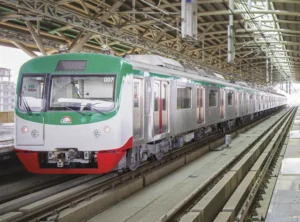
Metro Rail A Reflection of a New Dhaka
Metro Rail will make Dhaka closer to people living in its immediate vicinity. It will change the landscape of the metropolitan city of 20 million people. It will also change the demography in a city where 45,000 people live in per square kilometer area. Motijheel was called the heart of the Dhaka city but thanks to Metro Rail, each station is being developed as a single heart. So, centering the ‘Mass Rapid Transit’ MRT-6 route’s 17 elevated stations, residential and commercial areas are undergoing major changes. Currently, it takes two hours to travel from Uttara to Kamalapur station; the Metro Rail service will bring that down to 40-45 minutes only. During peak hours, the $3 billion Metro Rail will be able to transport around 1800 passengers on each direction in every three and a half minutes on this route, resulting in an average reduction of 15 buses and 100 different types of vehicles on each direction. Traffic congestion is also expected to be reduced and huge working hours will be saved. As per the Minister of Road Transport and Bridges, Mr. Obaidul Quader, five more Metro Rail-routes will be constructed in Dhaka by the year 2030 when the face of Dhaka will change. It will cost about US$ 22 billion. On June 26, 2016, Prime Minister Sheikh Hasina officially inaugurated the construction work of the MRT-6 project. This marked the beginning of the construction work of the Elevated Metro in Dhaka. The elevated Viaduct on which the Trains will run is about 13 meters above the ground. In Dhaka, out of 17 stations on the 21-km-long MRT-6 route, construction of a 12 km railway track from Uttara to Agargaon and construction of 9 stations is nearing completion. Under the construction package CP-3 and CP-4, the stations are Uttara North, Uttara Center, Uttara South, Pallabi, Mirpur-11, Mirpur-10, Kazipara, Shewrapara and Agargaon. The plan to inaugurate the service along this section has been set for December 16, 2022. Each Metro station has a 180 meters long and 25 meters wide Concourse Hall. Passengers will use the stairs, escalators and elevators to purchase/recharge MRT Pass or Rapid Pass from the Concourse Hall and then board the Train from the Platform located above it. Each of these three-storied stations is built on an average 200,000 square feet area. Most of the materials used for constructing these stations have been procured locally. One of which is the use of different types of Tiles. These tiles include floor tiles, wall tiles, glass tiles, tactile tiles (for passengers with special needs), brick claddings for walls, paving blocks for platforms, and stone tiles. And these are special types of vitrified tiles made of high temperature, which do not corrode easily. Only 5 companies in the country are considered eligible to supply these tiles. About 50% cost has been saved due to the use of products manufactured locally. Metro Rail will require about 18 megawatts of electricity to be taken from the national grid. Then it will be converted to DC electricity. For this, eight Traction substations have been installed in Uttara Depot, Uttara North, Uttara South, Mirpur-11, Shewrapara, Bijoy Sarani, Shahbag and Motijheel Stations. The cost of operation and maintenance for Metro Rail is yearly one thousand crore taka will be borne from the fare and other sources such as rental/leasing of commercial and advertisement spaces. The government is thinking about keeping the fare affordable for passengers from all walks of life with subsidies at first. The ministry of Road Transport and Bridges gave an impression that the fare may vary between a minimum of 20 Taka to 100 Taka depending on the length of the journey along the 21-km route. There will be various announcements for passengers in Metrorail in both Bangla and English. From uttara to kamalapur Metro Rail from Uttara to Kamalapur will take about 45 minutes. Although the highest design speed of the Metro Train is 110 kilometers per hour, the actual speed may vary due to the curves on the route and other operating factors. 17 stations in 21 kilometers mean each of the stations are located within one and a quarter kilometers from another. The Trains may stop for a maximum of one minute at each station. During peak hours, trains will run every three and half minutes apart. An estimated 60,000 passengers will be able to commute on both directions per hour from early morning to midnight. Once fully completed, 24 sets of Metro Trains will run from Uttara to Kamalapur. However, 12 sets out of those will be used for the first phase operation from Uttara to Agargaon. Initially each of these trains will have six coaches with an option of adding two more coaches to each of the Train sets if necessary. Each Train will have a total seating and standing maximum capacity of 2,308 passengers. According to this calculation, at the beginning, it will be possible to transport about half a million passengers per day. One of the six coaches on each train will be reserved for women. However, other coaches of the train will also allow men and women to travel together. MRT Line-6 was initially planned to reach Motijheel, but later it was extended by 1.16 km to reach Kamalapur Railway Station. Though, physical work for the extension of Motijheel to Kamalapur section has not started yet, the preparatory works for this extension is ongoing in full swing. In addition to MRT Line-6, 3 other Metro Rail routes (MRT Line-1, MRT Line-4 & MRT Line-2) will also have stations adjacent to the Kamalapur Railway Station. Once completed Kamalapur Railway Station will transform into a modern transit hub. Even though, initially, the timeframe to complete the MRT Line-6 project up to Motijheel was set for 2024, Bangladesh Government is keen to complete the project ahead of that target. If the current pace of work remains unchanged, hopefully, the people of Dhaka will get the much awaited MRT Line-6 by December 2023. Minister Obaidul Quader said
Read More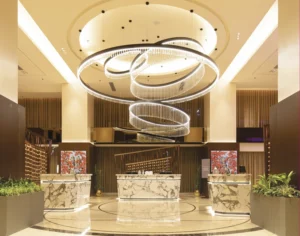
Reminiscing the memories in new urbanscape SHERATON DHAKA, BANANI
Since the 90s, Sheraton has been one of the prominent names in the luxury scene of Dhaka city. Many of us have fond memories of weekend morning strolls and fun with parents near the poolside landscapes. As the city grew, so did the urbanscape, the economy, and hence a shift of luxury being more contemporary with the time. Sheraton Dhaka in a new location in Banani is an excellent example of the recall value of a brand. The interesting friction with the prior location is that the city dwellers are still getting familiar with and accepting the nostalgia within the new vertical opulence. The contemporary and trendy expression is a boon to the new generation of entrepreneurs and business enthusiasts, alongside the youth crowd. The location of Banani is in a merging mesh of formal and informal zones, may it be corporate offices with the big business companies or a hub for youth to hang out and collaborate. “The new business model of the brand is to connect these dots,” shared Md. Al Amin, Hotel Manager and In-charge of Sales and Marketing. He also added, “Sheraton’s slogan is ‘Where the World Comes Together’ and Sheraton is community which is about ‘We’ rather than ‘I’.” A premium hotel is not just about a beautiful architecture or posh interiors serving the brand value, but the services and how the functionality works. One of the basic guidelines for any hotel is to design the circulation and utility of the spaces. As we visually experience the front of the house and its ambiance, the back of the house provides smooth services subconsciously yielding ease. Since 2016 the 81 years old operating Sheraton Brand became a part of Marriott International. This shift has been an improved revamping session for the brand protocols. As per the brand guidelines, all the designs are executed. High-end and prominent local architectural consultants and a Singaporean design consultancy firm collaborated with the Marriott International design and management team for the execution process. The active participation and suggestion of the local owner, a seasoned hotelier, added value to the output. The hotel has a gourmet café called Toastina, a buffet restaurant and alfresco named The Garden Kitchen, On the Rocks -a whiskey bar, and a high-end Japanese restaurant, Yumi. One of the biggest column-less ballrooms in the city, spanning approximately 8000 square feet. A club Lounge for Club Room Guests and for top-tier Marriott Bonvoy members, a gym with the best city view, spa facilities, and many other support features of a modern and upscale hotel. Marriott International is specific about the arrangement as they achieved the class over the years. Everything is per the standards, from the washroom amenities, mattress, and bed linen to the kitchen layout and room sizes. The restaurant has all freshly imported ingredients to maintain the quality. The hotel is a no-smoking zone. Due to the new branding value of communal developments, the sitting arrangements are for a larger group of people. “Sheraton being a full-service hotel does not just limit itself to bed and breakfast, but rather the ambiance ambiance and overall experience of the service. Sheraton has one of the largest hotel footprints overall within the Marriott’s Brands. Sheraton considered as a flagship in the Dhaka is region,” shared Mr. Al Amin. In an Exclusive Interview with Daniel J Muhor General Manager, Sheraton Dhaka 1. As per the memories of the 80/90’s people and kids, luxury hotels meant the Pan Pacific Sonargaon (existing) and the Sheraton Dhaka, at the present premises of Intercontinental. That shift of nostalgia from a lawn-based architecture to an urban upraised scraper. How do you feel this change is appropriate? There are advantages and disadvantages. People are experiencing a positive shift, just at times struggling between the present and previous location, but still adaptive. For better reference, we are addressing it more emphasized as Sheraton Dhaka, Banani. People are responding to the recall value of the brand. As the land occupancy is getting concentrated in Dhaka city with land as such from Banani, one of the most expensive ones in the world, it is tough to plan the layout horizontally. The location shifted alongside the architectural style from horizontal to vertical planning. Having the fact of generating revenues, every square foot matters. If land such as in Banani gets used for urban landscaping and ground-level outdoor spaces, it would have been tough for the owner to generate revenues. But we have kept an open alfresco area that serves as an outdoor landscape, and at the top, the poolside area adds to it as well. And the panoramic views as you go up the floors add a new experience. Overall, we feel it is an urban retreat within the hassle and bustle of the city. 2. Most people are observing the contrast between Banani supermarket and a five-star rated hotel. How was the selection of the property made keeping such an interesting combination? Initially, the Banani supermarket was a worrying factor. But the existing structure has been a great fortune. The podium coverage that we have is approximately 44000 square feet. And there are lots of examples of shared land-use systems of commercial spaces worldwide. Many premium hotels are operating this way. The owner is investing to improve the ambiance to smudge the contrast. Hence, the supermarket is getting upgraded, increasing its value and the property value parallel. The lower few levels of the market are louvered from outside. The entrance is more decorated, providing a better experience for the people visiting the market. The roots are important too, and the addition of Sheraton will cocreate the landmark. The users need help to be educated about the usability of the facilities in a better way. 3. Hotel and their hospitality differ in many experiential and served ways. How Sheraton, Dhaka is planning to be exceptional in this developing range of upcoming hotels? The hotel’s one of the best-selling points is one of the biggest pillars less ballroom, in a busy
Read More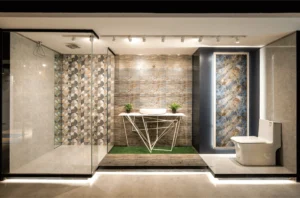
Surging Potential of CBC Tiles: In conversation with Sayma Islam
China-Bangla Ceramic Industries Ltd. (CBC) is one of the top ceramic manufacturer companies, founded in 2001, as a joint venture private sector entity between Bangladesh and China. It produces a wide range of Wall and Floor tiles including Homogeneous, Decor and Border tiles. China-Bangla Ceramic Industries Ltd is well-known company as importer, supplier, distributor, wholesaler, retailer and manufacturer of ceramic and tiles products in Bangladesh. Everyone can depend on CBC Tiles for their commercial office, living room, bedroom, kitchen, bathroom, outdoors and stair. All products are wall and floor tiles, and cladding. Annual production capacity of unit-1 is 7.5 million sq. metre and unit-2 is 3.5 million sq. metre. Its total employees are 1200 now. It has manufacturing plants in Tarabo, Rupganj, Narayanganj (unit 1) and Charmadhobdi, Bhatpara, Panchdona, Narsingdi (unit 2). All its technology and machinery were imported from Italy, Austria and China. The Chairman of the company is Ferdousi Islam, Managing Director Mr. Md. Shirajul Islam Mollah, CEO and Director Sayma Islam. China-Bangla Ceramic Industries Ltd. A top ceramic manufacturer of BD CBC is a well-known competitor and a leading brand. Ceramic Bangladesh recently had the opportunity to sit with Sayma Islam, CEO of CBC, for a delightful tête-à-tête and learned about the insights of CBC, their tested strategies and future plans. What is your leadership philosophy in creating that change? “It’s been 10 years since I’ve joined CBC. I was appointed as a CEO but I didn’t know what that meant at the time. I was at my learning stage and it took me 2-3 years to figure out the role. My father grew the business with his own hands, and when I joined, I wanted to introduce something that would make CBC better. I wanted to set the vision. It’s a full Bangladeshi company now since we have taken over but we kept the name. And as the newer generation I wanted to introduce sustainability. I set the vision for the company and inherited the norms and traditions from my father. But I got out of the norm and visualised how I wanted the company to grow. I changed the logo and gave it a new look. Set up another factory that is capable of manufacturing modern tiles. And we focused on competing with foreign products that were doing well locally. The team took instant decisions and found out ways to catch up with the industry’s unceasing changes. Now that everything is more digitised, the technology sector is going through rapid transformation. Just a couple of years ago, the industry lacked skilled manpower and had to import raw materials. Now we have all the gaps filled. CBC hires foreign experts now who mostly work in the R&D (research and development) department. This is one of their strategies that helped them immensely.” What do you think has been the key to its success? “We are raising the bar every time by looking for better technicians, using better raw materials, and researching more and more. We chased better quality and looked at the market to see what was in demand. We worked on the designs and quality according to that demand. We started CBC and it’s been 20 years plus already. And when we started there wasn’t anything called ceramic tiles. We are the second introducers of foreign tiles substitute. One of our biggest contribution would be that we’ve increased the local demand for locally made ceramic tiles. Now there is a huge variety of tiles and we focus on CRM when it comes to selling ours in the market.” How do you smoothly manage such a sensitive part? “Most of the employees we have, have been with us for a long time. We give two days off and provide a friendly, newly introduced corporate environment. We are paying incentives, we provide support system for a deceased employee’s family and we motivate our employees to gladly work with us with diligence.” Ceramic industries should focus on research. Ms. Sayma said, “The more R&D we do the better this sector will get. If we can maintain quality in production then the finished good will be good as well.We need modern solutions and constantly research for updated product designs.The market is growing but it hasn’t reached saturation point. We are focusing on constant growth. We are also thinking about real estate now that we have developed so much. We already have 3 ongoing projects. Our plan is to branch out with real estate, cement factories, and sanitary ware.” She added, “What keeps me focused is my father. He plays a gigantic role in our upbringing. Fifteen years back, women weren’t on this scene. After my joining we expanded to another factory, and we are working on a third plant.
Read More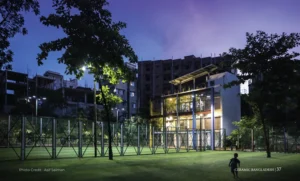
Transforming Time Embracing The Journey of designing a mother’s courtyard to a community courtyard
Architecture as a profession starts with untold responsibilities, especially from the day an architect realizes their observation about the surrounding necessities. The story of Architect Rafiq Azam starts somewhere there when the young and enthusiastic artist started his architectural school at the Bangladesh University of Engineering and Technology (BUET). Uncertain about coping with architecture, his subconscious mind always wandered towards art school. Being born and brought up in the old town and surrounded by its culture, the young Rafiq developed a lateral mindset. The results of his learning reflect on his work even after 30 years of practice as a Principal Architect with his team, Shatotto architecture for green living. From the fond memories of childhood and presently looking back to the missing pieces built the urge to refurbish the old Dhaka with a better story. But it all started with a sudden step on the realization of responsibility that he felt to hold the memories of his family, his mother, and their childhood ambiance, back when he was a third-year student struggling to survive architecture school. After the demise of his father, they wanted to rebuild their house. His mother and her affectional emptiness of giving away her memories with her husband and adapting to a new built environment made him courageous enough to start his first design project, their residence in Lalbagh, Dhaka. The only requirement from his mother was a garden and an “uthan” (courtyard), like the one they had in their old house, where she could walk around and re-live her nostalgia. The first of its kind, he designed a courtyard on the second floor of a building, gifting his mother the patch of green to cherish. Almost after 30 years, he did similar for the people of Rasulbagh, a small community in Lalbagh, Old Dhaka. He designed a communal park collaborating with the Dhaka South City Corporation, that is more like a courtyard gifted to the built community. According to Rafiq Azam, architecture is not just drawing and construction but more about a merging point of nostalgia and new memories. His inspiration for sticking to architecture, lastly, was to create for the mother, the soil, and the country. As he says, “I learned architecture from my mother.” But this journey was not easy and short. The dedicated practice and research over the last 30 years, the showcase of persistence in public domains, developed trust in people. This reliance helped him influence a struggling community like Rasulbagh to revive and celebrate life. His vast experience allowed him to execute his ideas in a way that was widely accepted and even celebrated by society. ‘Architecture’s main focus should be to improve human life, working with the environment and its habitat. It should not only be limited to accommodating the luxury of elites but that of the public as well. That is how a kinship develops. ‘Urban spaces need to improve in the name of development, not just mega infrastructures; otherwise, the quality of human life will not be enhanced. And I have always been on a mission to bring a positive change,’ expressed Rafiq Azam. Rafiq Azam’s practice has always somewhat had its roots in Old Dhaka. Earlier in his career, the wandering mind wondered about the high-thorny boundary walls of the city. He questioned the level of mistrust and hatred that people built over time. From the culture of the old town, the houses had “mer” (plinth) for people to sit and mingle, at times with mud coolers filled with water to offer the passers-by. Dhaka was a city of love and respect; it was about bonding and mingling. The answer to this subconscious dystopia was to break the boundary walls down and oppose the convention. The practice of using glass boundaries to dissolve the visual barriers between the dwellers started. “The words ‘Kancher Deyal’ from the name of Zahir Raihan drama have inspired me to think about how a boundary can be made fragile and transparent. Hence, I started implementing them in the apartment buildings by adding plantations and benches for the passers-by. I took it as an experimental process to observe the interaction of the society,” he explained. In 1998, Rafiq did his first solo art and architecture exhibition in New York. “People and critics appreciated my arts- a few even bought. However, for architecture, I mainly received praise for my ability to draw to international standards. The architecture was not something extraordinary, but rather the approach was very American. While I was coming back, I wrote in my diary, ‘I am coming back with hope and frustration. I realized the need to learn about my own country and how to incorporate that into modern architecture. Much of my foreign learning had to be unlearnt, which was tough. I felt myself to be intellectually corrupted,” recalled Rafiq Azam. With this thoughtful shift of learning and unlearning, his urban and modern architecture went through an evolution. The gathered knowledge about Bangladesh, its geographical and climatic contexts, history, and culture started influencing his architecture. He showed his clients how to reminisce their childhood, just as he did with himself while designing his residence. His western drawings started getting a layer of Bengaliness, influences of poetry and literature. The rooms were no more spaces with four walls but rather got a concept. ‘Goshsha Ghor’ (a space to release anger), ‘Bristy Ghor’ (a space to enjoy rain), ‘Swimming Pond’ with ‘Ghatla’ (rural ponds with shorelines), Jongla’ (sprawl of shrubs and bushes), all these conceptually structured his architecture in better ways. A lot of pivotal points shaped his journey. Rafiq had learned a great deal from Glen Murcutt, who spoke more about nature, history, heritage, and its association with human life. “His advice was to touch the earth lightly. Architecture is a part of nature, and the alliance between two should always be maintained,” he added. Reflections of his learnings are observed in his translation of imagination into spaces. He connected the dots without the interference of foreign
Read More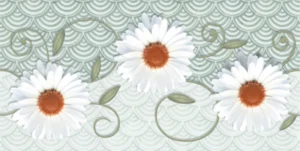
The Future of Architecture Lies in the Slab Tiles
Large format tiles are becoming new trend as people prefer large format Slab Tiles. The demand for these tiles, which are several times larger than conventional tiles, is increasing worldwide. The competiting countries of Bangladesh like Vietnam, China and India are grabbing the global markets of slab tiles rapidly. Despite the popularity of slab tiles in the Middle East and European countries, India, China and Vietnam have taken the monopoly of slab tiles’ market. Although the technology started in Italy, it quickly became popular in other countries. The speciality of slab tiles are its large size, very fewer joints, nice to see and high aesthetic value with strength and durability. Since there are fewer joints, it also has less chance of catching dirt. It can be cut as desired and set on the floor or wall. Moreover, slab tiles are much stronger and thicker than normal tiles. Several companies including Akij, DBL, Sheltech, Greatwall and RAK have started manufacturing mini slab tiles in Bangladesh. Only three years ago, slab tiles of 1200cm x 2400cm size were imported from Italy. At that time, the largest size of tiles in Bangladesh was 60cm x 60cm. Now 600cm x 1200cm; 800cm x 800cm and 1000cm x 1000cm size slab tiles are being manufactured in the country. Its size is gradually increasing. Within the next couple of years, various companies will run the process of manufacturing 1200cm x 2400cm size perfect slab tiles in the country. At the one hand, the production cost of slab tiles is lower than the conventional small and medium tiles and on the other hand, its price is relatively high in the market. Companies are more inclined towards these tiles due to market demand. Slab tiles are the new trend in the world tiles market now, because its features and advantages are very attractive and consumer friendly. Wide range of usages: Bathrooms, Kitchens, Countertops, Cabinets, Working tables, Offices, Shopping Malls, Hotels, Restaurants, Community centers and many more places Creating a continuity effect: Due to large size, there is less visibility of tile joint and the effect of tile texture is lively. Reduced installation time :Due to large format the installation time is much easier than traditional tiles. More hygienic & easy to clean : With less joints, there are fewer areas in which dirts can be stored and due to porcelain stoneware, it is itself more hygienic and easier to clean. Benefits of Slab Tiles : Excellent appearance due to the narrow joints ensures a seamless surface and vintage look. Sizes are available from 600cm x 1200cm to 1600cm x 3200cm with 5mm to 14mm thickness. The manufactures can cut this slab tiles as per their desired sizes and shapes. They are suitable for both wall and floor surface. Large format tiles can help enhance the look of the house, working wonderfully well in modern and minimalist houses. Each large wall tile and floor tile covers more square feet than a standard tile, leading to fewer grout lines across floors and walls, more seamless and stylish looks, and easier maintenance. Slab tiles are not themselves a different tile material – only a different manufacturing format. Usually made from porcelain or stone, slab tiles differ from normal tiles only in size. They are much taller and wider, with some variants coming in at a whopping 10-by-5-feet. Slab formats are in demand due to a few advantages that they possess over. normal tiles: chief of them being that they are cheaper and easier to work. There is a huge demand for slab tiles in the Middle East and European countries. At the moment, the demand of Slab Tiles is mostly fulfilled by China and India. Time is not far when this will be done by other Asian countries as well. Mr. Khourshed Alam, Director (Marketing) of Akij Ceramics said if it is not 1200cm x 2400cm, it cannot be called real slab tiles. Akij is now manufacturing tiles in the size of 600cm x 1200cm which are called mini slabs and hopefully by mid of 2023 Akij will produce 1000cm x 1200cm. Moreover, with the new technology that Akij is adding to, it will be possible to produce actual size slab tiles within the next 2/3 years ranging 1200cm-2400cm sizes. Pointing out that these tiles have a huge export market, he said, the world is now rapidly moving out of small tiles. Akij is also targeting huge export markets in Europe and the Middle East. He commented that the market of small and medium tiles in Bangladesh will also shrink soon. Because people are now giving more importance to the aesthetics of slab tiles as it can be cut to any size and fitted. Although there will be a little wastage while cutting these tiles, the beauty makes it all worth it. Besides, thanks to its thickness its durability is higher. Mohammad Bayezed Bashar, GM (Operation) of DBL Ceramics said that the demand for slab tiles has been increasing in the Bangladesh market for the past several years. That is why, various companies are now manufacturing these tiles and adopting the required technology. Its size is also increasing step by step. Currently DBL has started manufacturing tiles of 600cm x 1200cm size. There are plans to make it a size of 1200cm x 2400cm in the next two or three years. But at present, the major obstacle in expanding the market for these tiles is the lack of skilled fitters. That is why, DBL is training fitters across the country. They have helped to create at least 10,000 trained and skilled fitters across the country. It will also increase the income of the fitters. It is expected that as the number of fitters trained to install slab tiles increases, the market for these tiles will also expand rapidly. Mr Bayezed also said that the tiles that are currently being made in Bangladesh are done with “press” technology. But the next upgraded technology is “Roller or Compaction” technology, which will come
Read More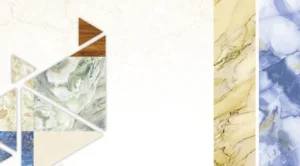
How Tiles can be identified Each type of tiles matches a unique place
Terracotta plaques have been used to decorate the walls of houses since ancient times. In addition to enhancing beauty of walls, it improves durability of the plaque. According to historians, not only terracotta slabs, but also ceramic tiles had been used even 1,000 years before the birth of Christ. They were, however, different in size, shape and design. Archaeologists have found evidence of the use of ceramic tiles during the Egyptian and Chinese civilizations. The making and use of ceramic tiles today are quite different. In the beginning, tiles meant only the earthen slabs used on the roof of a house. Those handmade tiles are still admired all over the world as art works. The quality of tiles has increased along with development of technology and there is a difference in the designs as well. Tiles are now being made by using the latest nano technology. Types of tiles There are various types of tiles in the market. People get confused with different types of tile. You can easily find many kinds of tile description, such as ceramic tile, porcelain tile, glazed porcelain tile, unglazed porcelain tile, through-body porcelain tile, mosaic tile and so on. Where and how the tiles can be used depend on the type of it. Here are some of the types of tiles: Ceramic Tiles Ceramic tile is either porcelain or non-porcelain. Ceramic tiles are the most popular one for wall use. As they are light in weight, they are suitable for mounting on any type of wall. These tiles are available in small and medium sizes. Their price is also relatively low. Homogenous Tiles Homogenous tiles are used on the floor. However, it is much cheaper than mirror polished tiles. For those who want to use smaller tiles on the floor, they can choose homogenous tiles. These tiles are much more durable and can bear more loads as every single tile of this type is made of the same material. Mirror polished Tiles Such tiles are commonly used on floors as they are quite large in size. Due to the gloss, the light reflected on these tiles enhances the brightness of the room. Rustic Tiles The biggest advantage of these tiles is that they can be used on both walls and floors. Its design is quite modern and varied. Thus it is more suitable for outside walls, garden, roof, lawn. Available in small and medium sizes, rustic tiles are easy to use. The use of rustic tiles to decorate the walls on either side of the living room or bedroom is more common. This enhances the decoration of the house. Decorative Tiles Decorative tiles are used to enhance the beauty of other tiles. Separately, it has no use. Decorative tiles of various types, sizes and shapes are available in the market. It is especially used with other tiles to enhance the beauty of kitchen, bathroom and ceiling. Decorative tiles with different designs as well as special colour themes are available in the market. Lapato Tiles Lapato tiles are suitable for use in special places like office, shopping mall and factory. These are called semi-polished tiles. Also known as rugged tiles, lapato tiles are more commonly used in commercial places or public places because, these are very strong and long lasting. These tiles are available in different sizes. Cladding Tiles Cladding is a great way to protect a building from adverse weather elements, as well as other types of irritants that could have a negative effect on the building. Wall cladding is the process of layering one material on top of another material which will create a skin layer over the walls. Stairing/Heavy Traffic Tiles Heavy traffic tiles fit together individually, you can easily replace areas of your floor that are subject to heavy foot traffic. Compared to traditional carpet flooring, replacing carpet tiles is much easier and a lot more affordable. Digital and Mosque Tiles High Definition Porcelain is an exclusive trademarked process tile that utilizes the most technological advanced glazing system in the industry today, digital printing. Mosque Tiles ornately painted ceramic tiles carefully crafted to adorn the interior gallery. Parking Tiles/ Clay Pavers Pavers have a broad range of colours, patterns, texture and shapes, they are sturdy and can withstand extreme weather changes, they are load tolerant, they can be easily replaced in case of damage, installation and maintenance are easy and they are non-skid. Pavers are distinctive match or coexistence between us and the natural environment. Colourful pavers do bring creative visual interest in surrounding to otherwise monotonous surroundings. Matt Tiles If you want to up the safety underfoot in your home, then the traction of matt floor tiles make them an ideal option. With a more textured surface that gives better grip you can avoid slips and trips in your home, rather than the less practical glossy alternative. Limestone Tiles Limestone tiles are made of natural stone, and it’s one of the most affordable options if you want to avoid artificial materials for your flooring. Limestone is a better bargain compared to something like granite or marble. Limestone tiles may show the presence of fossils. Roof Tiles Roof tiles are primarily made to keep water out of a home. However, they differ from traditional asphalt shingle roofs in both their material composition as well as their looks. All of Roof tiles are made from processed natural clay. Over the decades, the companies homeowners, are providing architects, engineers and designers with widest selection of size, shape and colour roofing tiles in Bangladesh. Marble and Granite Tiles Granite is an igneous rock formed at extremely high temperatures and is largely made up of quartz and combination of other minerals like mica, iron ores and feldspar. It is an incredibly hard construction-grade material that can receive a high polish or be left in its natural state. You should not be able to scratch granite with a knife. Although typically resistant to staining and acid damage, it is somewhat porous and requires
Read More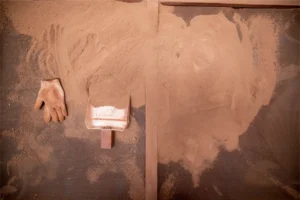
The story Roofing Tiles of a Maker of eco-friendly
Did you know who the manufacturer of eco-friendly roofing tiles in Bangladesh is? He is none other than Farid Hossain who has set a pace in roofing tiles innovation. Having a diploma in ceramics, he had an illustrious career for 10 years between 2006 and 2016. But he got immersed in thought about seeking certain scope to develop entrepreneurship as he never felt comfortable at a job under any employers. Mr Farid Hossain was born and brought up in a village in central Gazipur district adjacent to Dhaka city. He used to dig into different innovative ideas and feats. Now in his 40s, he used to visit his neighbourhood since his boyhood only to see potters busy crafting ancient earthenware round the clock. That craftsmanship interested him in the making of eco-friendly traditional clay products. His inborn passion is imprinted throughout his life and career. After obtaining a higher secondary degree, Mr Farid took a four-year diploma degree in ceramic from Bangladesh Institute of Glass and Ceramics in 2006. Later, he obtained a Bachelor’s degree in electrical and electronic engineering from International University of Business Agriculture and Technology amidst his pursuit of a job. The artisans, who crafted different ancient clay items at his village alongside his long career in the ceramic industry, enthused him greatly to contribute to the growth of the sector as a prolific entrepreneur. Mr Farid, who has a four-member family, has a profound love for soil and he keeps on exploring his passion for the motherland. Mr Farid believes human beings are made of soil and they cannot deny it anyway. So, he always tries to explore the strength of fertile soil. Building up a connection with old-age traditional ceramic items, Mr Farid is poised to reshuffle his plan through expanding his business each year beyond the country and reaching out to people across the globe. His factory now produces an estimated 5,000 units of tiles daily, thus amounting to 750,000 units yearly. His fully eco-friendly products are free from harmful oxide. Although Mr Farid was willing to set himself up as an entrepreneur since his early job career, he could not start it because of an acute shortage of working capital, according to this self-made man. His forefathers had been involved in farming for ages. “So, it was a Herculean task to dream of being an entrepreneur as traditionally and typically most of us in society prefer working under employers as it is regarded as better, secure and protected,” Mr Farid said. Process of Making Roofing Tiles Only soil and silicon oil are the vital components for making tiles. Mr Farid collected soil from his localities and oil from some local importers. There is no dearth of soil in the market. Primarily, he used fuel wood to manufacture tiles. But he now uses a reticulated gas system to halt carbon emissions. Mr Farid, however, seeks piped gas as the existing system is too costly that triggers higher prices of tiles. To get a finished product, Mr Farid first collects suitable soil. Then he does the processing in the production line, including crushing, grinding, screening, moisturising, forming, drying up by a dryer, finishing by kiln and sorting to packing. Mr Farid’s Major Innovations Mr Farid was inquisitive about producing engineering products that also inspired him to develop two vital machines, which are being used to shape roofing tiles at his own factory. He used indigenous technology and locally available equipment to develop them. The machines are cheaper than the imported ones. Through these innovations, Mr Farid has been able to start his business with a paltry capital. Why Market Growing Although roofing tiles are costlier than any traditional rooftop solutions, people are becoming more interested in installing the artistically good-looking system as it keeps houses cosy, cold and comfortable in addition to its heat-proof condition. The system has a deciding effect on the appearance of a building and also shields houses or buildings from rain, noise, wind, fire and hails. Roofing tiles also reduce energy consumption. Local and Foreign Market Expansion In 2017, Mr Farid set up his enterprise with Tk 0. 2 million and 12 workers on a 20 decimal of land after amassing the funds from selling his wife’s ornaments and leasing out his father’s land without taking anything from banks or any state support. After the initial teething trouble, his business has now an outlay of over Tk 30 million with 32 employees working on an acre of land amid Covid-19 fallout and a possible recession mainly caused by the ongoing Russia-Ukraine war. According to Mr Farid, the domestic market could have expanded further with state patronage. Even local entrepreneurs could have grabbed a slice in overseas markets as the global market size is rising fast due to its aesthetic beauty and eco-friendliness. He attributed market growth to multiple state initiatives for infrastructure development in recent times. The global roofing tiles market size was valued at $30,400.0 million in 2019 and it is projected to reach $41,354.9 million by 2027, registering a compound annual growth rate (CAGR) of 5.20 per cent from 2020 to 2027. The market size is growing as the state focus on and public mindset towards eco-friendly household products are shifting fast. Local factories are grabbing nearly 60 per cent of the market, whereas China, India and Vietnam are sharing 40 per cent. Local market leaders include Mirpur Ceramics Limited, Tradexcel Ceramics Limited, and Conforce Ceramic and Refractories Limited. Mr Farid has called upon the government to take effective measures to curb the rising import of roofing tiles and patronise the local industry for the sake of further growth of the nascent ceramic industry.
Read More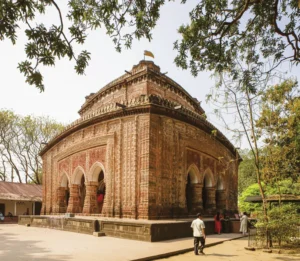
The Tales of Terracotta Temple
A embodiment of the weirdly mysterious vibe that ancient structures often procure, Kantaji is undoubtedly the most colossal example of terracotta architecture in the region. Often, it’s the grandiosity or beauty of religious space and/or the stories attached that give an inexplicable feeling of peace to believers, and even to the visitors when they enter the space. Kantaji is not only a Hindu temple dedicated to Lord Krishna, but this sublime piece of architecture meditating on the banks of Dhepa for three centuries, consisting of almost 15,000 pieces of delicate terracotta on its skin, and has its list of stories and myths attached as well. These, when combined, give the space a mysterious character that it tenderly holds. But even if you do not know much about Kantaji, being present at the site at the right time when the wind charmingly flows, you will understand that the atmosphere has suddenly taken you to a place where you do not know how old the time is. The story of Kantaji’s initiation blooms from a bud consisting of conspiracies. It was 1862, the reign of the last mighty Mughal ruler, Aurangzeb, the youngest son of Shahjahan who built the iconic TajMahal. It was also a time when the zamindari of the Dinajpur region was going through a rough phase. The then zamindar, Prannath Roy, was perched on the throne after the consecutive deaths of his two elder brothers. Unlike many of his contemporaries, Prannath was loved by his people. And within a few years, just like many other royal rivalry stories straight out of a novel, enters King Raghbendro Roy, zamindar of Ghoraghat. There was already a rivalry in existence between both the zamindar families of Dinajpur and Ghoraghat. Raghbendro plotted a conspiracy to take advantage of the situation and sent a letter to Aurangzeb, blatantly lying that Prannath had perched on the throne by killing his two elder brothers, Ramdeb and Joydeb. That he was not only a tyrannical zamindar, but also refused to obey the authority of Delhi’s ruler, Aurangzeb, and was irregular in sending the required tax. The plot worked. A furious Aurangzeb ordered a show cause and Prannath eventually traveled to the palace of the emperor with gifts. A while after they met, coming across the integrity of the kind-hearted Prannath, Aurangzeb realised his mistake and, out of kindness, gave Prannath the title of King and ordered him to carry on his usual zamindari of Dinajpur. The story of Kantaji’s initiation blooms from a bud consisting of conspiracies Here comes the most interesting part. As a devotee to Lord Krishna, when Prannath got out of this danger and received the title of King, as a devotee to Lord Krishna, he decided to do something out of love for his religion. While on his journey back to Delhi, he decided to visit Brindaban for a while and set up a Krishna temple in Dinajpur once he returned. During his stay in Brindaban, he was blown away by a beautiful Krishna statue, and he wanted to bring it back home for the temple he wanted to build. But, as said, he had a dream where Lord Krishna himself appeared and asked him not to take this particular statue as the feelings of the local devotees would be hurt. Instead, Krishna was said to have told Prannath to be patient because he was about to receive a Krishna statue identical to the one he desired during bath the next day, and that Krishna would travel with him on that statue. Soon after the divine dream, the next day, as Prannath was having his bath, he found an identical Krishna statue, beaming with its entire godly aura. This is what Prannath brought back Dinajpur to install in Kantaji. But that mysterious Krishna statue is not there anymore. It is believed that after the massive earthquake of 1897, when the temple was badly damaged and lost its original nine spires, for which it was also called “Navaratna”, the statue was stolen from the disastrous site. There is also a myth that Aurangzeb himself ordered Prannath to set up a Krishna temple, whereas Aurangzeb was a Muslim. And speaking of that, the architects Prannath commissioned for Kantaji were all Muslims. You can still find the brick mosque they built for themselves a few minutes distance from Kantaji. Another interesting fact is that just outside Kantaji’s premise; you will find an abandoned temple-like structure. That was the temporary temple that Prannath originally built, but he eventually wanted a grander one, hence he began the construction of Kantaji in 1704. Sadly, Prannath could not live long enough to witness the completion of this terracotta masterpiece. Every inch of the walls is embedded with a highly sophisticated opera of art, composed in a rhythm. Beautiful floral designs, amazing stories depicted from Ramayana-Mahabharata, and many extremely fascinating contemporary local stories, etc. Perhaps the most fabulously interesting ornamentation on the skins of Kantaji would be the depiction of erotic scenes. All these stories say so much about spirituality, about what is pious and what is not, about togetherness between human beings of different religions and so on. King Prannath Roy passed away in 1722. His adopted son, Ramnath Roy, took charge of the throne and, according to the last wish of his beloved father, finished the construction in 1752, which stands till date. With no tickets required, the temple is open at any time of the day and is open to all, regardless of faith. It’s one of the major archeological sites in Bangladesh.
Read More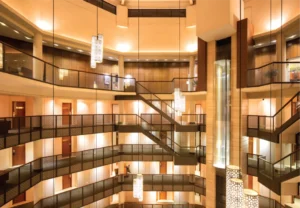
Pursuing Prestige: The Radisson blu water garden
We rarely find a person acquainted with Dhaka who has not heard the name Radisson Blu Dhaka Water Garden or has not seen the iconic pitched roof building on the airport road. For years the name has carried the essence of luxury, exclusivity, and prominence to mass people. Just paying a visit to Radisson is enough to make someone feel special. Since 2006, Radisson Blu Dhaka Water Garden has been a prominent name in the luxury hotel market. The luxury and exclusivity with a touch of nature make it the perfect blend for people who want to experience proper five-star hospitality in Dhaka. Radisson Blu Dhaka Water Garden is between the city center and the airport area, making it easy to locate and access, especially for international travelers, including most of the target group. Being situated away from the urban chaos gives it a spacious room to breathe, making it worth battling through the Dhaka traffic to spend quality time with the city dwellers. The building stands as an icon of a five-star hotel in Dhaka city amidst water bodies and green landscapes. The whole area comprises 7-acre of land, but the building stands only on 2.5 acres, leaving the rest to embrace the natural landscape. It becomes hard to miss due to the fusion of Modernist architecture with the nostalgia of our traditional pitched roof. The project is a partnership between the property owner, Sena Hotel Developments Limited, and the multinational corporation, Radisson Hotel Chains, which provides quality management. International and local consultants worked together to develop the building by the brand criteria. Every element, from service, food, room amenities, comfort, building materials, and local experience to security and safety, is carefully designed to provide guests with a meaningful and unforgettable experience. The grand ramped driveway is one of its kind in this hotel. It is rare to find such a spacious approach in Dhaka due to the congestion and scarcity of land. One can see the unhindered view of the cityscape of Dhaka from the drop-off area, overlooking the wide airport road. After a careful security check, the ceiling height change to the lounge is awestriking. This open salon is visible from all floors above. Its height has been scaled down to human proportions by chandeliers of various sizes and height levels, which creates a more inviting atmosphere. The visual drama of the lounge and its modernist design, circular shape, and strategically placed features give the space an impressive appearance. It provides an interactive space for both the visitors and the occupants. The main entrance is from the first floor, and all the public functions comprise the ground floor and first floor, making it easily accessible without any contact with lift buttons or door handles- which proved to be highly useful during the Covid-19 situation. Radisson Blu Dhaka Water Garden, is one of the prominent names in arranging national and international high official Government and private events, particularly in terms of its security and hospitality. They offer versatile conference rooms that can accommodate up to 1,100 attendees, ensuring the success of events of all sizes covering approximately 3,000 square meters. The Grand Ballroom’s 990 square meters can accommodate a memorable wedding celebration or buffet. The Utshab Banquet Hall is available for product-launching-style events. Several boardrooms are also accessible for personal meetings, training courses, breakout sessions, and other smaller events. Healthy food over taste is a primary priority at Radisson Blu Dhaka Water Garden. The four restaurants and one bar named Blaze Entertainment Lounge & Bar, try to maintain the international standard in every dish. One can enjoy fresh, wholesome Bangladeshi cuisine at ‘Sublime’- a restaurant perfect for a romantic evening or an important client meeting. ‘The Water Garden Brasserie’ can be a perfect option for breakfast, lunch, or dinner, and choose from the international buffet and cook-to-order stations. ‘Spice & Rice’ offers a contemporary twist on Asian food, and ‘Chit Chat’, a deli café, can satisfy the cravings for savory snacks and sweet treats. They also have a dedicated space for smoking called ‘the Cigar bar’. The hotel business is going through a period of transition. The market has been divided into subsets to cater to a wide range of potential clients. Radisson Blu Dhaka Water Garden strives to appeal to locals and tourists by incorporating local cultural elements into its decor and the standard they promise. Radisson Blu Dhaka Water Garden offers accommodation services with its 200 five-star standard hotel rooms and suites. All the rooms have a balcony that offers stunning views of the hotel’s pool, rich landscape, and bustling city streets. In addition, they offer non-smoking floor services for the convenience of their customers. A significant feature of this hotel is the abundance of positive natural light seen throughout. At different times of the day, the play of light and shadow produces contrasting yet complementary effects. The garden, pool, and pond create sublime atmospheric peace. The pond area’s natural splendor lies in the fact that it has been preserved in its original setting, thus enhancing the genuineness and significance of the overall experience. The significance of this pond is enhanced by the jogging path that circles it. The open lounge area next to the pool, surrounded by organized nature, is a beautiful spot to spend some quiet time in the fresh air. The entire garden is planned such that there are always blooms to be seen, no matter the time of year. Radisson Blu Dhaka Water Garden, tries to encourage energy conservation and an eco-friendly environment. They reduce water waste by rainwater harvesting. The hotel promotes low and efficient water and electricity use by creating awareness whenever possible. They utilize as much natural light as possible indoors, given that most of the space is outdoors. The day light-sensitive technology used in light fixtures ensures minimal or no waste of energy. Radisson Blu Dhaka Water Garden promises to provide the best when it comes to service. However, finding skilled human resources who can meet the
Read More
Ceramic Industry will be Sick if Gas Price Hiked
BCMEA REPORT When the world economy is in turmoil due to the effects of the Corona virus and the Russia-Ukraine war, and the Bangladesh economy is in the grip of inflation and runs risk of recession but expecting to make a rebound, the process of raising gas and electricity prices has started in the country. A proposal is made to increase the price of gas by 117 per cent and that of electricity by 66 per cent. Six gas distribution companies have applied to the Bangladesh Energy Regulatory Commission (BERC) to raise the tariffs. The BERC held a public hearing on 21-24 March 2022. Its technical committee has approved a 20 per cent hike in gas price and a 45 per cent increase in electricity wholesale price. However, the country’s industrial entrepreneurs said if the price of gas is raised again at this point in time, the country’s industrial sector will lose its competitiveness. Exports and employment will be challenged. The country will be filled with foreign products. Mr. Irfan Uddin, General Secretary of the Bangladesh Ceramic Manufacturers and Exporters Association (BCMEA), vehemently opposed the move to increase gas prices, saying fuel costs account for 20 to 22 per cent of the total expenditure on ceramic products. Ceramic is essentially an energy-dependent and labour-intensive industry. Now, if the price of energy or gas increases, the cost of production will increase. But it will not be possible to sell ceramic products at higher prices. Such a situation will make many factories sick and reduce employment. Some may also default in repaying bank loans. “This will be the eighth time in the last 10 years that the government has planned to increase gas prices by an average of 117 per cent. Another hike will raise production cost by 18-20 per cent.” He said the price of gas had been increased more than once earlier with a pledge to resolve the gas crisis. In the past 10 years, the price of gas has been raised by 400 per cent, with promise every time of uninterrupted supply and proper pressure of gas. However, that did not happen so far. So, the gas price should not be raised without implementing the pledge. Moreover, while Titas made a profit of Tk 1,500 crore in the last four years, there is no moral basis of increasing gas price. On the other hand, system loss of Titas is still 12%, where 1% system loss is equivalent to Taka 300 crore. Mr. Irfan Uddin further said the country’s ceramic sector is paying more than Tk 1,200 crore in gas bills annually. For half of a day there is very low pressure of gas or even no gas and as a result, most of the kilns have to be shut down and running products in these kilns are wasted. According to the conditions, gas will be supplied at a pressure of 15 PSI, but it dropped from 3 to maximum 5 PSI after 11:00 am to 11:00 pm. Almost 50-60 per cent of the production capacity of many factories remain utilised due to the gas crisis. Titas is taking bills with ‘air’ instead of gas. In order to deal with this situation, Titas authorities are importing EVC (electronic valve control) meters but not supplying them to the factories. He said most of the factories had to set up captive power plants at a huge cost. The entrepreneur pointed out that some of investments are not coming to the country only because of the energy crisis. Ceramic makers urge Govt. not to raise tariffs The Bangladesh Ceramic Manufacturers and Exporters Association has urged the government not to hike the price of gas. “This will be the eighth time in the last 10 years that the government has planned to increase gas prices by an average of 117 per cent,” association president Mr. Shirajul Islam Mollah told a press conference recently. He urged the government not to increase the price of gas used in manufacturing ceramic items to protect the gas-dependent industry and thus help it stay competitive in the global market. He mentioned that, in 2019, production cost of ceramic products per kilogram increased by 10-12 per cent on average as a result of about 33 per cent increase in gas prices. Another hike will raise production cost by 18-20 per cent and will also have a cascading effect on all areas, transportation cost, he added. Mr Shirajul Islam said they need to keep kilns or chimneys turned on 24 hours a day in a ceramic factory. Even if gas pressure goes down frequently, they have to pay bills for full pressure. “We demand immediate installation of EVC meters to stop injustice in gas supply.” He said ceramics is one of Bangladesh’s largest industries. “We need to keep kilns or chimneys turned on 24 hours a day in a ceramic factory. Even if gas pressure goes down frequently, we have to pay bills for the full pressure. We demand immediate installation of EVC meters to stop this injustice in gas supply.” – Mr. Shirajul Islam Mollah CAB calculations have shown that the price of gas can be reduced by 16 paisa more per unit. There is scope to reduce gas price: CAB Professor Shamsul Alam, an energy adviser at the Consumers Association of Bangladesh (CAB), said the gas distribution companies were all profitable. At present the people cannot afford to pay extra. And companies have failed to justify price increases. CAB calculations have shown that the price of gas can be reduced by 16 paisa more per unit. The crisis is not over yet because of Covid-19. At a time when subsidies were supposed to increase, there was no provision for subsidies. About Tk 6,000 crore was supposed to be subsidised, but so far only Tk 3,000 crore has been given. Although the government has said no to subsidiesm the BERC technical committee unjustly calculated it and recommended a 20 per cent price increase. He said the government is taking
Read More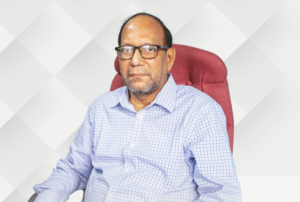
Engr. Md. Faruque Ali How a Ceramic Icon made his Journey
Md. Faruque Ali’s journey is a long and memorable one but it never stops. It’s his journey in the ceramic industry that started in the 1980s – three decades after the inception of ceramics in Bangladesh. He is still a living icon in the sector. Graduating in engineering, Mr. Faruque Ali came to Dhaka in search of a job, and ended up at Power Development Board (PDB). He was posted at Kaptai, Rangamati. It was a lonely job then and two months of service there felt heavier than a decade. So he decided to switch jobs and joined the insulator and sanitary ware industry of Bangladesh Chemical Industries Corporation (BCIC) as an assistant engineer. He worked closely with the production team and his daily routine was to list the machines, know their names, learn how they worked, and how sanitary ware and insulators are produced. Thus came the commencement of Mr. Faruque Ali, now a delightful man with profound experience in the field, who has turned into a true patron of the ceramic industry. In an interview with Ceramic Bangladesh on a Friday morning, he, currently Executive Director at Shinepukur, shared the insights of his journey. Ceramic Bangladesh (CB): Why did you choose the ceramic sector for your career? Faruque Ali (FA): Initially I wasn’t planning to work here. But during my first posting at BCIC, I realised the whole process of production is very amusing. I found it interesting to see how we are producing elegant ceramic products using simply, clay. I instantly fell for the whole process and wanted to remain in the industry. CB: How has your journey been at Shinepukur? FA: I had been in the insulator department for four years. I knew a chemical engineer from the production team there who suggested for the two of us, to join Monno’s new tableware factory. We were in a dilemma when it came to changing from the public sector to the private sector and didn’t think it would be a good idea. So my companion went to join Monno at the time and I did it a bit later. I was there for nine years, took a break for two years and joined Shinepukur afterwards at the end of 1996. I’ve been at Shinepukur for 25 years now. CB: Regarding technological advancement, do you think the industry is moving forward? FA: There are different grades – earthen ware, stone ware, porcelain, and bone china. The modern face of earthen ware is stoneware in the table ware sector. Porcelain and bone china are even better versions. All these products need technological support to come to shape. And the necessary technology was mostly adapted in the European industry and came to us later. Automation came about mainly because we had lack of manpower. But the basics for the body glaze and formula are still the same. Technology has made it all seem much less complicated. For example, imitating the glaze and the formula consistently is remarkably done by the advanced technology we have now. And machine dependency has grown now more than ever. CB: What would you say is the future of the ceramic industry? FA: Ceramic products are a necessity and a fashionable item. The formula of the products is made to be reaction-free and pro-health/safety. When it comes to health, porcelain and bone china are the safest compared to kasha and melamine. Moreover, after 2001 lead and cadmium restrictions have been introduced. These products are the safest because they comply with all the health and safety policies. The future is moving towards similar products. ‘In 22 years of working in the ceramic industry, no two problems I faced were alike. We faced different challenges every day and had to come up with a unique solution for each individual problem we encountered.’ CB: What inspired you to keep going when things got hard? FA: There is a story to best answer this question. Around 2015/16, I worked with a man who said to me ‘In 22 years of working in the ceramic industry, no two problems I faced were alike. We faced different challenges every day and had to come up with a unique solution for each individual problem we encountered.’ My ceramic journey has been likewise. CB: Shinepukur won several export trophies; what is the reason behind Shinepukur’s continuous winning? What are your expectations for Shinepukur’s future? FA: It was the collective effort from everyone, starting from the workers to the top level. And in Shinepukur we are always planning to move forward with our ideas. The team works diligently, and we look for advancement every step of the way. Written by Chisty Rahim
Read More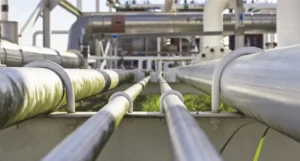
How BERC Can Rationalise Gas Price
The proposals put forward by Petrobangla companies to the Bangladesh Energy Regulatory Commission (BERC) for a 117 per cent increase in the price of natural gas supplied to various categories of subscribers on the plea of the LNG price spiral in the spot market. As a statutory body, the BERC is mandated to determine fuel and electricity tariffs considering all aspects of price structure, efficiencies of different actors and protecting the interest of consumers. In the backdrop of executive authority in administering energy prices different stakeholders have emphasized a fully functional BERC. Because everybody knows BERC is not an extension of bureaucracy of the government. The recent price hike proposal has been tabled at a time when, amidst the Covid-19 pandemic, users of gas – industrial, commercial and domestic – are suffering from chronic shortage of gas supply. The President of Bangladesh Ceramic Manufacturers and Exporters Association (BCMEA) Md. Shirajul Islam Mollah complained about paying for ‘air’ supplied instead of gas. Many domestic users have to use alternate fuel. Gas deficit was there for a long time but from mid-December 2021, RLNG supply came down due to a technical glitch. Petrobangla companies supply 2,850 mmcfd against a coincident peak demand of 4,200-4,300 mmcfd. Some 78% of the supply comes from local source (Petrobangla companies operated fields and International Oil Companies), 17% from RLNG purchased under long-term contract and only 5% from spot purchase. No change of price has been reportec for 95% of the gas supplied. Only for this 5%, there has been price impact and that too was from a few cargoes purchased at higher price. For this, there is no reason why Petrobangla can submit a proposal for 117% increase of gas price. Petrobangla supply has come down from 2,760 mmcfd to below 2,350 mmcfd. There has been hardly any effective steps by the Petrobangla companies to augment gas production from own fields. Even moves for maintaining production through secondary and tertiary recovery are slow. We are not mentioning about failure in expediting exploration for gas in onshore frontier areas and offshore. Consequently, proven reserve of gas is fast depleting and many are apprehending that major depletion may trigger from 2023 and local production may even deplete below 2,000 mmcfd. The government has taken steps to import LNG by setting up floating storage and regasification units (FSRUS) in 2010. Under business as usual, such an FSRU usually takes 18-24 months to come into operation. But for Bangladesh, the first one came into operation in 2018 followed by another one in 2019. These two together has a capacity of supplying 1,000 mmcfd. At peak, they supply up to 750-800 mmcfd. Petrobangla after prolonged negotiations with Qatar and Oman could conclude long-term contracts for supplying up to 75-80 per cent of LNG supply. The remaining supply came from spot market. The government could not take advantage of very low LNG spot price during early stages of the pandemic. It has shown lack of experience of price hedging cr future purchase. As such Petrobangla ran into crisis as soon as LNG price at global market skyrocketed. Poor Sectoral Management and Corruption Added to Crisis Apart from lack of perspective planning for exploration and development, the Petrobangla companies could not arrest rampant theft and pilferage of gas from hundreds of thousands of illegal connections, illegal use of a section of legal users through meter tampering, and meter bypassing. A section of corrupt officials is engaged in the process. About 8-10 per cent of 300 mmcfd gas allegedly remains unaccounted for, causing revenue losses. This also makes distribution system unsafe as accidents prove. Moreover, Petrobangla and companies have huge overhead expenditures for heavy management. They lack adequate technical persons in boards and this goes against the provisions of Company Act. BERC can police against such irregularities by carrying out technical and management audit. By controlling systems loss, inefficiencies and colossal wastage, it is possible to reduce gas deficit. Even a 50 per cent success could offset the requirements of gas price at this critical stage when Bangladeshi industries are struggling to retain competitiveness. What BERC Can Do? It appears that the present catch22 situation with gas price has arisen from about 200 mmcfd LNG import from the global spot market at exorbitantly high price. It is well known that about 200-250 mmcfd gas goes unaccounted for in the distribution system. BERC must advise its gas distribution licensees and Petrobangla to address the issue. BERC should ask Petrobangla to seek NBR for adjusting tax, Vat and import duty of primary fuel. Petrobangla must be advised to ensure that all gas and energy companies are governed strictly in accordance with the relevant act. Offficials who are included in the company boards, cannot claim additional remunerations and benefits. BAPEX has innovated Gas Development Fund (GDF) out of gas sales proceeds for exploration and development of petroleum resources. BERC should make gas consumers know how and where this fund has been used. Bangladesh has laws, rules and policies for regulating electricity, gas and other utility agencies. BERC should monitor and overview ccmpliance. A well-crafted reporting format with all mandatory requirements can be developed for utilities to prepare and submit to BERC on monthly basis. Based on these reports, BERC can assess the performance of licensees and whenever necessary can carry out auditing. BERC can set key point indicators (KPI) as performance metrics. Among others, system loss and account receivables must feature there. Roles of Stakeholders in Enhancing Efficiencies All stakeholders have roles in creating efficiencies and eliminating illegal use of fuel and electricity, and other utility services. Regulators usually retain the right to create provision for licensees for taking permission for making major investments in infrastructure development. If that could be done, many less priority investments and wastage could be avoided. Some over ambitious projects of BAPEX and over investments of GTCL could be avoided if BERC could review these beforehand. BERC should have a team of qualified and trained energy auditors for carrying out audits
Read More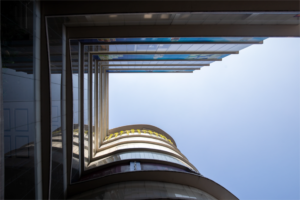
Developers can offer affordable housing for all, should Govt. allot land : REHAB
Interviewed by Rafikul Islam Alamgir Shamsul Alamin says the UN goal of leaving no one behind won’t be attained if people remain homeless. In view of scarcity in housing facilities in both urban and rural area of Bangladesh, it is quite a complicated task for the government alone to provide housing for all. So, here comes the contribution of the private sector to ensuring affordable housing for all. “We are keen to support the government here but land has to be allotted by developers to facilitate construction for affordable accommodations,” President of Real Estate and Housing Association of Bangladesh (REHAB) Alamgir Shamsul Alamin said in an exclusive interview with Ceramic Bangladesh. The demand for housing is going up in the country as the population is increasing. The country has a vast areas of khas land, which, he argued, can be utilized for building homes at reasonable costs. The REHAB leader insisted that special fund should be created under the national budget to help low-income group of people to own house. Mr Alamgir Shamsul Alamin, serving REHAB for the fourth time as its President, mentioned that since its inception in 1991, the REHAB has been playing an important role in the sector and contributing to economic development. The real estate sector is expanding gradually, thanks to the economic growth under the leadership of Prime Minister Sheikh Hasina, he pointed out, “But we had to deal with many problems in the recent past. The Covid-19, the Russia-Ukraine war, and the price rise of construction materials hit hard the sector. Now we are trying to go ahead overcoming all these challenges,” the REHAB president said. The REHAB has nearly 1,000 members and there is a total of around Tk 1200 billion investment in the sector. “We have 269 linkage industries including rod, cement and ceramic products. Around 4 million people are directly engaged in the sector,” he added. Ceramic Bangladesh (CB): What is your consistent success in integrating and strengthening REHAB? Alamgir Shamsul Alamin : I have been elected the REHAB’s President for the fourth time. I am serving the organisation with reputation. I am also a Director of the Federation of Bangladesh Chambers of Commerce and Industry (FBCCI). After becoming the REHAB President, I have contributed much to the sector, such as reducing registration costs, and legalising undisclosed investments. As the President, I have to maintain a lot of issues of the REHAB. I try to resolve the problems of our sector. I am always thinking about the future of our industry. CB: How did you engage in trade body politics? Alamgir Shamsul Alamin: I wanted to be at the top of domestic trade bodies so that I could influence trade policies/rules. Business is our main goal. Generally the business leaders help policymakers to make policy. If we can’t play role here, we don’t have personal issue. So, we think always to develop organisation and sector as well. Actually it is tough to do business if we can’t bring facility for the sector. If I can contribute here, our business would grow. Besides, I obtained degree from abroad so our thinking is different compared to others. So, our contribution should be counted in economy. In such a context, I engage myself in the trade body politics. CB: What are the current challenges in the real estate sector? Alamgir Shamsul Alamin: Real estate is a big and complex sector. It is a very challenging business in Bangladesh. There are different classes of business in the country. Many segments have different challenges and demands. Like every other sector, there are some good and bad businesses in real estate. Sometimes developers can’t complete projects when clients don’t pay properly. Sometimes projects are not completed due to developers’ negligence. It’s tough to meet all of the challenges. As the leader, I have to take care of these issues. Our problems were at peak after the Covid-19 pandemic made landfall in Bangladesh. Amid the challenges, we managed to save our sector by working together. All had to understand that the situation was not under our control. It was not easy to satisfy customers and developers both. But we did that successfully. Being the REHAB President, I have resolved many of them by discussing them with the government and other stakeholders. Meanwhile, flat prices went up 30 per cent due to price-hike of raw material. And it has impact on our costing. So, prices of apartments go up – 30 per cent a year, which is a big challenge for the real estate sector. After becoming the REHAB president, I have worked hard to contribute as much as I can. All I think about is further development of our sector and its future. CB: Would you please tell us something about the success story of your own business? Alamgir Shamsul Alamin : Now, I am engaged in multiple businesses. Actually, I entered into business through my family hand. I was born in a family of businessmen. My father was a well-known businessman back in the Pakistan days. So, I always dreamt of becoming a businessman. Jute, tea, leather, textiles, and transportation were our primary business. We got into the real estate business in 1995. During my student years, I became involved in politics. I studied in several countries, including Scotland, the United Kingdom, and the United States. On completion of my education, I returned home. And, I maintained the family business by expanding and diversifying. Our business has grown 10 times. I want to ensure further growth in future. Now, I plan for a new joint venture investment of Tk 10 billion in the IT sector. CB: What are the current projects of Shamsul Alamin Real Estate Limited (SARE)? Alamgir Shamsul Alamin: The SARE is a sister concern of Shamsul Alamin Group. I am Managing Director of the company. We have a good number of projects which are ongoing at different sites of Dhaka. Our ongoing projects are Alamin Tonmoy at Baridhara Diplomatic Zone; Alamin Angur at
Read More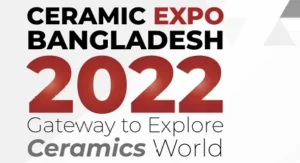
Ceramic Expo Bangladesh 2022 Getway to Explore Ceramic World
In today’s globalised world, trade is considered the lifeline of a nation. Not only does it contribute to flourishing an economy, but it a so allows cultural integration promoting enrichment and development at both micro and macro level. It allows for technology transfer, presenting the nations lagging behind with opportunity to gain momentum for attaining growth. And the global community acknowledging its significance and impact has devised various tactics to encourage trade. To this end, international exhibitions have proved to be one of the most fruitful approaches time and again. The international community lauds and celebrates such exhibitions that bring industrialists from different corners of the globe onto a common platform, for a common purpose, promoting trade. In Bangladesh, the ceramic industry is one of the burgeoning manufacturing sectors. As the country experiences steady economic growth and urbanisation, the local demand for ceramic products too continues to grow. Catering to 75 per cent of the local demand, the sector also exports quality products to many countries, thanks to its exquisite designs and multifarious functionalities. The industry has seen production growth of 200 per cent in the past 10 years. The growth trend is an indication of the industry’s potential to be one of the top foreign exchange earners in the country. The total investment, both local and international, in the sector is about US$1.58 billion with tiles accounting for 62 per cent, tableware 23 per cent and sanitaryware 15 per cent of the share respectively. The ceramic sector has made a significant contribution to the country’s GDP with exports worth over US$50 million in the 2020-21 fiscal year. Even though this export level is owed to the high-quality products manufactured here in Bangladesh, it is also owing to the flexibility in Minimum Order Quantity, capability to export in bulks and the GSP facilities that Bangladesh enjoys. The industry has seen production growth of 200 per cent in the past 10 years. The total investment, both local and international, in the sector is about US$1.58 billion with exports worth over US$50 million in the fiscal year 2020-21. Bangladesh ceramics have touched the lives of many high-profile users. It has carved its place in the Buckingham Palace of the Great Britain, the British Parliament, the Presidential Palaces of India and Pakistan, the Royal Palace of Bhutan and many more. Our global buyers from different parts of the world are: USA: Crate&Barrel, Libbey, Pottery Barn, Williams-Sonoma, Michael Aram, 10 Strawberry Street UK: Royal Doulton, Wedgwood, Portmeirion Group, Rosenthal, Goodfellows, Churchill, waitrose, Sophie Conran, Jersey Pottery, John Lewis EUROPE: ZARA Home, Monoprix, Villeroy & Boch, XXXLUTZ, loria, Rosendahl, LPP, Habitat, Taitu, H&M, Kasanova, Migros, Schonhuber Franchi Asia: Noritake, Good Earth, DLF, ICA, Pure, Westside, INV Home Currently Bangladesh exports to over 50 countries, which are: The USA, Canada, the UK, Germany, France, Italy, Sweden, Switzerland, Norway, Greece, Ireland, the Netherlands, Spain, Austria, Belgium, Denmark, Finland, Poland, Australia, New Zealand, Japan, Russian Federation, the UAE, Saudi Arabia, Kuwait, Egypt, Libya, Turkey, Jordan, Iran, Qatar, Oman, Syria, Lebanon, Pakistan, Sri Lanka, Nepal, India, the Maldives, Taiwan, Malaysia, Singapore, Brunei, Myanmar, Thailand, Indonesia, Argentina, Chili, Peru, Colombia, and Brazil. Bangladesh is exploring beyond the traditional usage of ceramics and tapping into a much wider array of applications, namely Advanced Ceramics. The value-added features of Advanced Ceramics allow it to be used to address issues like energy conservation, water purification, electronic and biomedical applications. Companies and universities are coming together getting deep into research and development to explore the potential of advanced ceramics as global market for these products is experiencing a high growth momentum which comes as an opportunity for the ceramics community. But to make use of this, it is essential to be exposec to the modern cutting-edge technologies used in production It is important to transfer technology on a global scale to meet the burgeoning demand for ceramics in all its forms. And to promote technology transfer and improve global trade performance, several international ceramic expos are held around the world. Advanced ceramics is also being manufactured on a mass scale which has a lot of potential not only in the markets but also in the lives of people. The 3rd edition of the state-of-the-art international trade fair and B2B platform for ceramic industries around the world, Ceramic Expo Bangladesh-2022 is scheduled to take place from 24-26 November 2022. This year the expo will be bigger and cover four halls of International Convention City Bashundhara (ICCBI on Purbachal Expressway, Dhaka. Living up to its motto ‘Gateway to Explore Ceramics World’, the Ceramic Expo offers just that to the industry. It attracts an impressive gathering of international manufacturers, suppliers, experts and delegates promoting trade. This year the expo will host 120 exhibitors from 20 countries who will showcase their finest ceramic products and top-tier technology emerging in the world of ceramics. Some 200 hosted buyers and 150 brands from both home and abroad will participate and about 500 delegates are expected to join from different parts of the world. Industry leaders like Akij, Sheltech, DBL, Stella, Mir, DLT, SACMI, CBC, Shinepukur, FARR, ABG, Astral, Bridge Chemie, Foshan, Floorex, Modena Technology, Monte Bianco, NJC, and Torrecid will showcase tiles, sanitaryware, tableware, advanced ceramics and machinery. There will be multiple insightful seminars and B2B meetings among local and international delegates on the advancement and potential of ceramics globally. In the next five years, about 20 new companies are in the pipeline to be introduced to this rapidly growing sector. Export is predicted to rise up to around US$100 million and investment will grow to become US$1.0 billion. The future of the ceramic sector in Bangladesh looks very promising in the coming years. Special investment is being made to enhance the skill-set of the workers involved in the ceramic sector. The use of modern technology also keeps on growing and so does the procurement of quality raw materials. Advanced ceramics is also being manufactured on a mass scale which has a lot of potential not only in the
Read More
CHARU-The Luxurious Sanitary Ware Brand
CHARU Ceramics has offered a new choice for decorating bathrooms in Bangladesh. CHARU has been able to make the use of luxury bathroom materialls easily possible go the mass people. Whereas it used to cost around Tk. 4,00,000 on an average earlier to build a luxurious bathroom, CHARU can supply the same quality of luxury products for Tk. 50,000 to Tk. 1,00,000 only. This is the great achievement of the Bangladeshi brand. CHARU Ceramic Industries Limited was incorporated as a company in March 2012 and started its journey from 2017 by producing world-class sanitary ware in the country. It is the first international major standard sanitaryware manufacturing plant in Bangladesh with the assistance of the best consultants from Europe and Asia. This sanitary ware manufacturer, certified by ISO 9001:2015, has collaborated with COTTO, one of the most popular brands in the world. Some 1,800 skilled workers are working in the CHARU Sanitary ware factory established in Madhabpur, Habiganj. The plant is equipped with state of the art technology such as robot glazing, high pressure casting, advance kiln and molder and the latest and advanced manufacturing machinery of sanitary wares from SACMI, UNIMAK and HEXIANG with production capacity of 1.5 million pieces a year. Machineries of the world’s most renowned companies such as Gaiotto, Riedhammer and Unimak are installed to produce the best quality of sanitary ware in CHARU Ceramic Industry. It is remarkable in the history of Bangladesh’s sanitaryware industry that CHARU manufactures one of the most internationally recognised sanitary ware brand ‘COTTO’ in Bangladesh with technical collaboration of Siam Sanitary Ware Industry Co. Ltd., Thailand. COTTO is helping it to achieve the best quality by providing technological support, knowledge transferring and trained employees. Currently, a wide range of water closet, wash basin, urinal and squat pan are produced by both the brands CHARU and COTTO – and these are manufactured in the country with utmost care and skills. CHARU ceramic wants to become the number one sanitary ware brand in Bangladesh with the finest products and efficient services. CHARU Ceramic Industries Limited has been set up initially to fulfill the domestic market demand for products and then to export. Manufacturing products of higher standarcs, CHARU gives the customers with proper value and extreme durability of the products. The products have unique designs and it upgrades products range every year with hot designs. CHARU is manufacturing products using the latest technology. While showing internationally recognised innovativeness and proving technological ability, flexibility and adaptability, CHARU can meet the demand of mass production. Interview with Managing Director Quality, Design and Plumbing services are the main pillars of CHARU’s success The name ‘Charu’ itself associates with the meaning of finesse. Although the local sanitary market in Bangladesh is still very young, the sector is growing rapidly, thanks to the growth of middle class, change in their taste and rapid urbanization process,” said Mohammad Shamsul Huda, Managing Director of CHARU Ceramics. He told Ceramic Bangladesh that the current market for sanitary ware in the country is in a range of Taka 1,000 crore to Taka 1,200 crore a year. CHARU owns 20 per cent of the market share, he said and added that because of the construction boom, this market is growing at a rate of 15-20 per cent every year. The demand for sanitary products is increasing in the villagesas well. And thedemand for commodes is increasing in the cities, he pointed out. The managing director mentioned that CHARU continues to compete with the imported foreign products of similar quality. However, CHARU is keeping an eye on the price so that it is more affordable than the imported products. Mr. Shamsul Huda said that although the annual production capacity of CHARU is 1.5 million pieces, its current production is 60 per cent of its capacity. It will increase to 80 per cent this year, he mentioned. However, production is also being affected due to the gas crisis. Mr. Shamsul Huda has about 40 years of experience in the business of sanitary products in Bangladesh. He got involved with this business by setting up Bengal Agencies in the early 1980s. At first there was the business of mosaic, granite marble and white cement. From the import-dependent trading business, he gradually developed the Great Wall Ceramics Industry, CHARU Ceramics, Elephant Brand White Cement and Siam-Bangla Industries in the country. the country. The bathroom fittings industry will also start soon under the group, he said. In all cases it has retained the international standard and taste. As a result, there is a huge demand for these sanitary products at home and abroad. However, due to increase in domestic demand, it can’t meet the full demand of the domestic market. CHARU and Great Wall products are being exported to countries like the US, India, Pakistan and the countries of the Middle East. It is especially in high clemand in the ‘Seven Sister’ states of north-east India. Participating in fairs in Qatar, Pakistan and India, this Bangladeshi company has recently received huge response, the managing director said. Mega projects like Rooppur Nuclear Power Plant, Matarbari and Payra Power Plant, Karnaphuly Tunnel and Metro Rail in Bangladesh have received huge supplies of CHARU, COTTO and Great Wall products. Talking about the success and popularity of CHARU, Mohammad Shamsul Huda said that CHARU is working jointly with the COTTO brand of Thailand. Dwelling on the shortage of designers in the sanitary ware industry, Mr. Shamsul Huda said that design is changing rapidly. “In order to increase exports, we have to create more diverse products and increase the number of designers in the country” he said. He added that to help brand Bangladesh’s own industry, the government should provide more assistance in this sector. “Number of ceramic institute should be increased. Emphasis should be given on finding world class designers by opening ceramic faculty in Art Colleges.” Tejgaon Ceramic Institute in Dhaka is not enough to meet the demand of the time, he said, adding that only diploma
Read More

